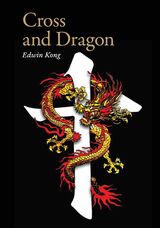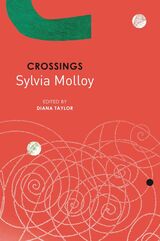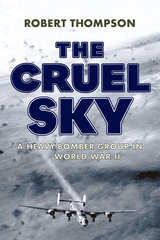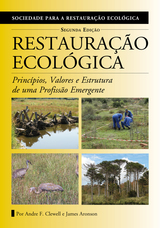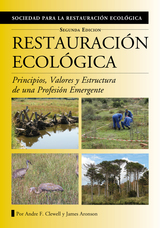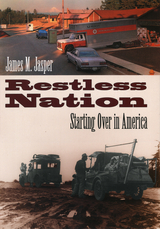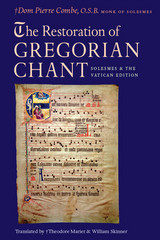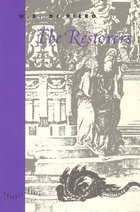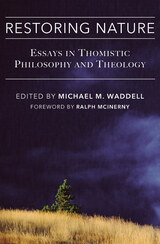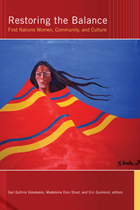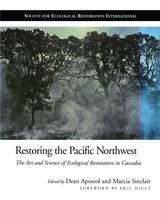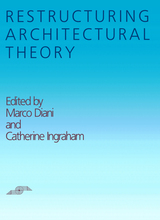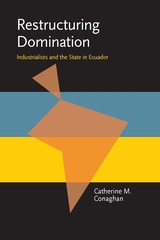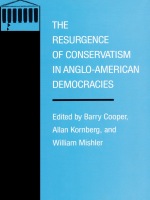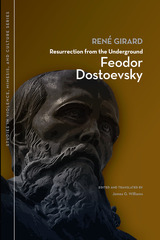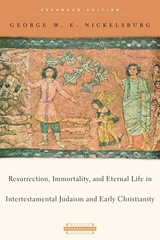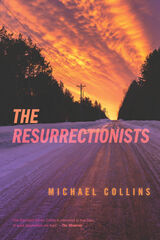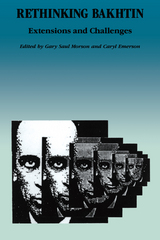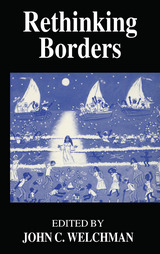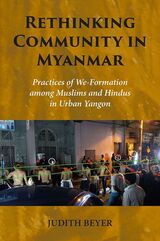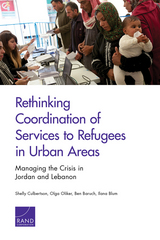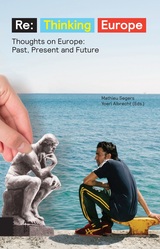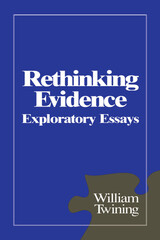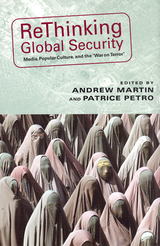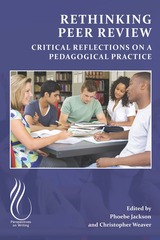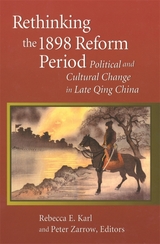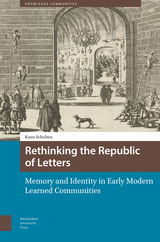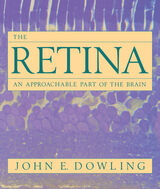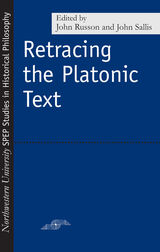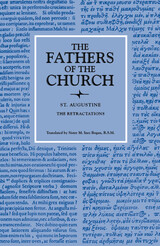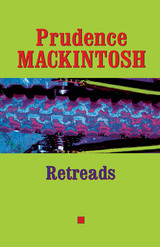Restauração Ecológica: Princípios, Valores e Estrutura de uma Profissão Emergente
Andre F. Clewell
Island Press, 2017 Publicado originalmente em 2007, Restauração Ecológica se tornou um livro seminal em seu campo. Esta edição completamente revisada e reorganizada apresenta desenvolvimentos e tendências atuais no campo por dois dos líderes mundiais em restauração ecológica. Disponível em por tuguês pela primeira vez, este novo ebook é um
recurso inestimável para praticantes e teóricos de diferentes origens, desde voluntários até cientistas acadêmicos e consultores prof issionais.
Restauración Ecológica: Principios, Valores y Estructura de una Profesión Emergente
Andre F. Clewell
Island Press, 2017 Publicado originalmente en 2007, Restauración Ecológica se volvió uno de los libros seminales en su campo. En esta segunda versión totalmente revisada y reorganizada, dos de los líderes en restauración ecológica presentan y comentan los nuevos desarrollos y tendencias en este campo emergente. Disponible por primera vez en español, este Ebook es un recurso valioso para practicantes e investigadores de muchas disciplinas, así como para voluntarios y consultores profesionales.
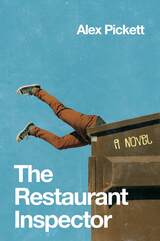 The Restaurant Inspector
Alex Pickett
University of Wisconsin Press, 2021 A mysterious illness is afflicting the residents of Millsville, Wisconsin—but that might be the least of their problems. Investigating the situation is Arthur Reilly, the county restaurant inspector who recently relocated from New York City following an unseemly scandal. When he gets sidetracked and falsely suggests a link between the outbreak and a local Albanian-run diner, the town descends into panic, chaos, and finger pointing. As the situation spirals out of control, county commissioner Janet Vosberg seizes the moment to position herself for higher office and newspaper editor Adam Bender aims to settle a long-simmering score. And what’s with the hot dog pushcart that recently appeared by the side of Highway 9?
This antic, raunchy send-up of small-town life gets deep into the minds and hearts of its characters and their entanglements. Alex Pickett exposes the fault lines in Midwestern Nice and reveals how corruption can take hold in even the most unlikely of places.
 Restaurant Republic: The Rise of Public Dining in Boston
Kelly Erby
University of Minnesota Press, 2016 Before the 1820s, the vast majority of Americans ate only at home. As the nation began to urbanize and industrialize, home and work became increasingly divided, resulting in new forms of commercial dining. In this fascinating book, Kelly Erby explores the evolution of such eating alternatives in Boston during the nineteenth century. Why Boston? Its more modest assortment of restaurants, its less impressive—but still significant—expansion in commerce and population, and its growing diversity made it more typical of the nation’s other urban centers than New York. Restaurants, clearly segmented along class, gender, race, ethnic, and other lines, helped Bostonians become more comfortable with deepening social stratification in their city and young republic even as the experience of eating out contributed to an emerging public consumer culture. Restaurant Republic sheds light on how commercial dining both reflected and helped shape growing fragmentation along lines of race, class, and gender—from the elite Tremont House, which served fashionable French cuisine, to such plebeian and ethnic venues as oyster saloons and Chinese chop suey houses. The epilogue takes us to the opening, in 1929 near Boston, of the nation’s first Howard Johnson’s and that restaurant’s establishment as a franchise in the next decade. The result is a compelling story that continues to shape America.
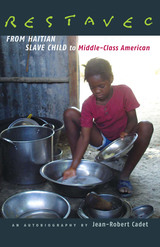 Restavec: From Haitian Slave Child to Middle-Class American
An Autobiography by Jean-Robert Cadet
University of Texas Press, 1998 African slaves in Haiti emancipated themselves from French rule in 1804 and created the first independent black republic in the Western Hemisphere. But they reinstituted slavery for the most vulnerable members of Haitian society—the children of the poor—by using them as unpaid servants to the wealthy. These children were—and still are—restavecs, a French term whose literal meaning of "staying with" disguises the unremitting labor, abuse, and denial of education that characterizes the children's lives. In this memoir, Jean-Robert Cadet recounts the harrowing story of his youth as a restavec, as well as his inspiring climb to middle-class American life. He vividly describes what it was like to be an unwanted illegitimate child "staying with" a well-to-do family whose physical and emotional abuse was sanctioned by Haitian society. He also details his subsequent life in the United States, where, despite American racism, he put himself through college and found success in the Army, in business, and finally in teaching.
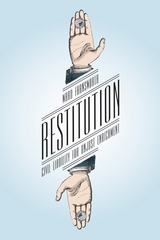 Restitution: Civil Liability for Unjust Enrichment
Ward Farnsworth
University of Chicago Press, 2014 Restitution is the body of law concerned with taking away gains that someone has wrongfully obtained. The operator of a Ponzi scheme takes money from his victims by fraud and then invests it in stocks that rise in value. Or a company pays a shareholder excessive dividends or pays them to the wrong person. Or a man poisons his grandfather and then collects under the grandfather’s will. In each of these cases, one party is unjustly enriched at the expense of another. And in all of them the law of restitution provides a way to undo the enrichment and transfer the defendant’s gains to a party with better rights to them. Tort law focuses on the harm, or costs, that one party wrongfully imposes on another. Restitution is the mirror image; it corrects gains that one party wrongfully receives at another’s expense. It is an important topic for every lawyer and for anyone else interested in how the legal system responds to injustice.
In Restitution, Ward Farnsworth presents a guide to this body of law that is compact, lively, and insightful—the first treatment of its kind that the American law of restitution has received. The book explains restitution doctrines, remedies, and defenses with unprecedented clarity and illustrates them with vivid examples. Farnsworth demonstrates that the law of restitution is guided by a manageable and coherent set of principles that have remarkable versatility and power. Restitution makes a complex and important area of law accessible, understandable, and interesting to any reader.
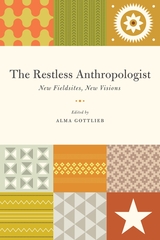 The Restless Anthropologist: New Fieldsites, New Visions
Edited by Alma Gottlieb
University of Chicago Press, 2012 What does a move from a village in the West African rain forest to a West African community in a European city entail? What about a shift from a Greek sheep-herding community to working with evictees and housing activists in Rome and Bangkok? In The Restless Anthropologist, Alma Gottlieb brings together eight eminent scholars to recount the riveting personal and intellectual dynamics of uprooting one’s life—and decades of work—to embrace a new fieldsite. Addressing questions of life-course, research methods, institutional support, professional networks, ethnographic models, and disciplinary paradigm shifts, the contributing writers of The Restless Anthropologist discuss the ways their earlier and later projects compare on both scholarly and personal levels, describing the circumstances of their choices and the motivations that have emboldened them to proceed, to become novices all over again. In doing so, they question some of the central expectations of their discipline, reimagining the space of the anthropological fieldsite at the heart of their scholarly lives.
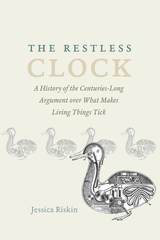 The Restless Clock: A History of the Centuries-Long Argument over What Makes Living Things Tick
Jessica Riskin
University of Chicago Press, 2016 Today, a scientific explanation is not meant to ascribe agency to natural phenomena: we would not say a rock falls because it seeks the center of the earth. Even for living things, in the natural sciences and often in the social sciences, the same is true. A modern botanist would not say that plants pursue sunlight. This has not always been the case, nor, perhaps, was it inevitable. Since the seventeenth century, many thinkers have made agency, in various forms, central to science.
The Restless Clock examines the history of this principle, banning agency, in the life sciences. It also tells the story of dissenters embracing the opposite idea: that agency is essential to nature. The story begins with the automata of early modern Europe, as models for the new science of living things, and traces questions of science and agency through Descartes, Leibniz, Lamarck, and Darwin, among many others. Mechanist science, Jessica Riskin shows, had an associated theology: the argument from design, which found evidence for a designer in the mechanisms of nature. Rejecting such appeals to a supernatural God, the dissenters sought to naturalize agency rather than outsourcing it to a “divine engineer.” Their model cast living things not as passive but as active, self-making machines.
The conflict between passive- and active-mechanist approaches maintains a subterranean life in current science, shaping debates in fields such as evolutionary biology, cognitive science, and artificial intelligence. This history promises not only to inform such debates, but also our sense of the possibilities for what it means to engage in science—and even what it means to be alive.
 The Restless Dead: Necrowriting and Disappropriation
Cristina Rivera Garza
Vanderbilt University Press, 2020 Based on comparative readings of contemporary books from Latin America, Spain, and the United States, the essays in this book present a radical critique against strategies of literary appropriation that were once thought of as neutral, and even concomitant, components of the writing process. Debunking the position of the author as the center of analysis, Cristina Rivera Garza argues for the communality—a term used by anthropologist Floriberto Díaz to describe modes of life of Indigenous peoples of Oaxaca based on notions of collaborative labor—permeating all writing processes.
Disappropriating is a political operation at the core of projects acknowledging, both at ethical and aesthetic levels, that writers always work with materials that are not their own. Writers borrow from the practitioners of a language, entering in a debt relationship that can only be covered by ushering the text back to the communities from which it grew. In a world rife with violence, where the experiences of many are erased by pillage and extraction, writing among and for the dead is a form of necrowriting that may well become a life-affirming act of decolonization and resistance.
 Restless Ecologies: Climate Change and Socioecological Futures in the Peruvian Highlands
Allison Caine
University of Arizona Press, 2025 In the high Andean grasslands 4,500 meters above sea level, Quechua alpaca herders live on the edges of glaciers that have retreated more rapidly in the past fifty years than at any point in the previous six millennia. Women are the primary herders, and their specialized knowledge and skill is vital to the ability of high-elevation communities to survive in changing climatic conditions. In the past decade, however, these herders and their animals have traversed a rapidly shifting terrain.
Drawing on the Quechua concept of k’ita, or restlessness, Allison Caine explores how herders in the community of Chillca in the Cordillera Vilcanota mountain range of the southeastern Peruvian Andes sense and make sense of changing conditions. Capricious mountains, distracted alpacas, and wayward children deviate from their expected spatial and temporal trajectories. When practices of sociality start to fall apart—when animals no longer listen to herders’ whistles, children no longer visit their parents, and humans no longer communicate with mountains—these failures signal a broader ecological instability that threatens the viability of the herder’s world.
For more than two years, the author herded alongside the women of the Cordillera Vilcanota, observing them and talking with them about their interactions with their animals, landscapes, and neighbors. Emphasizing the importance of Indigenous knowledge and traditional ecological practices, Caine argues that Quechua understandings of restlessness align with and challenge broader theoretical understandings of what it is to be vulnerable in a time of planetary crisis.
 Restless Empire: A Historical Atlas of Russia
Ian BarnesWith an Introduction by Dominic Lieven
Harvard University Press, 2015 From the first Slavic migrations to the Romanovs’ rise to the Putin era, Russia has endured for centuries as a nation whose sheer size and diversity have challenged its rulers and shaped its identity. Restless Empire illuminates the epic sweep of Russian history in a beautifully illustrated full-color atlas depicting the essential cultural, political, economic, and military developments of Russia’s past.
Like the double-headed eagle that is its state emblem, Russia has always looked abroad to both the East and West, searching for secure trade routes, trustworthy allies, and defensible frontiers. Expansion beyond Muscovy’s forested confines began in the fifteenth century, when Ivan III rejected Mongol rule and moved into the Russian steppe. The waterways linking the Baltic to the Black and Caspian seas were crucial to Russia’s development from the Middle Ages onward. The age-old quest to acquire warm-water ports culminated in the construction of St. Petersburg in the eighteenth century, when imperial Russia began to rival Europe’s Great Powers.
From Ivan the Terrible to Catherine the Great, Lenin and Stalin to Yeltsin and Putin, Russia’s rulers have carved their nation’s destiny into world history, sometimes bending Russia toward despotism or democracy, internationalism or brusque independence. Russia’s titanic conflicts—against the Tatars and Turks, Napoleon, Nazi Germany, and the United States—and its political upheavals from the Time of Troubles to the Soviet Union’s downfall, as well as ongoing strife in Chechnya and Crimea, are presented chronologically in accessible text accompanied by detailed maps and illustrations.
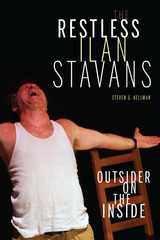 The Restless Ilan Stavans: Outside on the Inside
Steven G. Kellman
University of Pittsburgh Press, 2019 This is the first book-length study of one of the most prominent and prolific Latino academics, Ilan Stavans. He has written extensively on Latino culture, Jewish culture, dictionaries, immigration, language, Spanglish, soccer, translation, travel, selfies, and God. The Restless Ilan Stavans surveys his interests, achievements, and flaws while he is still in the midst of an extraordinarily productive career. A native of Mexico who became a U.S. citizen, he is an outsider to both the Chicano community that often resents him as an interloper and the American Jewish community that he, who grew up speaking Yiddish in Mexico City, often chides. The book examines his unlikely rise to prominence within the context of the spread of multiculturalism as a seminal principle within American culture. A self-proclaimed cosmopolitan who rejects borders, Stavans is both insider and outsider to the myriad of subjects he approaches.
Restless Nation: Starting Over in America
James M. Jasper
University of Chicago Press, 2000 In Restless Nation, James M. Jasper isolates a narrative that lies very close to the core of the American character. From colonial times to the present day, Americans have always had a deep-rooted belief in the "fresh start"—a belief that still has Americans moving from place to place faster than the citizens of any other nation.
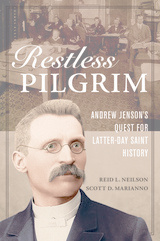 Restless Pilgrim: Andrew Jenson's Quest for Latter-day Saint History
Reid L. Neilson and Scott D. Marianno
University of Illinois Press, 2022 Andrew Jenson undertook a lifelong quest to render the LDS historical record complete and comprehensive. As Assistant Church Historian of The Church of Jesus Christ of Latter-day Saints, Jenson tirelessly carried out his office's archival mission and advocated for fixed recordkeeping to become a duty for Latter-day Saints. Reid L. Neilson and Scott D. Marianno offer a new in-depth study of Jenson's long life and career. Their account follows Jenson from his arrival as a Danish immigrant to 1860s Utah through trips around the world to secure documents from far-flung missions, and on to his public life as a newspaper columnist and interpreter of LDS history. Throughout, Jenson emerges as a figure dedicated to the belief that recorded history united past and present Latter-day Saints in heaven and on earth--and for all eternity. Engaging and informed, Restless Pilgrim is a groundbreaking study of an important figure in Latter-day Saint intellectual life during a transformative era in Church history.
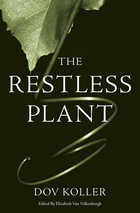 The Restless Plant
Dov Koller
Harvard University Press, 2011 Plants, so predictable, stay where they are. And yet, like all living things, they also move: they grow, adapt, shed leaves and bark, spread roots and branches, snare pollinators, and reward cultivators. This book, the first to thoroughly explore the subject since Darwin’s 1881 treatise on movements in plants, is a comprehensive, up-to-date account of the mechanisms and the adaptive values that move plants.
Drawing on examples across the spectrum of plant families—including mosses, ferns, conifers, and flowering plants—the author opens a window on how plants move: within cells, as individual cells, and via organs. Opening with an explanation of how cellular motors work and how cells manage to move organs, Dov Koller considers the movement of roots, tubers, rhizomes, and other plant parts underground, as well as the more familiar stems, leaves, and flowers.
Throughout, Koller presents information at the subcellular and cellular levels, including the roles of receptors, signaling pathways, hormones, and physiological responses in motor function. He also discusses the adaptive significance of movements. His book exposes the workings of a world little understood and often overlooked, the world of restless plants and the movements by which they accomplish the necessary functions of their lives.
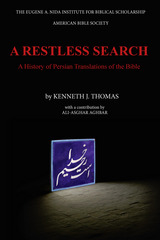 A Restless Search: A History of Persian Translations of the Bible
Kenneth J. Thomas
SBL Press, 2015 A literary detective story, a historical survey, and an important contribution to translation studies This book from Kenneth J. Thomas is both a philological and linguistic analysis of Persian translations and a call for interfaith cooperation. Thomas appraises biblical translation efforts from the fifth to the twenty-first centuries of Persian history when successive translators and groups of translators, sometimes of different faiths, worked to reshape and refine versions of the Bible in the supple Persian language of their times. Restless, impelled, and wide-ranging, this is a story of translations commissioned by shahs, undertaken by Christian and Jewish communities, and produced by teams working outside the country. Features - Demonstration of the effects of the lack of a standard Persian vocabulary for key biblical terms on literary style and word choice
- Technical analyses and overviews of Persian biblical translations
- A careful examination of sixteen centuries' worth of Bible translations
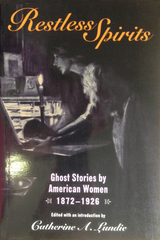 Restless Spirits: Ghost Stories by American Women, 1872-1926
Catherine A. Lundie
University of Massachusetts Press, 1996 Just as dreams have long been associated with the unconscious, ghost stories have often served as forums for otherwise unapproachable issues. This volume brings together a lively selection of ghost stories by women writers who use the genre to reveal and challenge prevailing cultural discourses on the nature and status of women. Depicting marriage, motherhood, female sexuality, spinsterhood, widowhood, and the intersection of madness and medical practice, the authors displace their critiques of dominant ideologies onto the supernatural, thus shielding themselves from critical recrimination. Their evocative works provide an invaluable resource for insights into women's writing and lives.
Originally published in popular magazines, the twenty-two stories in this collection are set in all corners of the United States and were written by a range of authors known and unknown, including Edith Wharton, Kate Chopin, and Zora Neale Hurston. Whether depicting a servant who helps save the reputation of her master's dead first wife, a ghostly mother who haunts a stranger until he agrees to adopt her orphaned daughter, or a ghost who revisits her beloved husband only to discover his long-standing preference for her sister, these tales possess great psychological richness and offer first-rate entertainment even as they explore the social and psychological realities of women's lives. Each story is preceded by a biographical headnote.
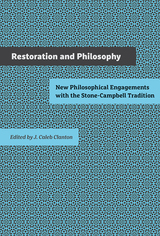 Restoration and Philosophy: New Philosophical Engagements with the Stone-Campbell Tradition
J. Caleb Clanton
University of Tennessee Press, 2019 A product of the Second Great Awakening of the nineteenth century, the Stone-Campbell Restoration Movement gave rise to such denominations as the Church of Christ (a cappella), the Christian Church (Disciples of Christ), and the independent Christian Churches/ Churches of Christ. While scholars have examined many of the historical, ecclesial, socio-cultural, and biographical dimensions of this indigenously American religious tradition, few have singled it out for philosophical exploration and critique.
In Restoration and Philosophy, editor J. Caleb Clanton and a team of philosophers engage with the Stone-Campbell Restoration tradition to address issues related to epistemology, philosophy of science, philosophy of religion, moral philosophy, aesthetics, environmentalism, and race. Along the way, the authors help to contextualize the Stone- Campbell Restoration tradition within American religious history—and within Christian philosophy more generally—and they show its continuing relevance today.
Scholars and students of philosophy and religious studies, as as well as ministers and those interested in this uniquely American Christian tradition, will benefit from this carefully edited, thoroughly researched, and highly readable collection of essays by eminent philosophers and religious scholars.
The Restoration Court Stage, 1660–1702: With a Particular Account of the Production of Calisto
Eleanore Boswell
Harvard University Press In this volume Eleanore Boswell treats a subject practically ignored by histories of the Restoration theatre; that is, theatrical performances at Court, principally in royal residences where there was a theatre or some regular provision for acting. All the non-literary aspects of the Court stage are covered: the construction and up-keep of the private royal theatres, the companies of actors, the details of staging, including scenery, lighting, and costumes, and what it all cost. Boswell has brought together an imposing amount of new material from the Public Records Office, notably from the Works Accounts and the Wardrobe Accounts. Her illustrations are fresh and informative; her references and notes present unique documents quoted verbatim; her work is marked by literary skill and charm.
The Restoration of Gregorian Chant: Solesmes and the Vatican Edition
Dom Pierre Combe, O.S.B.
Catholic University of America Press, 2003 This book presents for the first time in English the fully documented history of the Gregorian chant restoration which culminated in the publication of the Vatican Edition ordered by Pope Pius X at the dawn of the twentieth century. It is based upon archival documents in the Abbey of St. Pierre de Solesmes.
The Restoration of Order: The Normalization of Czechoslovakia 1969–1976
Milan Šimecka
Karolinum Press, 2025 This collection of Cold War essays and reflections enthralls any reader seeking a pointed dissection of the Soviet style of government and thinking.
In an engaging style, not lacking in irony and detachment, Milan Šimečka describes the process of restoring order and its result—so-called real socialism—in a brilliant analysis of the “normalization” regime in Czechoslovakia that came to power after the Soviet-led invasion that crushed the Prague Spring of 1968. These poignant reflections and essays coincided with Šimečka’s first-hand experience of the consequences of the time’s political and cultural purges.
This second edition of Cold War classics, first written between 1975 and 1977, with a new preface from Martin Šimečka and afterword from Jonathan Bolton, highlights chilling parallels with contemporary political developments and current civic and ethical questions.
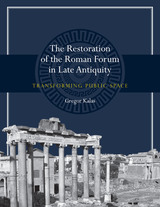 The Restoration of the Roman Forum in Late Antiquity: Transforming Public Space
By Gregor Kalas
University of Texas Press, 2015 In The Restoration of the Roman Forum in Late Antiquity, Gregor Kalas examines architectural conservation during late antiquity period at Rome’s most important civic center: the Roman Forum. During the fourth and fifth centuries CE—when emperors shifted their residences to alternate capitals and Christian practices overtook traditional beliefs—elite citizens targeted restoration campaigns so as to infuse these initiatives with political meaning. Since construction of new buildings was a right reserved for the emperor, Rome’s upper echelon funded the upkeep of buildings together with sculptural displays to gain public status. Restorers linked themselves to the past through the fragmentary reuse of building materials and, as Kalas explores, proclaimed their importance through prominently inscribed statues and monuments, whose placement within the existing cityscape allowed patrons and honorees to connect themselves to the celebrated history of Rome. Building on art historical studies of spolia and exploring the Forum over an extended period of time, Kalas demonstrates the mutability of civic environments. The Restoration of the Roman Forum in Late Antiquity maps the evolution of the Forum away from singular projects composed of new materials toward an accretive and holistic design sensibility. Overturning notions of late antiquity as one of decline, Kalas demonstrates how perpetual reuse and restoration drew on Rome’s venerable past to proclaim a bright future.
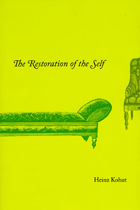 The Restoration of the Self
Heinz Kohut
University of Chicago Press, 2009 In his foundational work The Restoration of the Self, noted psychoanalyst Heinz Kohut boldly challenges what he called “the limits of classical analytic theory” and the Freudian orthodoxy. Here Kohut proposes a “psychology of the self” as a theory in its own right—one that can stand beside the teachings of Freud and Jung. Using clinical data, Kohut explores issues such as the role of narcissism in personality, when a patient can be considered cured, and the oversimplifications and social biases that unduly influenced Freudian thought. This volume puts forth some of Kohut’s most influential ideas on achieving emotional health through a balanced, creative, and joyful sense of self. "Kohut speaks clearly from his identity as a psychoanalyst-healer, showing that he is more of a psychoanalyst than most, and yet calling for major theoretical revisions including a redefinition of the essence of psychoanalysis.”—American Journal of Psychotherapy
Restoration: Poems
Christina Pugh
Northwestern University Press, 2008 Complex and focused, this collection of poems moves along the line between waking and sleeping to reveal a narrator who is contemplating her origins as well as her future. Pugh frequently turns in her work to the image of a bed--as a source of comfort, an erotic landing, and a place for dreaming. For Pugh, dreams both obscure and reveal, their language a code to be analyzed, as in her longer meditation inspired by Freud's case history "Dora." After dipping dangerously far into dreams, Pugh's poems return to a world of activity, full of physicality before becoming calm. At the end of the book, the self is restored and can see the world through a newly formed lens taken from its dreams.
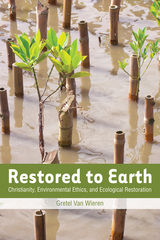 Restored to Earth: Christianity, Environmental Ethics, and Ecological Restoration
Gretel Van Wieren
Georgetown University Press, 2013 Ecological restoration integrates the science and art of repairing ecosystems damaged by human activities. Despite relatively little attention from environmental ethicists, restoration projects continue to gain significance, drawing on citizen volunteers and large amounts of public funds, providing an important model of responding to ecological crisis. Projects range from the massive, multi-billion dollar Kissimmee River project; restoring 25,000 acres of Everglades' wetlands; to the $30 million effort to restore selected wetlands in industrial Brownfield sites in Chicago's south side Lake Calumet area; to the reintroduction of tall grass prairie ecosystems in various communities in the Midwest. Restored to Earth provides the first comprehensive examination of the religious and ethical dimensions and significance of contemporary restoration practice, an ethical framework that advances the field of environmental ethics in a more positive, action-oriented, experience-based direction. Van Wieren brings together insights and examples from restoration ecology, environmental ethics, religious studies, and conservation and Christian thought, as well as her own personal experiences in ecological restoration, to propose a new restoration ethic grounded in the concrete, hands-on experience of humans working as partners with the land.
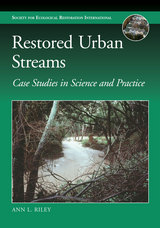 Restored Urban Streams: Case Studies in Science and Practice
Ann L. Riley
Island Press, 2015 Thirty years ago, the best thinking on urban stream management prescribed cement as the solution to flooding and other problems of people and flowing water forced into close proximity. Urban streams were perceived as little more than flood control devices designed to hurry water through cities and neighborhoods with scant thought for aesthetics or ecological considerations. Stream restoration pioneers like hydrologist Ann Riley thought differently. She and other like-minded field scientists imagined that by restoring ecological function and with careful management, streams and rivers could be a net benefit to cities instead of a net liability. In the intervening decades, she has spearheaded numerous urban stream restoration projects and put to rest the long-held misconception that degraded urban streams are beyond help.
What has been missing, however, has been detailed guidance for restoration practitioners wanting to undertake similar urban stream restoration projects that worked with, rather than against, nature. This book presents the author’s thirty years of practical experience managing long-term stream and river restoration projects in heavily degraded urban environments. Riley provides a level of detail only a hands-on design practitioner would know, including insights on project design, institutional and social context of successful projects, and how to avoid costly and time-consuming mistakes. Early chapters clarify terminology and review strategies and techniques from historical schools of restoration thinking. But the heart of the book is the chapters containing nine case studies of long-term stream restoration projects in northern California. Although the stories are local, the principles, methods, and tools are universal, and can be applied in almost any city in the world.
Restoration practitioners, consultants, agency personnel, and students in applied restoration courses can learn from Riley’s succinct tour of restoration basics and powerful case studies, and apply them successfully in their own towns and cities.
The Restorers
W. S. Di Piero
University of Chicago Press, 1992 The poems in this, W. S. Di Piero's fifth collection of poetry, are animated by an ancient vision of the human state as existing somewhere between the divine and the bestial; tense with the compulsion toward formal order and the wild yearning after chaos, these are tough poems, gritty and relentless; they indulge neither the reader nor the poet. Their austere lyricism expresses Di Piero's desire for transcendent meaning, and their unflinching attention to natural and cultural history reflects an equally strong instinct for the earthbound.
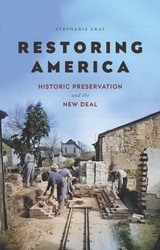 Restoring America: Historic Preservation and the New Deal
Stephanie Gray
University of Massachusetts Press, 2025 Exploring how the New Deal shaped history through politically driven commemoration
During the Great Depression, Americans employed historic preservation as a tool to address the political, economic, and social upheavals of the era. Inspired by the Roosevelt administration’s unprecedented support of federal arts projects, US politicians, architects, laborers, artisans, and local boosters skillfully used New Deal funds to restore, mythologize, and politicize the “historic shrines” in their communities. Restoring America illustrates how and why Americans turned to historic preservation as a strategy for managing both political realities and ambitions.
Stephanie Gray presents four thoroughly researched and diverse case studies: a colonial theater in the Deep South, a Puritan minister’s home in New England, aviator Charles Lindbergh's modest farmhouse and parklands of the Upper Midwest, and a multi-layered Spanish-German-Mexican arts village in the Central South. Collectively, these examples show how the restoration of old places emerged as a popular form of cultural production, an instrument of economic reconstruction, and a striking expression of political theater during the Depression. Moreover, these New Deal preservation projects make evident that any exercise in physically preserving the past is both conservative and progressive, reactive and proactive.
Restoring America contends that the federally funded and locally driven preservation initiatives of the 1930s and 1940s can help inform contemporary public history debates over the politics of commemoration and imagine possibilities for future preservation practice.
 Restoring America: Historic Preservation and the New Deal
Stephanie Gray
University of Massachusetts Press, 2025 Exploring how the New Deal shaped history through politically driven commemoration
During the Great Depression, Americans employed historic preservation as a tool to address the political, economic, and social upheavals of the era. Inspired by the Roosevelt administration’s unprecedented support of federal arts projects, US politicians, architects, laborers, artisans, and local boosters skillfully used New Deal funds to restore, mythologize, and politicize the “historic shrines” in their communities. Restoring America illustrates how and why Americans turned to historic preservation as a strategy for managing both political realities and ambitions.
Stephanie Gray presents four thoroughly researched and diverse case studies: a colonial theater in the Deep South, a Puritan minister’s home in New England, aviator Charles Lindbergh's modest farmhouse and parklands of the Upper Midwest, and a multi-layered Spanish-German-Mexican arts village in the Central South. Collectively, these examples show how the restoration of old places emerged as a popular form of cultural production, an instrument of economic reconstruction, and a striking expression of political theater during the Depression. Moreover, these New Deal preservation projects make evident that any exercise in physically preserving the past is both conservative and progressive, reactive and proactive.
Restoring America contends that the federally funded and locally driven preservation initiatives of the 1930s and 1940s can help inform contemporary public history debates over the politics of commemoration and imagine possibilities for future preservation practice.
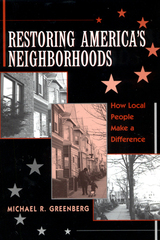 Restoring America's Neighborhoods: How Local People Make a Difference
Michael R Greenberg
Rutgers University Press, 1999 What does it take to mobilize a grass-roots force dedicated to bringing new life into a decaying neighborhood? Can any one person or group successfully halt physical deterioration, drug-related crime, or the encroachment of clusters of factories, highways, and other noxious land uses? Michael Greenberg demonstrates in this book that it can and has been done against all odds. Restoring America's Neighborhoods profiles twenty-four such cases from across the United States. It tells the story of people determined to make the blighted, crime-ridden urban enclaves in which they live and work a better place for everybody. These are people from many different walks of life: ministers working to bring jobs to their communities; city planners and federal employees trying to relocated residents of potential disaster areas; and locals taking matters into their own hands to create a healthier, more pleasing living environment for their children. Greenberg's is a heartening account of courage and unwavering resolve as well as of hope that individuals can make a difference, that violent criminals and uncaring bureaucrats need not carry the day. He calls them "streetfighters," a fitting tribute to their efforts to take back their neighborhoods, block by block and street by street.
Restoring Baird's Image
Donald F. McLean
The Institution of Engineering and Technology, 2000 John Logie Baird, Britain's foremost television pioneer, experimented with video recording onto gramophone discs in the late 1920s. Though unsuccessful at the time, his experiments resulted in several videodiscs, some 25 years before the videotape recorder became practical. These videodiscs - called Phonovision - remained neglected over the decades, considered by experts as unplayable.
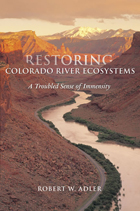 Restoring Colorado River Ecosystems: A Troubled Sense of Immensity
Robert W. Adler
Island Press, 2007 Over the past century, humans have molded the Colorado River to serve their own needs, resulting in significant impacts to the river and its ecosystems. Today, many scientists, public officials, and citizens hope to restore some of the lost resources in portions of the river and its surrounding lands. Environmental restoration on the scale of the Colorado River basin is immensely challenging; in addition to an almost overwhelming array of technical difficulties, it is fraught with perplexing questions about the appropriate goals of restoration and the extent to which environmental restoration must be balanced against environmental changes designed to promote and sustain human economic development. Restoring Colorado River Ecosystems explores the many questions and challenges surrounding the issue of large-scale restoration of the Colorado River basin, and of large-scale restoration in general. Robert W. Adler evaluates the relationships among the laws, policies, and institutions governing use and management of the Colorado River for human benefit and those designed to protect and restore the river and its environment. He examines and critiques the often challenging interactions among law, science, economics, and politics within which restoration efforts must operate. Ultimately, he suggests that a broad concept of “restoration” is needed to navigate those uncertain waters, and to strike an appropriate balance between human and environmental needs. While the book is primarily about restoration of Colorado River ecosystems, it is also about uncertainty, conflict, competing values, and the nature, pace, and implications of environmental change. It is about our place in the natural environment, and whether there are limits to that presence we ought to respect. And it is about our responsibility to the ecosystems we live in and use.
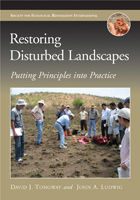 Restoring Disturbed Landscapes: Putting Principles into Practice
David J.Tongway and John A. Ludwig
Island Press, 2011 Restoring Disturbed Landscapes is a hands-on guide for individuals and groups seeking to improve the functional capacity of landscapes. The book presents a five-step, adaptive procedure for restoring landscapes that is supported by proven principles and concepts of ecological science.
Written by restoration experts with a wealth of experience teaching restoration principles and techniques to practitioners and would-be practitioners from a variety of backgrounds, the book offers: - an outline of a science-based, ecologically sound approach to restoration
- discussion of the conceptual framework and rigorous principles that underlie the approach
- case studies of two types of restoration projects (restoring mined landscapes and restoring damaged rangelands) that illustrate how the approach, framework, and four key principles for restoring landscapes have been implemented
- a variety of scenarios that represent typical restoration problems and how those problems can be handled
- indicators for monitoring and how landscape function can be tracked and analyzed as part of a comprehensive monitoring program.
Abundantly illustrated with photos and figures that clearly explain concepts outlined in the book, Restoring Disturbed Landscapes is an engaging and accessible work designed specifically for restoration practitioners with limited training or experience in the field. It tells restorationists where to start, what information they need to acquire, and how to apply this information to their specific situations.
Restoring Diversity: Strategies For Reintroduction Of Endangered Plants
Edited by Donald A. Falk, Constance I. Millar, and Margaret Olwell; Foreword byReed F. Noss
Island Press, 1996 In April 1993, a national conference sponsored by the Center for Plant Conservation brought together academic biologists, agency staff members, activists, and other experts to critically explore the value of ecological restoration as a conservation strategy. Restoring Diversity examines and expands on issues set forth at that gathering. Topics covered include: the strategic and legal context for rare plant restoration the biology of restoration use (and misuse) of mitigation in rare plant conservation case studies from across the United States Restoring Diversity is a pathbreaking work that not only unifies concepts in the field of restoration, but also fills significant technical and policy gaps, and provides operational tools for successful restorations.
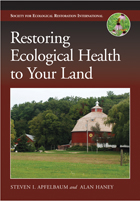 Restoring Ecological Health to Your Land
Steven I. Apfelbaum and Alan Haney
Island Press, 2010 Restoring Ecological Health to Your Land is an accessible, hands-on guide for anyone—regardless of scientific background—who wants to restore native landscapes and improve ecological function on their property. Whether you’re caring for a backyard, a farm, or a public greenspace, this book provides a clear and empowering path to take meaningful action for the environment.
Grounded in the authors’ own restoration work in Wisconsin, the book introduces a straightforward, step-by-step process for planning, implementing, and monitoring ecological restoration projects. Through practical examples and user-friendly language, readers learn how to assess a site’s condition, set realistic goals, and apply restoration strategies suited to its unique ecological and social context.
The second half expands that guidance to a variety of ecosystems across North America, showing how the same core principles can be applied to landscapes of any size or condition. From prairie and woodland to wetland and rangeland, readers gain the confidence to begin—or improve—their own restoration efforts.
Ideal for landowners, nonprofit staff, conservation volunteers, and agency professionals, Restoring Ecological Health to Your Land serves as both a field manual and a source of inspiration. It helps readers reconnect with the places they care about most—and gives them the tools to heal them.
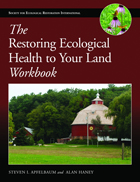 The Restoring Ecological Health to Your Land Workbook
Steven I. Apfelbaum and Alan Haney
Island Press, 2011 Turning ecological restoration from idea to action takes more than inspiration—it requires clear planning, organized tools, and confident decision-making. The Restoring Ecological Health to Your Land Workbook is designed to guide landowners, volunteers, and restoration practitioners through the often-complex process of restoring natural systems, even without a background in science.
Built as a hands-on companion to the widely used guidebook, Restoring Ecological Health to Your Land, this workbook translates core concepts into actionable steps. Inside are customizable worksheets and templates that help users map out restoration goals, select plant materials and equipment, build project timelines, monitor progress, and estimate costs. The included spreadsheets and planning tools—also available online—allow you to tailor every phase of a project to your landscape, budget, and timeline.
What sets this resource apart is how it bridges planning and practice. Readers move from broad ecological principles to the practical tasks of organizing work crews, tracking site changes, and refining techniques based on real results. Each form and checklist has been shaped by years of field use and teaching experience, giving users the clarity and structure needed to keep a project moving forward.
With this workbook, restoration becomes less daunting—and more doable. Whether you're stewarding a prairie, forest, or wetland, it puts the framework in your hands to take the next step with confidence and purpose.
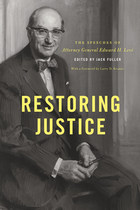 Restoring Justice: The Speeches of Attorney General Edward H. Levi
Edward H. Levi
University of Chicago Press, 2013 In the wake of Watergate, Gerald Ford appointed eminent lawyer and scholar Edward H. Levi to the post of attorney general—and thus gave him the onerous task of restoring legitimacy to a discredited Department of Justice. Levi was famously fair-minded and free of political baggage, and his inspired addresses during this tumultuous time were critical to rebuilding national trust. They reassured a tense and troubled nation that the Department of Justice would act in accordance with the principles underlying its name, operating as a nonpartisan organization under the strict rule of law.
For Restoring Justice, Jack Fuller has carefully chosen from among Levi’s speeches a selection that sets out the attorney general’s view of the considerable challenges he faced: restoring public confidence through discussion and acts of justice, combating the corrosive skepticism of the time, and ensuring that the executive branch would behave judicially. Also included are addresses and Congressional testimonies that speak to issues that were hotly debated at the time, including electronic surveillance, executive privilege, separation of powers, antitrust enforcement, and the guidelines governing the FBI—many of which remain relevant today.
Serving at an almost unprecedentedly difficult time, Levi was among the most admired attorney generals of the modern era. Published here for the first time, the speeches in Restoring Justice offer a superb sense of the man and his work.
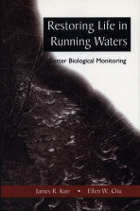 Restoring Life in Running Waters: Better Biological Monitoring
James R. Karr and Ellen W. Chu
Island Press, 1998 Despite nearly three decades of efforts intended to protect the nation's waters, and some success against certain forms of chemical and organic contamination, many of our nation's waterways continue to be seriously degraded. The call of the 1972 Clean Water Act -- "to restore and maintain the chemical, physical, and biological integrity of the Nation's waters" -- remains unanswered. Restoring Life in Running Waters discusses freshwater ecosystems in the United States and the need for using biology to understand their present condition. The book makes a case for using indexes that integrate measurements of many biological attributes to assess and communicate environmental health. In a unique and innovative format, the authors present 37 premises and 7 myths that explore the theory and practice of biological monitoring and the use of multimetric indexes. The book explains: - why biological monitoring and assessment are needed
- the historical evolution of biological monitoring
- how and why living systems give the best signals for diagnosing environmental degradation
- what multimetric indexes do and why they are effective
- how multimetric indexes can be used and common pitfalls to avoid in using them
- why many criticisms of biological indexes are not valid
- how the principles of biological monitoring and multimetric indexes can be expanded beyond aquatic systems to other environments
- how information from indexes can be integrated into the regulatory and policy framework
Restoring Life in Running Waters provides practical and effective tools for managers and scientists seeking to understand the impact of human activities on natural systems and to determine proper action to remedy problems. It is an essential handbook for conservation biologists; agency personnel at all levels, including technical staff, policymakers, and program managers; and for anyone working to protect and restore the health of the nation's waters.
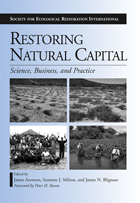 Restoring Natural Capital: Science, Business, and Practice
Edited by James Aronson, Suzanne J. Milton, and James N. Blignaut; Foreword by Peter H. Raven
Island Press, 2007 How can environmental degradation be stopped? How can it be reversed? And how can the damage already done be repaired? The authors of this volume argue that a two-pronged approach is needed: reducing demand for ecosystem goods and services and better management of them, coupled with an increase in supply through environmental restoration.
Restoring Natural Capital brings together economists and ecologists, theoreticians, practitioners, policy makers, and scientists from the developed and developing worlds to consider the costs and benefits of repairing ecosystem goods and services in natural and socioecological systems. It examines the business and practice of restoring natural capital, and seeks to establish common ground between economists and ecologists with respect to the restoration of degraded ecosystems and landscapes and the still broader task of restoring natural capital. The book focuses on developing strategies that can achieve the best outcomes in the shortest amount of time as it:
• considers conceptual and theoretical issues from both an economic
and ecological perspective
• examines specific strategies to foster the restoration of natural
capital and offers a synthesis and a vision of the way forward
Nineteen case studies from around the world illustrate challenges and achievements in setting targets, refining approaches to finding and implementing restoration projects, and using restoration of natural capital as an economic opportunity. Throughout, contributors make the case that the restoration of natural capital requires close collaboration among scientists from across disciplines as well as local people, and when successfully executed represents a practical, realistic, and essential tool for achieving lasting sustainable development.
Restoring Nature: Essays Thomistic Philosophy & Theology
Michael M. Waddell
St. Augustine's Press, 2023 The outstanding contributors to this symposium are Benedict M. Ashley, o.p., Steven Baldner, Angelo Campodonico, William E. Carroll, Lawrence Dewan, o.p., Fulvio Di Blasi, Jude P. Dougherty, Leo J. Elders, svd, Robert A. Gahl, Jr., Anne Barbeau Gardiner, Marie George, John Goyette, Christopher Kaczor, Steven A. Long, Christopher Martin, Ralph McInerny, John O’Callaghan, Vittorio Possenti, Anthony Rizzi, Mario Enrique Sacchi, Michael M. Waddell, and Héctor Zagal.
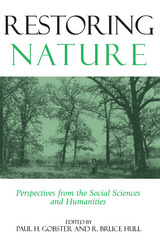 Restoring Nature: Perspectives From The Social Sciences And Humanities
Edited by Paul H. Gobster and R. Bruce Hull
Island Press, 2000 Ecological restoration is an inherently challenging endeavor. Not only is its underlying science still developing, but the concept itself raises complex questions about nature, culture, and the role of humans in the landscape. Using a recent controversy over ecological restoration efforts in Chicago as a touchstone for discussion, Restoring Nature explores the difficult questions that arise during the planning and implementation of restoration projects in urban and wildland settings. Contributors examine: - moral and ethical questions regarding the practice of restoration
- conflicts over how nature is defined and who should be included in decisions about restoration and management
- how managers can make restoration projects succeed given the various constraints and considerations that need to be taken into account
. Using diverse examples from projects across the U.S., the book suggests ways in which restoration conflicts might be resolved, and provides examples of stewardship that show how volunteers and local residents can help make and maintain restored environments. Throughout, contributors set forth a wealth of ideas, case studies, methodological approaches, and disciplinary perspectives that shed valuable light on the social underpinnings of ecological restoration and natural resource management. Restoring Nature is an intriguing exploration of human-nature interactions, of differing values and understanding of nature, and of how that information can be effectively used to guide science and policy. It provides new conceptual insights and practical solutions for anyone working to manage or restore natural ecosystems.
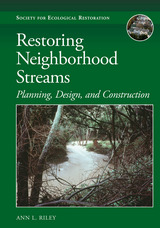 Restoring Neighborhood Streams: Planning, Design, and Construction
Ann L. Riley
Island Press, 2016 Thirty years ago, the best thinking on urban stream management prescribed cement as the solution to flooding and other problems of people and flowing water forced into close proximity. Urban streams were perceived as little more than flood control devices designed to hurry water through cities and neighborhoods with scant thought for aesthetics or ecological considerations. Stream restoration pioneers like hydrologist Ann Riley thought differently. She and other like-minded field scientists imagined that by restoring ecological function, and with careful management, streams and rivers could be a net benefit to cities, instead of a net liability. In the intervening decades, she has spearheaded numerous urban stream restoration projects and put to rest the long-held misconception that degraded urban streams are beyond help.
What has been missing, however, is detailed guidance for restoration practitioners wanting to undertake similar urban stream restoration projects that worked with, rather than against, nature. This book presents the author’s thirty years of practical experience managing long-term stream and river restoration projects in heavily degraded urban environments. Riley provides a level of detail only a hands-on design practitioner would know, including insights on project design, institutional and social context of successful projects, and how to avoid costly and time-consuming mistakes. Early chapters clarify terminology and review strategies and techniques from historical schools of restoration thinking. But the heart of the book comprises the chapters containing nine case studies of long-term stream restoration projects in northern California. Although the stories are local, the principles, methods, and tools are universal, and can be applied in almost any city in the world.
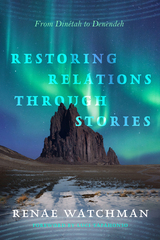 Restoring Relations Through Stories: From Dinétah to Denendeh
Renae Watchman; Foreword by Luci Tapahonso
University of Arizona Press, 2024 This insightful volume delves into land-based Diné and Dene imaginaries as embodied in stories—oral, literary, and visual. Like the dynamism and kinetic facets of hózhǫ́,* Restoring Relations Through Stories takes us through many landscapes, places, and sites. Renae Watchman introduces the book with an overview of stories that bring Tsé Bitʼaʼí, or Shiprock Peak, the sentinel located in what is currently the state of New Mexico, to life. The book then introduces the dynamic field of Indigenous film through a close analysis of two distinct Diné-directed feature-length films, and ends by introducing Dene literatures.
While the Diné (those from the four sacred mountains in Dinétah in the southwestern United States) are not now politically and economically cohesive with the Dene (who are in Denendeh in Canada), they are ancestral and linguistic relatives. In this book, Watchman turns to literary and visual texts to explore how relations are restored through stories, showing how literary linkages from land-based stories affirm Diné and Dene kinship. She explores the power of story to forge ancestral and kinship ties between the Diné and Dene across time and space through re-storying of relations.
*A complex Diné worldview and philosophy that cannot be defined with one word in the English language. Hózhǫ́ means to continually strive for harmony, beauty, balance, peace, and happiness, but most importantly the Diné have a right to it.
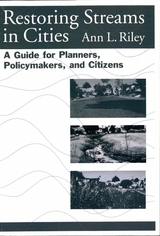 Restoring Streams in Cities: A Guide for Planners, Policymakers, and Citizens
Ann L. Riley
Island Press, 1998 Restoring Streams in Cities equips readers with the tools to transform degraded urban waterways into vibrant ecological and community assets—without relying on costly, destructive infrastructure. Whether you're a planner, engineer, advocate, or homeowner, this book rewards you with a smarter, more sustainable way to address flooding, erosion, and stream degradation.
Instead of outdated methods that bury or channelize streams, Ann L. Riley offers a proven alternative: working with natural systems to restore ecological balance while protecting people and property. You’ll gain practical strategies rooted in watershed-level thinking, land-use planning, site design, and gentle channel restoration—approaches that repair damage and prevent future problems.
The benefit? You’ll walk away with the confidence to initiate or support restoration projects in your own community. The book provides essential background to ask the right questions, hire the right help, and guide smart decision-making. You'll also learn how to access funding and navigate federal programs.
Rich with real-world examples and over 100 photos, Restoring Streams in Cities is more than a manual—it’s a call to action with a clear path forward. Readers will leave empowered to turn neglected urban streams into living, resilient systems that protect communities, restore nature, and enhance quality of life.
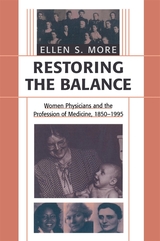 Restoring the Balance: Women Physicians and the Profession of Medicine, 1850–1995
Ellen S. More
Harvard University Press, 2001 From about 1850, American women physicians won gradual acceptance from male colleagues and the general public, primarily as caregivers to women and children. By 1920, they represented approximately five percent of the profession. But within a decade, their niche in American medicine—women’s medical schools and medical societies, dispensaries for women and children, women’s hospitals, and settlement house clinics—had declined. The steady increase of women entering medical schools also halted, a trend not reversed until the 1960s. Yet, as women’s traditional niche in the profession disappeared, a vanguard of women doctors slowly opened new paths to professional advancement and public health advocacy.
Drawing on rich archival sources and her own extensive interviews with women physicians, Ellen More shows how the Victorian ideal of balance influenced the practice of healing for women doctors in America over the past 150 years. She argues that the history of women practitioners throughout the twentieth century fulfills the expectations constructed within the Victorian culture of professionalism. Restoring the Balance demonstrates that women doctors—collectively and individually—sought to balance the distinctive interests and culture of women against the claims of disinterestedness, scientific objectivity, and specialization of modern medical professionalism. That goal, More writes, reaffirmed by each generation, lies at the heart of her central question: what does it mean to be a woman physician?
 Restoring the Faith: The Assemblies of God, Pentecostalism, and American Culture
Edith L. Blumhofer
University of Illinois Press, 1993 American Pentecostalism began as a culturally isolated sect intent upon announcing the imminence of the world's end. The sect's early millenarian fervor gradually became muted in favor of flag-waving patriotism. At the end of the twentieth century it has become an affluent, worldwide movement thoroughly entrenched in popular culture.
Edith Blumhofer uses the Assemblies of God, the largest classical Pentecostal denomination in the world, as a lens through which to view the changing nature of Anglo Pentecostalism in the United States. She illustrates how the original mission to proclaim the end resulted in the development of Bible schools, the rise of the charismatic movement, and the popularity of such figures as Aimee Semple McPherson, Charles Fox Parham, and David Du Plessis. Blumhofer also examines the sect's use of radio and television and the creation of a parallel Christian culture
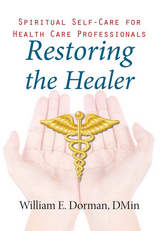 Restoring the Healer: Spiritual Self-Care for Health Care Professionals
William Dorman
Templeton Press, 2015 Burn out. Two words that haunt those in high stress jobs, especially in the medical profession. Long hours and the literal life-and-death nature of the field creates expectations to not only be on call at all hours, but to be at one’s best, even at 3:00 AM after a twenty-hour shift. So much energy is devoted to the care of others that self-care is forgotten.
Yet, more are noticing and research confirms that self-care is needed, not only for personal sanity but also for quality of work. Unwell medical professionals are not the best at treating others. And this self-care includes not just rest, food, and water, but a deeper care, one that tends the spiritual side as well.
To both the spiritually active and the spiritually resistant, hospital chaplain William Dorman offers a guide to understand a more comprehensive, full-bodied self-care. Each chapter begins with case studies, concrete experiences that help unpack abstract concepts which bring much needed peace to stressed individuals. Dorman also structures each chapter to end with prayers and action steps, which offer more concrete ways to care for the self.
From working as a hospital chaplain for over 18 years, and serving as the director of chaplaincy services for the largest integrated health care system in New Mexico, Rev. Dorman recognizes the stresses that come to those who have made it their profession to heal others. Healers need healing too—and this guide is the first step.
Restoring the Pacific Northwest: The Art and Science of Ecological Restoration in Cascadia
Edited by Dean Apostol and Marcia Sinclair; Foreword by Eric Higgs ; Society for Ecological Restoration International
Island Press, 2006 The Pacific Northwest is a global ecological "hotspot" because of its relatively healthy native ecosystems, a high degree of biodiversity, and the number and scope of restoration initiatives that have been undertaken there. Restoring the Pacific Northwest gathers and presents the best examples of state-of-the-art restoration techniques and projects. It is an encyclopedic overview that will be an invaluable reference not just for restorationists and students working in the Pacific Northwest, but for practitioners across North America and around the world.
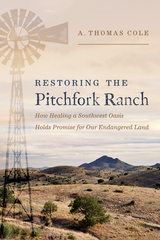 Restoring the Pitchfork Ranch: How Healing a Southwest Oasis Holds Promise for Our Endangered Land
A. Thomas Cole
University of Arizona Press, 2024 The Pitchfork Ranch is more than another dusty homestead tucked away in a corner of the Southwest. It is a place with a story to tell about the most pressing crisis to confront humankind. It is a place where one couple is working every day to right decades of wrongs. It is a place of inspiration and promise. It is an invitation to join the struggle for a better planet.
Restoring the Pitchfork Ranch tells the story of a decades-long habitat restoration project in southwestern New Mexico. A. Thomas Cole explains what inspired him and his wife, Lucinda, to turn their retirement into years dedicated to hard work and renewal. The book shares the past and present history of a very special ranch south of Silver City, which is home to a rare type of regional wetland, a fragile desert grassland ecosystem, archaeological sites, and a critical wildlife corridor in a drought-stricken landscape.
Today the 11,300 acres that make up the Pitchfork Ranch provide an important setting for carbon sequestration, wildlife habitats, and space for the reintroduction of endangered or threatened species. Restoring the Pitchfork Ranch weaves together stories of mine strikers, cattle ranching, and the climate crisis into an important and inspiring call to action. For anyone who has wondered how they can help, the Pitchfork Ranch provides an inspiring way forward.
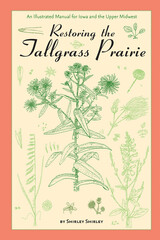 Restoring the Tallgrass Prairie: An Illustrated Manual for Iowa and the Upper Midwest
Shirley Shirley
University of Iowa Press, 1994 Iowa is the only state that lies entirely within the natural region of the tallgrass prairie. Early documents indicate that 95 percent of the state—close to 30 million acres—was covered by prairie vegetation at the time of Euro-American settlement. By 1930 the prairie sod had been almost totally converted to cropland; only about 30,000 acres of the original “great green sea” remained. Now, in this gracefully illustrated manual, Shirley Shirley has created a step-by-step guide to reconstructing the natural landscape of Iowa and the Upper Midwest. Chapters on planning, obtaining and selecting plants and seeds, starting seeds indoors, preparing the site, planting, and maintenance set the stage for comprehensive species accounts. Shirley gives firsthand information on soil, moisture, sun, and pH requirements; location, size, and structure; blooming time and color; and propagation, germination, and harvesting for more than a hundred wildflowers and grasses. Shirley's sketches—all drawn from native plants and from seedlings that she grew herself—will be valuable for even the most experienced gardener. While other books typically feature only the flowering plant, her careful drawings show the three stages of the seedlings, the flower, and the seedhead with seeds as well as the entire plant. This practical and attractive volume will help anyone dedicated to reconstructing the lost “emerald growth” of the historic tallgrass prairie.
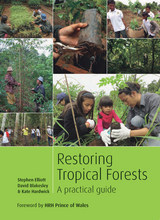 Restoring Tropical Forests: A Practical Guide
Stephen Elliott, David Blakesley, and Kate Hardwick
Royal Botanic Gardens, Kew, 2013 Tropical and subtropical forests cover a relatively small portion of the earth’s surface, but they’re home to over half of the animal and plant species on earth. Since these forests are rapidly disappearing, there is no room for error in restoration activities and decisions. Restoring Tropical Forests is a practical guide based on proven techniques that will enable readers to make the right decisions toward saving these valuable lands.
The book is based on the innovative techniques developed at Chiang Mai University’s Forest Restoration Research Unit, Thailand. It takes a threepart approach, first looking at effective general concepts of tropical forest dynamics and regeneration, then at specific proven restoration techniques, and finally at how to use research methods to refine and adapt the techniques to local ecological and socioeconomic conditions. In addition, illustrations and case studies of successful applications help to make this a global, user-friendly guide. Whether for developing new techniques or improving old ones, Restoring Tropical Forests is a valuable tool for effective, ecologically sound change.
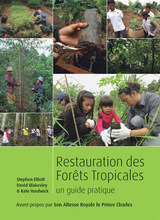 Restoring Tropical Forests: A Practical Guide (French Edition)
Stephen Elliott, David Blakesley, and Kate Hardwick
Royal Botanic Gardens, Kew, 2014 Tropical and subtropical forests cover a relatively small portion of the earth’s surface, but they’re home to over half of the animal and plant species on earth. Since these forests are rapidly disappearing, there is no room for error in restoration activities and decisions. Restoring Tropical Forests is a practical guide based on proven techniques that will enable readers to make the right decisions toward saving these valuable lands.
The book is based on the innovative techniques developed at Chiang Mai University’s Forest Restoration Research Unit, Thailand. It takes a threepart approach, first looking at effective general concepts of tropical forest dynamics and regeneration, then at specific proven restoration techniques, and finally at how to use research methods to refine and adapt the techniques to local ecological and socioeconomic conditions. In addition, illustrations and case studies of successful applications help to make this a global, user-friendly guide. Whether for developing new techniques or improving old ones, Restoring Tropical Forests is a valuable tool for effective, ecologically sound change.
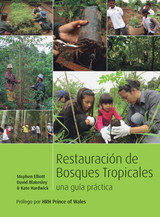 Restoring Tropical Forests: A Practical Guide (Spanish Edition)
Stephen Elliott, David Blakesley, and Kate Hardwick
Royal Botanic Gardens, Kew, 2014 Tropical and subtropical forests cover a relatively small portion of the earth’s surface, but they’re home to over half of the animal and plant species on earth. Since these forests are rapidly disappearing, there is no room for error in restoration activities and decisions. Restoring Tropical Forests is a practical guide based on proven techniques that will enable readers to make the right decisions toward saving these valuable lands.
The book is based on the innovative techniques developed at Chiang Mai University’s Forest Restoration Research Unit, Thailand. It takes a threepart approach, first looking at effective general concepts of tropical forest dynamics and regeneration, then at specific proven restoration techniques, and finally at how to use research methods to refine and adapt the techniques to local ecological and socioeconomic conditions. In addition, illustrations and case studies of successful applications help to make this a global, user-friendly guide. Whether for developing new techniques or improving old ones, Restoring Tropical Forests is a valuable tool for effective, ecologically sound change.
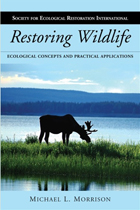 Restoring Wildlife: Ecological Concepts and Practical Applications
Michael L. Morrison
Island Press, 2009 Restoration plans must take into account the needs of current or desired wildlife species in project areas. Restoring Wildlife gives ecologists, restorationists, administrators, and other professionals involved with restoration projects the tools they need to understand essential ecological concepts, helping them to design restoration projects that can improve conditions for native species of wildlife. It also offers specific guidance and examples on how various projects have been designed and implemented. The book interweaves theoretical and practical aspects of wildlife biology that are directly applicable to the restoration and conservation of animals. It provides an understanding of the fundamentals of wildlife populations and wildlife-habitat relationships as it explores the concept of habitat, its historic development, components, spatialtemporal relationships, and role in land management. It applies these concepts in developing practical tools for professionals. Restoring Wildlife builds on the foundation of material presented in Wildlife Restoration, published by Island Press in 2002, offering the basic information from that book along with much updated material in a reorganized and expanded format. Restoring Wildlife is the only single source that deals with wildlife and restoration, and is an important resource for practicing restorationists and biologists as well as undergraduate and graduate students in wildlife management, ecological restoration, environmental science, and related fields.
 Restraining Rage: The Ideology of Anger Control in Classical Antiquity
William V. Harris
Harvard University Press, 2004 The angry emotions, and the problems they presented, were an ancient Greek preoccupation from Homer to late antiquity. From the first lines of the Iliad to the church fathers of the fourth century A.D., the control or elimination of rage was an obsessive concern. From the Greek world it passed to the Romans.
Drawing on a wide range of ancient texts, and on recent work in anthropology and psychology, Restraining Rage explains the rise and persistence of this concern. W. V. Harris shows that the discourse of anger-control was of crucial importance in several different spheres, in politics--both republican and monarchical--in the family, and in the slave economy. He suggests that it played a special role in maintaining male domination over women. He explores the working out of these themes in Attic tragedy, in the great Greek historians, in Aristotle and the Hellenistic philosophers, and in many other kinds of texts.
From the time of Plato onward, educated Greeks developed a strong conscious interest in their own psychic health. Emotional control was part of this. Harris offers a new theory to explain this interest, and a history of the anger-therapy that derived from it. He ends by suggesting some contemporary lessons that can be drawn from the Greek and Roman experience.
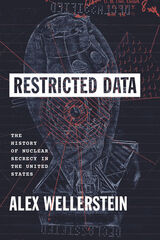 Restricted Data: The History of Nuclear Secrecy in the United States
Alex Wellerstein
University of Chicago Press, 2021 The first full history of US nuclear secrecy, from its origins in the late 1930s to our post–Cold War present.
The American atomic bomb was born in secrecy. From the moment scientists first conceived of its possibility to the bombings of Hiroshima and Nagasaki and beyond, there were efforts to control the spread of nuclear information and the newly discovered scientific facts that made such powerful weapons possible. The totalizing scientific secrecy that the atomic bomb appeared to demand was new, unusual, and very nearly unprecedented. It was foreign to American science and American democracy—and potentially incompatible with both. From the beginning, this secrecy was controversial, and it was always contested. The atomic bomb was not merely the application of science to war, but the result of decades of investment in scientific education, infrastructure, and global collaboration. If secrecy became the norm, how would science survive?
Drawing on troves of declassified files, including records released by the government for the first time through the author’s efforts, Restricted Data traces the complex evolution of the US nuclear secrecy regime from the first whisper of the atomic bomb through the mounting tensions of the Cold War and into the early twenty-first century. A compelling history of powerful ideas at war, it tells a story that feels distinctly American: rich, sprawling, and built on the conflict between high-minded idealism and ugly, fearful power.
Restructuring Architectural Theory
Edited by Marco Diani and Catherine Ingraham
Northwestern University Press, 1989 Restructuring Architectural Theory addresses the impact of contemporary critical theory, from poststructuralism to deconstruction and beyond, on architecture. This unique collection of essays will be invaluable to students and scholars as well as to architects and art historians for the range of issues it covers and the depth of analysis it provides.
Restructuring Domination: Industrialists and the State in Ecuador
Catherine M Conaghan
University of Pittsburgh Press, 1988 The industrial development of Ecuador has made fortunes for some, but has largely bypassed the general population. Armed by its new power, the bourgeoisie has captured sate mechanisms for its own advancement, leading to the paradox of a “democratic authoritarianism.” In this study, Catherine M. Conaghan views the crucial differences between the social and economic changes in newly developed Latin American nations and those of the southern cone. Using Ecuador as her case study, she shows how industrial growth has given birth to an exclusive, ingrown bourgeoisie that is highly dependent on the state and foreign capital and is increasingly alienated from the peasants and urban poor.
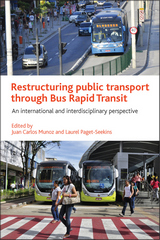 Restructuring Public Transport through Bus Rapid Transit: An International and Interdisciplinary Perspective
Edited by Juan Carlos Munoz and Laurel Paget-Seekins
Bristol University Press, 2016 Bus Rapid Transit (BRT) is increasingly being discussed as an affordable way for cities to build sustainable rapid transit infrastructure. This is the first book to examine the opportunities presented by BRT along with the significant challenges cities face in the implementation of successful systems. The difficulties can be myriad: new institutional relationships have to be developed among governments, operators, and the public; projects have to be designed and implemented to handle large passenger flows in the most efficient manner possible; and these changes are not taking place on a blank slate, but within existing transportation systems, political and cultural contexts, and urban development patterns. Addressing these challenges from an international perspective and across a range of disciplines, from urban planning to public policy and economics, contributors offer technical solutions to specific problems and identify what still needs to be done to realize their vision of global sustainable transport.
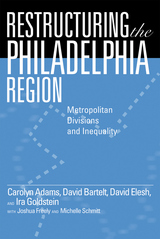 Restructuring the Philadelphia Region: Metropolitan Divisions and Inequality
Carolyn Adams, David W. Bartelt, David Elesh and Ira Goldstein with Joshua Freely Michelle Schmitt
Temple University Press, 2008 Restructuring the Philadelphia Region offers one of the most comprehensive and careful investigations written to date about metropolitan inequalities in America’s large urban regions. Moving beyond simplistic analyses of cities-versus-suburbs, the authors use a large and unique data set to discover the special patterns of opportunity in greater Philadelphia, a sprawling, complex metropolitan region consisting of more than 350 separate localities. With each community operating its own public services and competing to attract residents and businesses, the places people live offer them dramatically different opportunities. The book vividly portrays the region’s uneven development—paying particular attention to differences in housing, employment and educational opportunities in different communities—and describes the actors who are working to promote greater regional cooperation. Surprisingly, local government officials are not prominent among those actors. Instead, a rich network of “third-sector” actors, represented by nonprofit organizations, quasi-governmental authorities and voluntary associations, is shaping a new form of regionalism.
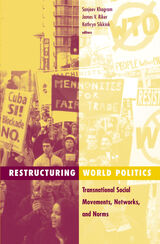 Restructuring World Politics: Transnational Social Movements, Networks, And Norms
Sanjeev Khagram
University of Minnesota Press, 2002 From the earliest campaign against Augusto Pinochet’s repressive practices to the recent massive demonstrations against the World Trade Organization, transnational collective action involving nongovernmental organizations has been restructuring politics and changing the world. Ranging from Santiago to Seattle and covering more than twenty-five years of transnational advocacy, the essays in Restructuring World Politics offer a clear, richly nuanced picture of this process and its far-reaching implications in an increasingly globalized political economy. The book brings together scholars, activists, and policy makers to show how such advocacy addresses—and reshapes—key issues in the areas of labor, human rights, gender justice, democratization, and sustainable development throughout the world. A primary goal of transnational advocacy is to create, strengthen, implement, and monitor international norms. How transnational networks go about doing this, why and when they succeed, and what problems and complications they face are the main themes of this book. Looking at a wide range of cases where nongovernmental actors attempt to change norms and the practices of states, international organizations, and firms in the private sector—from debt restructuring to protecting human rights, from anti-dam projects in India to the prodemocracy movement in Indonesia—the authors compellingly depict international nongovernmental organizations and transnational social movements as considerable, emerging powers in international politics, initiating, facilitating, and directing the transformation of global norms and practices. Contributors: Karen Brown Thompson, U of Minnesota; Charles T. Call, Brown U; Elizabeth A. Donnelly, Harvard U; Darren Hawkins, Brigham Young U; Thalia G. Kidder; Smitu Kothari; Paul J. Nelson, U of Pittsburgh; August Nimtz, U of Minnesota; Mark Ritchie, Institute for Agriculture and Trade Policy; Jackie Smith, SUNY Stony Brook; Daniel C. Thomas, U of Illinois, Chicago.
The Resurgence of Conservatism in Anglo-American Democracies
Barry Cooper, Allan Kornberg, and William Mishler, eds.
Duke University Press, 1987 This work presents analyses by experts on the rise of anew tide of conservative governments in the United States, Canada, and Great Britain in an attempt to find what, if any, common ideologies and programs unite them, with what results, in terms of institutional change and policy direction, have been, and what are the prospects for permanent change.
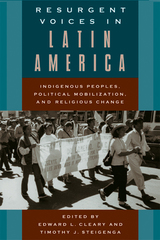 Resurgent Voices in Latin America: Indigenous Peoples, Political Mobilization, and Religious Change
Cleary, Edward L.
Rutgers University Press, 2004 After more than 500 years of marginalization, Latin America’s forty million Indians have recently made major strides in gaining political recognition and civil rights. In this book, social scientists explore the important role of religion in indigenous activism, showing the ways that religion has strengthened indigenous identity and contributed to the struggle for indigenous rights in the region.
Drawing on case studies from Bolivia, Peru, Guatemala, Ecuador, Paraguay, and Mexico, the contributors explore four key questions. How have traditional religions interacted with Christianity to produce new practices and beliefs? What resources, motivations, and ideological legitimacies do religious institutions provide for indigenous social movements? How effective are these movements in achieving their goals? Finally, as new religious groups continue to compete for adherents in the region, how will individuals’ religious choices affect political outcomes?
Resurgent Voices in Latin America offers new insight into the dynamics of indigenous social movements and into the complex and changing world of Latin American religions. The essays show that religious beliefs, practices, and institutions have both affected and been affected by political activism.
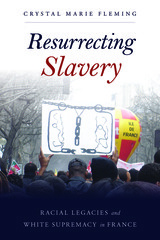 Resurrecting Slavery: Racial Legacies and White Supremacy in France
Crystal Marie Fleming
Temple University Press, 2017 How can politicians and ordinary citizens face the racial past in a country that frames itself as colorblind? In her timely and provocative book, Resurrecting Slavery, Crystal Fleming shows how people make sense of slavery in a nation where talking about race, colonialism, and slavery remains taboo. Noting how struggles over the meaning of racial history are informed by contemporary politics of race, she asks: What kinds of group identities are at stake today for activists and French people with ties to overseas territories where slavery took place? Fleming investigates the connections and disconnections that are made between racism, slavery, and colonialism in France. She provides historical context and examines how politicians and commemorative activists interpret the racial past and present. Resurrecting Slavery also includes in-depth interviews with French Caribbean migrants outside the commemorative movement to address the everyday racial politics of remembrance. Bringing a critical race perspective to the study of French racism, Fleming’s groundbreaking study provides a more nuanced understanding of race in France along with new ways of thinking about the global dimensions of slavery, anti-blackness, and white supremacy.
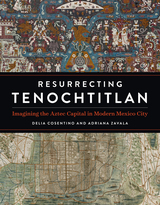 Resurrecting Tenochtitlan: Imagining the Aztec Capital in Modern Mexico City
Delia Cosentino and Adriana Zavala
University of Texas Press, 2023 Honorable Mention, ALAA-Arvey Foundation Book Award, Association of Latin American Art
Finalist, 2024 Charles Rufus Morey Book Award, College Art Association
How Mexican artists and intellectuals created a new identity for modern Mexico City through its ties to Aztec Tenochtitlan.
After archaeologists rediscovered a corner of the Templo Mayor in 1914, artists, intellectuals, and government officials attempted to revive Tenochtitlan as an instrument for reassessing Mexican national identity in the wake of the Revolution of 1910. What followed was a conceptual excavation of the original Mexica capital in relation to the transforming urban landscape of modern Mexico City. Revolutionary-era scholars took a renewed interest in sixteenth century maps as they recognized an intersection between Tenochtitlan and the foundation of a Spanish colonial settlement directly over it. Meanwhile, Mexico City developed with modern roads and expanded civic areas as agents of nationalism promoted concepts like indigenismo, the embrace of Indigenous cultural expressions. The promotion of artworks and new architectural projects such as Diego Rivera’s Anahuacalli Museum helped to make real the notion of a modern Tenochtitlan. Employing archival materials, newspaper reports, and art criticism from 1914 to 1964, Resurrecting Tenochtitlan connects art history with urban studies to reveal the construction of a complex physical and cultural layout for Mexico’s modern capital.
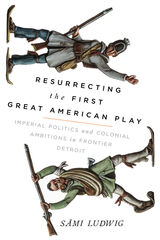 Resurrecting the First Great American Play: Imperial Politics and Colonial Ambitions in Frontier Detroit
Sämi Ludwig
University of Wisconsin Press, 2020 In the mid-eighteenth century, the Ottawa chief Pontiac (also spelled Ponteach) led an intertribal confederacy that resisted British power in the Great Lakes region. This event was immortalized in the play Ponteach, or the Savages of America: A Tragedy, attributed to the infamous frontier soldier Robert Rogers. Never performed, it is one of the earliest theatrical renderings of the region, depicting its hero in a way that called into question eighteenth-century constructions of Indigenous Americans.
Sämi Ludwig contends that Ponteach's literary and artistic merits are worthy of further exploration. He investigates questions of authorship and analyzes the play's content, embracing its many contradictions as enriching windows into the era. In this way, he suggests using Ponteach as a tool to better understand British imperialism in North America and the emerging theatrical forms of the Young Republic.
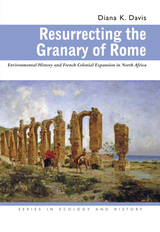 Resurrecting the Granary of Rome: Environmental History and French Colonial Expansion in North Africa
Diana K. Davis
Ohio University Press, 2007 Tales of deforestation and desertification in North Africa have been told from the Roman period to the present. Such stories of environmental decline in the Maghreb are still recounted by experts and are widely accepted without question today. International organizations such as the United Nations frequently invoke these inaccurate stories to justify environmental conservation and development projects in the arid and semiarid lands in North Africa and around the Mediterranean basin. Recent research in arid lands ecology and new paleoecological evidence, however, do not support many claims of deforestation, overgrazing, and desertification in this region. Diana K. Davis’s pioneering analysis reveals the critical influence of French scientists and administrators who established much of the purported scientific basis of these stories during the colonial period in Algeria, Morocco, and Tunisia, illustrating the key role of environmental narratives in imperial expansion. The processes set in place by the use of this narrative not only systematically disadvantaged the majority of North Africans but also led to profound changes in the landscape, some of which produced the land degradation that continues to plague the Maghreb today. Resurrecting the Granary of Rome exposes many of the political, economic, and ideological goals of the French colonial project in these arid lands and the resulting definition of desertification that continues to inform global environmental and development projects. The first book on the environmental history of the Maghreb, this volume reframes much conventional thinking about the North African environment. Davis’s book is essential reading for those interested in global environmental history.
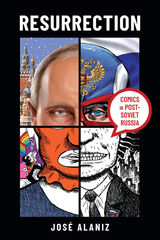 Resurrection: Comics in Post-Soviet Russia
José Alaniz
Ohio State University Press, 2022 Winner, 2023 Eisner Award for Best Comics-Related Book
Resurrection: Comics in Post-Soviet Russia traces the “kopecks to rubles” journey of Russian comics at the turn of the century. As the follow-up to José Alaniz’s groundbreaking Komiks: Comic Art in Russia (2010), Resurrection authoritatively and exhaustively details the Russian comic landscape of the last three decades: beginning after the 1991 fall of the Soviet Union and encompassing the fourth Putin administration, the COVID-19 crisis, and beyond. Bolstering his analysis with interviews with some of the major figures in Russia’s comics industry, Alaniz particularly focuses on the representation of masculinity, disability, historical trauma, and superheroes, as well as on the recent rise of fandom, alternative micropresses, and nonfiction graphic narrative. Resurrection is a sweeping discussion of the metamorphosis of contemporary Russian comic art from its rebirth to its entry into mainstream culture.
Resurrection from the Underground: Feodor Dostoevsky
René Girard
Michigan State University Press, 2012 In a fascinating analysis of critical themes in Feodor Dostoevsky’s work, René Girard explores the implications of the Russian author’s “underground,” a site of isolation, alienation, and resentment. Brilliantly translated, this book is a testament to Girard’s remarkable engagement with Dostoevsky’s work, through which he discusses numerous aspects of the human condition, including desire, which Girard argues is “triangular” or “mimetic”—copied from models or mediators whose objects of desire become our own. Girard’s interdisciplinary approach allows him to shed new light on religion, spirituality, and redemption in Dostoevsky’s writing, culminating in a revelatory discussion of the author’s spiritual understanding and personal integration. Resurrection is an essential and thought-provoking companion to Dostoevsky’s Notes from the Underground.
Resurrection, Immortality, and Eternal Life in Intertestamental Judaism and Early Christianity: Expanded Edition
George W. E. Nickelsburg
Harvard University Press In this groundbreaking publication, originally published in 1972, George Nickelsburg places ideas in their historical circumstances as he probes biblical and postbiblical texts and challenges widely accepted scholarship. The continuities in literary forms demonstrate that divine justice was the central issue, but that people differed as to whether that justice was enacted in this life, in the assumption to heaven, in a resurrection, or in the ongoing life as an immortal soul.
The expanded edition includes subsequent studies on the resurrection accounts and theologies of the New Testament, the New Testament passion narratives, and Jewish and Christian theologies about the Son of Man.
This book provides a window into aspects of the ancient apocalyptic worldview whose dynamics and functions are often misunderstood.
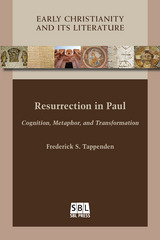 Resurrection in Paul: Cognition, Metaphor, and Transformation
Frederick S. Tappenden
SBL Press, 2016 Explore the embodied foundations of Paul's resurrection ideals It is commonly recognized that Paul's resurrection ideals are bodily ideals, though this dictum is usually configured along literal and metaphorical lines. The realism of future resurrected bodies is disconnected from the metaphoricity of bodily transformation in the present. Drawing on cognitive linguistics, this fresh and innovative study addresses this problem. By eschewing the opposition of metaphor and realism, Tappenden explores the concepts and metaphors Paul uses to fashion notions of resurrection, and the uses to which those notions are put. Rather than asserting resurrection as a disembodied, cognicentric proposition, this book illuminates the body's central role in shaping and grounding the apostle's thought and writings. Features: - Close examination of Paul's letters within multiple, interlocking cultural contexts
- Provides a novel and fresh approach to assessing (in)coherence across the undisputed letters
- Addresses the materialist nature of early Christian and Judean resurrection ideals without compromising the metaphoricity of those ideals
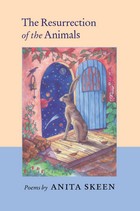 Resurrection of the Animals
Anita Skeen
Michigan State University Press, 2002 The Resurrection of the Animals explores the trinity of the natural world, the humans adrift in it, and the animals that accompany them. Although each of the five sections centers on a particular theme, motifs of change, loss, cycles, and transformation thread through the collection, weaving the parts into a unified whole. Individual sections focus on: the seasons of the year, and by extension, people’s lives; the power of memory and its limitations; the theory that what is magical often resides within; and, the mysteries of love. The Resurrection of the Animals culminates in the title section, revealing the lessons of kinship with animals and how epiphanies occur in the simplest actions— taking a walk with dogs or catching sight of a bird on the wing. These poems suggest that memory, association, and interaction with the tangible world can revive a part of the self that has slipped below the depths of consciousness.
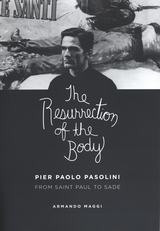 The Resurrection of the Body: Pier Paolo Pasolini from Saint Paul to Sade
Armando Maggi
University of Chicago Press, 2009 Italian novelist, poet, and filmmaker Pier Paolo Pasolini was brutally killed in Rome in 1975, a macabre end to a career that often explored humanity’s capacity for violence and cruelty. Along with the mystery of his murderer’s identity, Pasolini left behind a controversial but acclaimed oeuvre as well as a final quartet of beguiling projects that signaled a radical change in his aesthetics and view of reality. The Resurrection of the Body is an original and compelling interpretation of these final works: the screenplay Saint Paul, the scenario for Porn-Theo-Colossal, the immense and unfinished novel Petrolio, and his notorious final film, Salò or the 120 Days of Sodom, a disturbing adaptation of the writings of the Marquis de Sade. Together these works, Armando Maggi contends, reveal Pasolini’s obsession with sodomy and its role within his apocalyptic view of Western society. One of the first studies to explore the ramifications of Pasolini’s homosexuality, The Resurrection of the Body also breaks new ground by putting his work into fruitful conversation with an array of other thinkers such as Freud, Strindberg, Swift, Henri Michaux, and Norman O. Brown.
Resurrectionists
Russell Working
University of Iowa Press, 1987 The stories in this accomplished collection range in setting from the West Indies to the Pacific Northwest, presenting characters that include a photojournalist in Haiti introduced to the islanders' belief in zombiism, an ex-policeman working in a paper mill, a hospital patient on New Year's Day, and a teenager practicing martial arts. Their stories are at times grotesque and desperate but always engrossing. What sets these stories apart from other contemporary fiction is their skilled and evocative sense of place—Working creates atmospheres that almost become separate characters with their own critical significance and influence. Convincing in his portrayal of a harsh, often violent side of life, Working jars us and demands attention.
The Resurrectionists
Collins, Michael
University of Iowa Press, 2021 PNBA Novel of the Year New York Times Notable Book of the Year Haunted by the deaths of his parents and uncle, Frank Cassidy journeys north to dispute a cousin's claim to the family farm, where he meets a stranger who might resolve mysteries about Frank's past.
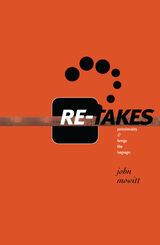 Re-takes: Postcoloniality and Foreign Film Languages
John Mowitt
University of Minnesota Press, 2005 Exploring several dimensions of the problem of "film languages," this volume engages the complications inherent in the study of the "other" and investigates the intricate relationship between postcoloniality, national identity, ideology, and filmmaking. Author John Mowitt establishes how Eurocentrism sustains both the concept of the foreign language film and the flawed initiative of multiculturalism. Using bilingualism and the concept of foreign film language, Re-takes pushes film studies beyond both linguistics and psychoanalysis to resituate is within the networks of global cultural communication.Through close readings of the bilingual films of Senegalese filmmaker Sembene Ousmane and Bolivian filmmaker Jorge Sanjines, Mowitt articulates the poetics and politics of postcoloniality in the global cinematic field, and challenges film studies to reflect on the relation between its organizing analytical distinctions - national and foreign, textual and institutional - and its position within globalization. Examining how elements involved in bilingual films have implications for the way academic intellectuals classify and misappropriate cultural forms, Re-takes is a provocative intervention into ongoing discussions of the changing nature of film and media studies.
 Retelling / Rereading: The Fate of Storytelling in Modern Times
Kroeber, Karl
Rutgers University Press, 1992 "In this passionate, erudite, and far-ranging book, Kroeber renews for our multi-cultural age a fundamental argument: the stories we tell, hear, read, and see make a difference to the lives we read."--Jonathan Arac, University of Pittsburgh In this highly readable and thoroughly original book, Karl Kroeber questions the assumptions about storytelling we have inherited from the exponents of modernism and postmodernism. These assumptions have led to overly formalistic and universalizing conceptions of narrative that mystify the social functions of storytelling. Even "politically correct" critics have Eurocentrically defined story as too "primitive" to be taken seriously as art. Kroeber reminds us that the fundamental value of storytelling lies in retelling, this paradoxical remaking anew that constitutes story's role as one of the essential modes of discourse. His work develops some recent anthropological and feminist criticism to delineate the participative function of audience in narrative performances. In depicting how audiences contribute to storytelling transactions, Kroeber carries us into a surprising array of examples, ranging from a Mesopotamian sculpture to Derek Walcott's Omeros; startling juxtapositions, such as Cervantes to Vermeer; and innovative readings of familiar novels and paintings. Tom Wolfe's comparison of his Bonfire of the Vanities to Vanity Fair is critically analyzed, as are the differences between Thackeray's novel and Joyce's Ulysses and Flaubert's Madame Bovary. Other discussions focus on traditional Native American stories, Henry James's The Ambassadors, Calvino's If on a winter's night a traveler, and narrative paintings of Giotto, Holman Hunt, and Roy Lichtenstein. Kroeber deploys the ideas of Ricoeur and Bakhtin to reassess dramatically the field of narrative theory, demonstrating why contemporary narratologists overrate plot and undervalue story's capacity to give meaning to the contingencies of real experience. Retelling/Rereading provides solid theoretical grounding for a new understanding of storytelling's strange role in twentieth-century art and of our need to develop a truly multicultural narrative criticism.
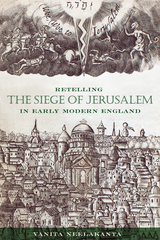 Retelling the Siege of Jerusalem in Early Modern England
Vanita Neelakanta
University of Delaware Press, 2019 This compelling book explores sixteenth- and seventeenth-century English retellings of the Roman siege of Jerusalem and the way they informed and were informed by religious and political developments. The siege featured prominently in many early modern English sermons, ballads, plays, histories, and pamphlets, functioning as a touchstone for writers who sought to locate their own national drama of civil and religious tumult within a larger biblical and post-biblical context. Reformed England identified with besieged Jerusalem, establishing an equivalency between the Protestant church and the ancient Jewish nation but exposing fears that a displeased God could destroy his beloved nation. As print culture grew, secular interpretations of the siege ran alongside once-dominant providentialist narratives and spoke to the political anxieties in England as it was beginning to fashion a conception of itself as a nation.
Published by University of Delaware Press. Distributed worldwide by Rutgers University Press.
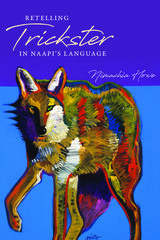 Retelling Trickster in Naapi's Language
Nimachia Howe
University Press of Colorado, 2019 Retelling Trickster in Naapi’s Language is an examination of Nitsitapiisinni (Blackfoot) origin stories about one of the most powerful and unpredictable of the early creators in Niitsitapii consciousness and chronology: Naapi. Through in-depth linguistic analysis, Nimachia Howe reinterprets the earliest references to Naapi, offering a more authentic understanding of his identity and of the meanings and functions of the stories in which he appears.
Naapi is commonly and inaccurately categorized by Western scholars as a trickster figure. Research on him is rife with misnomers and repeated misinterpretations, many resulting from untranslatable terms and concepts, comparisons with the binary tenets of “good” vs. “bad,” and efforts by Niitsitapii storytellers to protect the stories. The five stories included in their entirety in this volume present Naapi’s established models of reciprocity, connection, kinship, reincarnation, and offerings, shown in descriptions of, and predictions for, the balance between life and death, the rising and setting of planets, wind directions and forces, and the cyclical nature of animals, birds, plants, glaciers, and rivers.
Retelling Trickster in Naapi’s Language will be of interest to students and scholars of Native American studies, ethnography, folklore, environmental philosophy, and Indigenous language, literature, and religion.
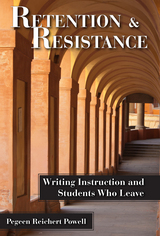 Retention and Resistance: Writing Instruction and Students Who Leave
Pegeen Reichert Powell
Utah State University Press, 2014 Retention and Resistance combines personal student narratives with a critical analysis of the current approach to retention in colleges and universities, and explores how retention can inform a revision of goals for first-year writing teachers. Retention is a vital issue for institutions, but as these students’ stories show, leaving college is often the result of complex and idiosyncratic individual situations that make institutional efforts difficult and ultimately ineffective. An adjustment of institutional and pedagogical objectives is needed to refocus on educating as many students as possible, including those who might leave before graduation. Much of the pedagogy, curricula, and methodologies of composition studies assume students are preparing for further academic study. Retention and Resistance argues for a new kairotic pedagogy that moves toward an emphasis on the present classroom experience and takes students’ varied experiences into account. Infusing the discourse of retention with three individual student voices, Powell explores the obligation of faculty to participate in designing an institution that educates all students, no matter where they are in their educational journey or how far that journey will go.
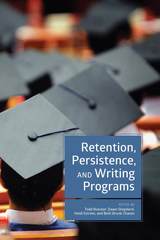 Retention, Persistence, and Writing Programs
Todd Ruecker
Utah State University Press, 2017 From scholars working in a variety of institutional and geographic contexts and with a wide range of student populations, Retention, Persistence, and Writing Programs offers perspectives on how writing programs can support or hinder students’ transitions to college. The contributors present individual and program case studies, student surveys, a wealth of institutional retention data, and critical policy analysis. Rates of student retention in higher education are a widely acknowledged problem: although approximately 66 percent of high school graduates begin college, of those who attend public four-year institutions, only about 80 percent return the following year, with 58 percent graduating within six years. At public two-year institutions, only 60 percent of students return, and fewer than a third graduate within three years. Less commonly known is the crucial effect of writing courses on these statistics. First-year writing is a course that virtually all students have to take; thus, writing programs are well-positioned to contribute to larger institutional conversations regarding retention and persistence and should offer themselves as much-needed sites for advocacy, research, and curricular innovation. Retention, Persistence, and Writing Programs is a timely resource for writing program administrators as well as for new writing teachers, advisors, administrators, and state boards of education. Contributors: Matthew Bridgewater, Cristine Busser, Beth Buyserie, Polina Chemishanova, Michael Day, Bruce Feinstein, Patricia Freitag Ericsson, Nathan Garrett, Joanne Baird Giordano, Tawanda Gipson, Sarah E. Harris, Mark Hartlaub, Holly Hassel, Jennifer Heinert, Ashley J. Holmes, Rita Malenczyk, Christopher P. Parker, Cassandra Phillips, Anna Plemons, Pegeen Reichert Powell, Marc Scott, Robin Snead, Sarah Elizabeth Snyder, Sara Webb-Sunderhaus, Susan Wolff Murphy
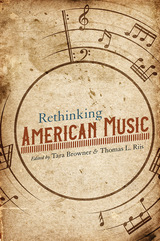 Rethinking American Music
Edited by Tara Browner and Thomas L. Riis
University of Illinois Press, 2019 In Rethinking American Music, Tara Browner and Thomas L. Riis curate essays that offer an eclectic survey of current music scholarship. Ranging from Tin Pan Alley to Thelonious Monk to hip hop, the contributors go beyond repertory and biography to explore four critical yet overlooked areas: the impact of performance; patronage's role in creating music and finding a place to play it; personal identity; and the ways cultural and ethnographic circumstances determine the music that emerges from the creative process. Many of the articles also look at how a piece of music becomes initially popular and then exerts a lasting influence in the larger global culture. The result is an insightful state-of-the-field examination that doubles as an engaging short course on our complex, multifaceted musical heritage. Contributors: Karen Ahlquist, Amy C. Beal, Mark Clagu,. Esther R. Crookshank, Todd Decker, Jennifer DeLapp-Birkett, Joshua S. Duchan, Mark Katz, Jeffrey Magee, Sterling E. Murray, Guthrie P. Ramsey Jr., David Warren Steel, Jeffrey Taylor, and Mark Tucker
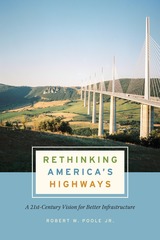 Rethinking America's Highways: A 21st-Century Vision for Better Infrastructure
Robert W. Poole Jr.
University of Chicago Press, 2018 Americans spend hours every day sitting in traffic. And the roads they idle on are often rough and potholed, their exits, tunnels, guardrails, and bridges in terrible disrepair. According to transportation expert Robert Poole, this congestion and deterioration are outcomes of the way America provides its highways. Our twentieth-century model overly politicizes highway investment decisions, short-changing maintenance and often investing in projects whose costs exceed their benefits.
In Rethinking America’s Highways, Poole examines how our current model of state-owned highways came about and why it is failing to satisfy its customers. He argues for a new model that treats highways themselves as public utilities—like electricity, telephones, and water supply. If highways were provided commercially, Poole argues, people would pay for highways based on how much they used, and the companies would issue revenue bonds to invest in facilities people were willing to pay for. Arguing for highway investments to be motivated by economic rather than political factors, this book makes a carefully-reasoned and well-documented case for a new approach to highways that is sure to inform future decisions and policies for U.S. infrastructure.
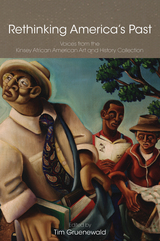 Rethinking America's Past: Voices from the Kinsey African American Art and History Collection
Edited by Tim Gruenewald
University of Minnesota Press, 2019 While visitors to art and history museums may be there to simply enjoy the curated objects, the question of what is included (and excluded) in these collections and who has the power over this process echoes the struggle for inclusion that is so central to the African American experience. Since its inception, the Kinsey African American Art and History Collection® has played an important role in this struggle, seeking out objects that give voice to previously excluded experiences, and providing an alternative to the limits of institutional collections.
Among the first scholarly books dedicated to a private African American collection, Rethinking America’s Past: Voices from the Kinsey African American Art and History Collection both chronicles the reach of this important cultural collection and contributes to its project by sharing selected objects and stories with a broader audience. Essays range in subject from iconic African American artists, such as Loïs Mailou Jones and Beauford Delaney, to important historical figures such as Frederick Douglas and Martin Luther King, to individuals whose experiences might be lost to history but for the found objects that preserve their stories. Rethinking America’s Past demonstrates how the African American story, from slavery through the present, is represented and can be actively remembered through the act of collecting.
Rethinking America’s Past will appeal to audiences interested in African American history as well as art history, but its real power is in linking the two, showing how important collections are in constructing and repairing historical narratives, and how in the words of editor Tim Gruenewald, “Collecting overlooked aspects of our past and sharing such collections enables a deeper understanding of the present moment, and facilitates a more inclusive and just future.”
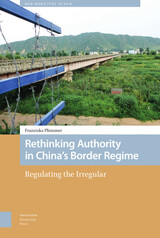 Rethinking Authority in China’s Border Regime: Regulating the Irregular
Franziska Plümmer
Amsterdam University Press, 2022 In the 21st century, governments around the globe are faced with the question on how to tackle new migratory mobilities. Governments increasingly become aware of irregular immigration and are forced to re-negotiate the dilemma of open but secure borders. Rethinking Authority in China’s Border Regime: Regulating the Irregular investigates the Chinese government’s response to this phenomenon. Hence, this book presents a comprehensive analysis of the Chinese border regime. It explores the regulatory framework of border mobility in China by analysing laws, institutions, and discourses as part of an ethnographic border regime analysis. It argues that the Chinese state deliberately creates ‘zones of exception’ along its border. In these zones, local governments function as ‘scalar managers’ that establish cross-border relations to facilitate cross-border mobility and create local migration systems that build on their own notion of legality by issuing locally valid border documents. The book presents an empirically rich story of how border politics are implemented and theoretically contributes to debates on territoriality and sovereignty as well as to the question of how authority is exerted through border management. Empirically, the analysis builds on two case studies at the Sino-Myanmar and Sino-North Korean borders to illustrate how local practices are embedded in multiscalar mobility regulation including regional organizations such as the Greater Mekong Subregion and the Greater Tumen Initiative.
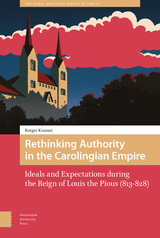 Rethinking Authority in the Carolingian Empire: Ideals and Expectations during the Reign of Louis the Pious (813-828)
Rutger Kramer
Amsterdam University Press, 2019 By the early ninth century, the responsibility for a series of social, religious and political transformations had become an integral part of running the Carolingian empire. This became especially clear when, in 813/4, Louis the Pious and his court seized the momentum generated by their predecessors and broadened the scope of these reforms ever further. These reformers knew they represented a movement greater than the sum of its parts; the interdependence between those wielding imperial authority and those bearing responsibility for ecclesiastical reforms was driven by comprehensive, yet still surprisingly diverse expectations. Taking this diversity as a starting point, this book takes a fresh look at the optimistic first decades of the ninth century. Extrapolating from a series of detailed case studies rather than presenting a new grand narrative, it offers new interpretations of contemporary theories of personal improvement and institutional correctio, and shows the self-awareness of its main instigators as they pondered what it meant to be a good Christian in a good Christian empire.
Rethinking Bakhtin: Extensions and Challenges
Gary Saul Morson and Caryl Emerson
Northwestern University Press, 1989 The essays in Rethinking Bakhtin: Extensions and Challenges extend Bakhtin's concepts in important new directions and challenge Bakhtin's own use of his most cherished ideas. Four sets of paired essays explore the theory of parody, the relation of de Man's poetics to Bakhtin's dialogics, Bakhtin's approach to Tolstoy and ideological literature generally, and the dangers of dialogue, not only in practice but also as an ideal.
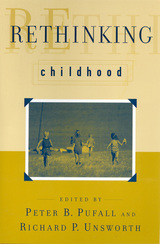 Rethinking Childhood
Pufall, Peter B.
Rutgers University Press, 2003 Being a child in American society can be problematic. Twenty percent of American children live in poverty, parents are divorcing at high rates, and educational institutions are not always fulfilling their goals. Against this backdrop, children are often patronized or idealized by adults. Rarely do we look for the strengths within children that can serve as the foundation for growth and development. In Rethinking Childhood, twenty contributors, coming from the disciplines of anthropology, government, law, psychology, education, religion, philosophy, and sociology, provide a multidisciplinary view of childhood by listening and understanding the ways children shape their own futures. Topics include education, poverty, family life, divorce, neighborhood life, sports, the internet, and legal status. In all these areas, children have both voice and agency. They construct their own social networks and social reality, sort out their own values, and assess and cope with the perplexing world around them. The contributors present ideas that lead not only to new analyses but also to innovative policy applications.
Taken together, these essays develop a new paradigm for understanding childhood as children experience these years. This paradigm challenges readers to develop fresh ways of listening to children’s voices that enable both children and adults to cross the barriers of age, experience, and stereotyping that make communication difficult.
A volume in the Rutgers Series in Childhood Studies, edited by Myra Bluebond-Langner.
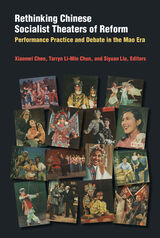 Rethinking Chinese Socialist Theaters of Reform: Performance Practice and Debate in the Mao Era
Xiaomei Chen, Tarryn Li-Min Chun, and Siyuan Liu, Editors
University of Michigan Press, 2021 The profound political, economic, and social changes in China in the second half of the twentieth century have produced a wealth of scholarship; less studied however is how cultural events, and theater reforms in particular, contributed to the dynamic landscape of contemporary Chinese society. Rethinking Chinese Socialist Theaters of Reform fills this gap by investigating the theories and practice of socialist theater and their effects on a diverse range of genres, including Western-style spoken drama, Chinese folk opera, dance drama, Shanghai opera, Beijing opera, and rural theater. Focusing on the 1950s and ’60s, when theater art occupied a prominent political and cultural role in Maoist China, this book examines the efforts to remake theater in a socialist image. It explores the unique dynamics between official discourse, local politics, performance practice, and audience reception that emerged under the pressures of highly politicized cultural reform as well as the off-stage, lived impact of rapid policy change on individuals and troupes obscured by the public record. This multidisciplinary collection by leading scholars covers a wide range of perspectives, geographical locations, specific research methods, genres of performance, and individual knowledge and experience. The richly diverse approach leads readers through a nuanced and complex cultural landscape as it contributes significantly to our understanding of a crucial period in the development of modern Chinese theater and performance.
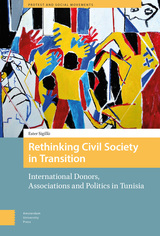 Rethinking Civil Society in Transition: International Donors, Associations and Politics in Tunisia
Ester Sigillò
Amsterdam University Press, 2023 This book illustrates the results of ethnographical research designed to shed light on the notion of civil society in a context characterized by the transformation of power relations. Such transformation is given by shifting resources, renewed local and international opportunities, and a general reframing of goals and objectives. The academic literature has usually relied on a substantialist understanding of the notion of civil society – referring to the latter as something that exists a priori or does something. This volume relies, instead, on a relational approach – where civil society becomes the name we give to a host of complex interactions in which local associations are involved in a time of reconfiguration of power relations. Building on this approach, this volume analyses the relational dynamics affecting Tunisian associations after the fall of the authoritarian regime in 2011 and their implications for the changing political order. Findings show two main interrelated trends: the nationwide professionalization of local associations and the localized networking strategies of various socio-political categories crossing the associational sector. The book shows how their members understand the standardization of local associations as a strategy to have guaranteed access to the public sphere and, therefore, to influence the changing political order.
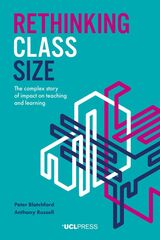 Rethinking Class Size: The Complex Story of Impact on Teaching and Learning
Peter Blatchford and Anthony Russell
University College London, 2020 The debate over whether class size matters for teaching and learning is one of the most enduring—and aggressive—in education research. Teachers often insist that small classes benefit their work, but many experts argue that evidence from research shows class size has little impact on pupil outcomes, and therefore does not matter. That dominant view has informed international policymaking. In Rethinking Class Size, the lead researchers on the world’s biggest study into class size effects present a counterargument. Through detailed analysis of the complex relations involved in the classroom they reveal the mechanisms that support teachers’ experience, and they conclude that class size matters very much indeed.
Drawing on twenty years of systematic classroom observations, surveys of practitioners, detailed case studies, and extensive reviews of research, Peter Blatchford and Anthony Russell contend that common ways of researching the impact of class size are limited and sometimes misguided. While class size may have no direct effect on pupil outcomes, it can have a significant impact on interconnections within classroom processes. In describing these connections, the book opens up the everyday world of the classroom and shows that the influence of class size is felt everywhere.
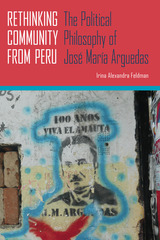 Rethinking Community from Peru: The Political Philosophy of José María Arguedas
Irina Alexandra Feldman
University of Pittsburgh Press, 2014 Peruvian novelist, poet, and anthropologist José María Arguedas (1911–1969) was a highly conflicted figure. As a mestizo, both European and Quechua blood ran through his veins and into his cosmology and writing. Arguedas’s Marxist influences and ethnographic work placed him in direct contact with the subalterns he would champion in his stories. His exposés of the conflicts between Indians and creoles, and workers and elites were severely criticized by his contemporaries, who sought homogeneity in the nation-building project of Peru.
In Rethinking Community from Peru, Irina Alexandra Feldman examines the deep political connotations and current relevance of Arguedas’s fiction to the Andean region. Looking principally to his most ambitious and controversial work, All the Bloods, Feldman analyzes Arguedas’s conceptions of community, political subjectivity, sovereignty, juridical norm, popular actions, and revolutionary change. She deconstructs his particular use of language, a mix of Quechua and Spanish, as a vehicle to express the political dualities in the Andes. As Feldman shows, Arguedas’s characters become ideological speakers and the narrator’s voice is often absent, allowing for multiple viewpoints and a powerful realism. Feldman examines Arguedas’s other novels to augment her theorizations, and grounds her analysis in a dialogue with political philosophers Walter Benjamin, Jean-Luc Nancy, Carl Schmitt, Jacques Derrida, Ernesto Laclau, and Álvaro García-Linera, among others.
In the current political climate, Feldman views the promise of Arguedas’s vision in light of Evo Morales’s election and the Bolivian plurality project recognizing indigenous autonomy. She juxtaposes the Bolivian situation with that of Peru, where comparatively limited progress has been made towards constitutional recognition of the indigenous groups. As Feldman demonstrates, the prophetic relevance of Arguedas’s constructs lie in their recognition of the sovereignty of all ethnic groups and their coexistence in the modern democratic nation-state, in a system of heterogeneity through autonomy—not homogeneity through suppression. Tragically for Arguedas, it was a philosophy he could not reconcile with the politics of his day, or from his position within Peruvian society.
Rethinking Community in Myanmar: Practices of We-Formation among Muslims and Hindus in Urban Yangon
Judith Beyer
National University of Singapore Press, 2023 Striking new insights into understanding community in Myanmar In this first anthropological study of Muslim and Hindu lives in urban Myanmar today, Beyer develops the concept of ‘we-formation’ to demonstrate that individuals are always more than members of wider groups. ‘We-formation’ complements her rich political, legal and historical analysis of ‘community’, a term used by Beyer’s interlocutors themselves, even as it reinforces ethno-religious stereotypes and their own minority status. The book also offers an interpretation of the dynamics of resistance to the attempted military coup of 2021.
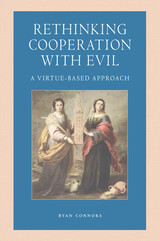 Rethinking Cooperation with Evil: A Virtue-Based Approach
Ryan Connors
Catholic University of America Press, 2023 Rethinking Cooperation with Evil: A Virtue-Based Approach applies Thomistic virtue theory to today’s most challenging questions of cooperation with evil.
For centuries, moralists have struggled to determine the conditions necessary to justify moral cooperation with evil. The English Jesuit Henry Davis even observed: “[T]here is no more difficult question than this in the whole range of Moral Theology.” This important book addresses this challenge by applying the virtue-based method of moral reasoning of St. Thomas Aquinas to issues of cooperation with evil.
Those who pastor souls report frequently receiving questions from attentive believers about whether a particular human action inadvertently contributes to some moral evil. Examples of potentially immoral cooperation with evil include whether one may shop at a particular franchise known for its support of abortion, whether Catholics may attend civil marriages outside the Church, or whether an organization may submit to government mandates that health insurance include payment for immoral practices.
Although recent moralists have tackled specific topics related to cooperation with evil, agreement on an overall common paradigm has not yet been reached. Rethinking Cooperation with Evil proposes a method for Christian believers and others to approach these questions from the foundation of the thought of St. Thomas Aquinas and the magisterial teaching of the Catholic Church. This text provides both an overall method for how to understand the issue of cooperation, as well as practical counsel for specific cases.
Rethinking Cooperation with Evil advances the theological conversation on this topic from both speculative and practical vantage points. To facilitate his argument, Connors utilizes historical analyses that contrast Aquinas’s method of moral reasoning with that of the casuist treatment of cooperation. Consequently, the book includes numerous case studies that will be of interest both to moral theologians and readers new to the topic.
Rethinking Coordination of Services to Refugees in Urban Areas: Managing the Crisis in Jordan and Lebanon
Shelly Culbertson
RAND Corporation, 2016 This study analyzes coordination of international and national entities managing the Syrian refugee response in urban areas in Jordan and Lebanon and provides recommendations on improving coordination strategies and practices. It presents a new framework for planning, evaluating, and managing refugee crises in urban settings, both in the Syrian refugee crisis as well as other such situations going forward.
 Rethinking Cosmopolitanism: Africa in Europe / Europe in Africa
Salah M. Hassan and Chika Okeke-Agula, special issue editors
Duke University Press, 2020 Contributors to this issue reconfigure concepts of art, culture, and politics through the lens of cosmopolitanism. Focusing on the historical and cultural entanglement of Africa and Europe at the intersection of decolonization and modernity, the contributors emphasize the potential of cosmopolitanism to shape possibilities for coexistence and living with difference among all people. Visual and textual essays address the causes and consequences of migration between Africa and Europe; the classification of artistic practices whose roots are not confined to any particular nation; and mid-twentieth-century debates on decolonization, modernity/modernism, and identity through a cosmopolitan viewpoint. Examining cosmopolitanism through theoretical perspectives as well as visual art practices, contributors to this heavily illustrated issue fill in the gaps in contemporary understandings of cultural and political dynamics between Africa and Europe.
Contributors. Hans Belting, Susan Buck-Morss, Jareh Das, Naminata Diabate, Fatima El Tayeb, Salah M. Hassan, Achille Mbembe, Sandy Prita Meier, Chika Okeke-Agulu, Tejumola Olaniyan, Manuela Ribeiro Sanches, Berni Searle, Bahia Shehab, Brett M. Van Hoesen, Selene Wendt, Siegfried Zielinski
Rethinking Environmental Governance
Diana Suhardiman
Leiden University Press, 2025 Rethinking Environmental Governance brings to light the pluralistic views, diverse forces, and multiple realities (re)shaping formal and informal decision-making structures, processes, and power interplay in environmental governance. Linking socio-economic drivers with the evolution of cultural norms, the (re)shaping of institutional arrangements, and ever-changing power relations, the book looks at processes of institutional emergence across spatio-temporal scales. Through case study illustrations from Asia, Africa, and Latin America, it illustrates how actors and institutions (co)produced political spaces of engagement as an integral part of their livelihood (re)making.
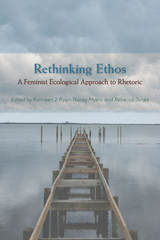 Rethinking Ethos: A Feminist Ecological Approach to Rhetoric
Edited by Kathleen J. Ryan, Nancy Myers, and Rebecca Jones
Southern Illinois University Press, 2016 Labels traditionally ascribed to women—mother, angel of the house, whore, or bitch—suggest character traits that do not encompass the complexities of women’s identities or empower women’s public speaking. Rethinking Ethos: A Feminist Ecological Approach to Rhetoric redefines the concept of ethos—classically thought of as character or credibility—as ecological and feminist, negotiated and renegotiated, and implicated in shifting power dynamics. Building on previous feminist and rhetorical scholarship, this essay collection presents a sustained discussion of the unique methods by which women’s ethos is constructed and transformed.
Editors Kathleen J. Ryan, Nancy Myers, and Rebecca Jones identify three rhetorical maneuvers that characterize ethos in the feminist ecological imaginary: ethe as interruption/interrupting, ethe as advocacy/advocating, and ethe as relation/relating. Each section of the book explores one of these rhetorical maneuvers. An afterword gathers contributors’ thoughts on the collection’s potential impact and influence, possibilities for future scholarship, and the future of feminist rhetorical studies.
With its rich mix of historical examples and contemporary case studies, Rethinking Ethos offers a range of new perspectives, including queer theory, transnational approaches, radical feminism, Chicana feminism, and indigenous points of view, from which to consider a feminist approach to ethos.
Re:Thinking Europe: Thoughts on Europe: Past, Present and Future
Edited by Mathieu Segers and Yoeri Albrecht
Amsterdam University Press, 2016 What is Europe? This question is ever more pressing, as present day Europe wallows in crisis - its deepest since the process of European integration took off in the 1950s. The current state of affairs sets the stage for this book. It brings together leading international thinkers and scholars of different generations in a feverish quest to better understand Europe's present state.
In their essays these authors engage in the paradoxes and puzzles of European identity and culture. They present new answers to the eternal question regarding 'the essence of Europe'.
An anthology of influential texts from the making of present-day Europe completes the book as a very European exercise in thinking and re-thinking Europa, its culture, history and present.
Rethinking Evidence: Exploratory Essays
William Twining
Northwestern University Press, 1994 Evidence, proof and probabilities, rationality, skepticism and narrative in legal discourse, and the reform of criminal evidence have all been the subject of lively debates in recent years. This book brings together seminal and new essays from a leading contributor to this new evidence scholarship. Rethinking Evidence contains a series of linked essays which consider historical, theoretical, and applied themes from a broad interdisciplinary perspective. It brings together well-known papers and also includes substantial new essays on the nature and scope of the law of evidence, lawyers' stories, and the case of Edith Thompson. These readable and provocative essays represent a major contribution not only to legal theory but also to the general study of discourse about evidence in many disciplines.
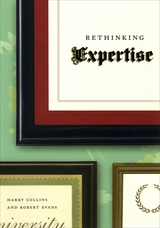 Rethinking Expertise
Harry Collins and Robert Evans
University of Chicago Press, 2007 What does it mean to be an expert? In Rethinking Expertise, Harry Collins and Robert Evans offer a radical new perspective on the role of expertise in the practice of science and the public evaluation of technology.
Collins and Evans present a Periodic Table of Expertises based on the idea of tacit knowledge—knowledge that we have but cannot explain. They then look at how some expertises are used to judge others, how laypeople judge between experts, and how credentials are used to evaluate them. Throughout, Collins and Evans ask an important question: how can the public make use of science and technology before there is consensus in the scientific community? This book has wide implications for public policy and for those who seek to understand science and benefit from it.
“Starts to lay the groundwork for solving a critical problem—how to restore the force of technical scientific information in public controversies, without importing disguised political agendas.”—Nature
“A rich and detailed ‘periodic table’ of expertise . . . full of case studies, anecdotes and intriguing experiments.”—Times Higher Education Supplement (UK)
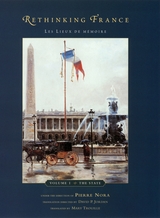 Rethinking France: Les Lieux de mémoire, Volume 1: The State
Edited by Pierre Nora. David P. Jordan, General Editor
University of Chicago Press, 2001 Les Lieux de mémoire is perhaps one of the most profound historical documents on the history and culture of the French nation. Assembled by Pierre Nora during the Mitterand years, this multivolume series has been hailed as "a magnificent achievement" (The New Republic) and "the grandest, most ambitious effort to dissect, interpret and celebrate the French fascination with their own past" (The Los Angeles Times). Written during a time when French national identity was undergoing a pivotal change and the nation was struggling to define itself, this unprecedented series consists of essays by prominent historians and cultural commentators which take, as their points of departure, a lieu de mémoire: a site of memory used to order, concentrate, and secure notions of France's past.
The first volume in the Chicago translation, Rethinking France, brings together works addressing the omnipresent role of the state in French life. As in the other volumes, the lieux de mémoire serve as entries into the French past, whether they are actual sites, political traditions, rituals, or even national pastimes and textbooks. Volume I: The State offers a sophisticated and engaging view of the French and their past through widely diverse essays on, for example, the château of Versailles and the French history of absolutism; the Code civil and its ordering of French life; memoirs written by French statesmen; and Charlemagne and his place in French history. Nora's authors constitute a who's who of French academia, yet they wear their erudition lightly. Taken as a whole, this extraordinary series documents how the French have come to see themselves and why.
Contributors:
Alain Guéry
Maurice Agulhon
Bernard Guenée
Daniel Nordman
Robert Morrissey
Alain Boureau
Anne-Marie Lecoq
Hélène Himelfarb
Jean Carbonnier
Hervé Le Bras
Pierre Nora
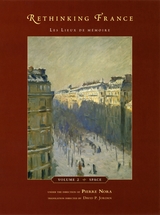 Rethinking France: Les Lieux de mémoire, Volume 2: Space
Edited by Pierre Nora. David P. Jordan, General Editor
University of Chicago Press, 2006 How do we visualize a state or a nation? Some might imagine territory—the borders that divide countries, that mark the space where power is exercised and history evolves. Others might picture natural aspects like mountains, rivers, and landscapes that make their own country distinct. For Pierre Nora, these are historical and geographical conceptions of “space.” And, in the case of the French, these conceptions are not separate but instead uniquely linked. They are key to understanding French national identity.
In Space, the second volume in the University of Chicago Press’s translation of Nora’s ambitious Les Lieux de mémoire, a group of France’s leading historians and cultural commentators call attention to the meaning of space for the French and the firm connection between the nation’s history and its geography. The essays gathered here cover the most essential approaches to French space: external and internal boundaries, the base unit of local space, and the mental construction that gives a general idea of the concept of landscape. The analyses focus on three aspects of natural boundaries: the forest, the north and the south, and the coastline. Each region of France, they show, is a space of memory that is the fruit of all the knowledge that gives it shape: statistical, cartographical, geological, and historical.
A crucial piece in Nora’s profound historical project on the way the French understand themselves, this volume will be appreciated by any critical thinker with an interest in French history, politics, culture, or philosophy.
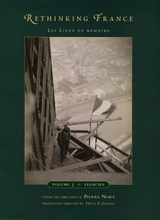 Rethinking France: Les Lieux de mémoire, Volume 3: Legacies
Edited by Pierre Nora. David P. Jordan, General Editor
University of Chicago Press, 2009 The third volume of Pierre Nora’s monumental work documenting the history and culture of France turns to French manners, mores, and society. While previous volumes focused on specific historical events, people, and institutions within France, the essays in Legacies are concerned with the kinds of things that make up the heart of French culture: conversation, cafés, songs, wine, gallantry, and places imbued with national symbolism such as Notre Dame and Sacré Coeur cathedrals. Linking these diverse topics together is the idea of patrimony—a term used by the French to designate the collective culture of the country or its national heritage—a concept that has undergone radical changes beginning with the Revolution and corresponding to other dramatic ruptures throughout France’s history. As a whole, these twelve essays by leading French historians add up to an illuminating and well-rounded portrait of those cherished traditions that together form the basic foundation for the distinctive culture of the French.
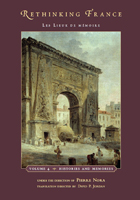 Rethinking France: Les Lieux de mémoire, Volume 4: Histories and Memories
Edited by Pierre Nora. David P. Jordan, Translation Editor
University of Chicago Press, 2010 The fourth and final volume in Pierre Nora’s monumental series documenting the history and culture of France takes a self-reflective turn. The eleven essays collected here consider the texts and places that make up the collective memory of the history of France, a country whose people are extraordinarily self-conscious of history and their place in it. Distinguished contributors look at the medieval Grands chroniques de France and the monasteries and chancelleries that produced them, the establishment of Versailles as a historical museum, and Pierre Larousse’s Grand dictionnaire, an important touchstone of cultural memory. Other essays range in topic from the creation of the National Archives, a curiously organized catacomb of manuscripts, to Annales, a publication begun in 1929 that profoundly revitalized the study of history in France. Taken together these richly detailed essays fully explore the multifaceted ways France has institutionalized its history and are, along with the rest of Les Lieux de mémoire, a crucial part of that process.
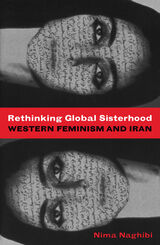 Rethinking Global Sisterhood: Western Feminism and Iran
Nima Naghibi
University of Minnesota Press, 2007 Western women’s involvement in Persia dates from the mid-nineteenth century, when female adventurers and missionaries first encountered their veiled Muslim “sisters.” Twentieth-century Western and state-sponsored Iranian feminists continued to use the image of the veiled woman as the embodiment of backwardness. Yet, following the 1979 revolution, indigenous Iranian feminists became more vocal in their resistance to this characterization. In Rethinking Global Sisterhood, Nima Naghibi makes powerful connections among feminism, imperialism, and the discourses of global sisterhood. Naghibi investigates topics including the state-sponsored Women’s Organization of Iran and the involvement of feminists such as Betty Friedan and Gloria Steinem in the Iranian feminism movement before and during the 1979 revolution. With a potent analysis of cinema, she examines the veiled woman in the films of Tahmineh Milani, Ziba Mir-Hosseini and Kim Longinotto, and Mahnaz Afzali. At a time when Western relations with the Muslim world are in crisis, Rethinking Global Sisterhood provides much-needed insights and explores the limitations and possibilities of cross-cultural feminist social and political interventions. Nima Naghibi is assistant professor of English at Ryerson University in Toronto.
 Rethinking Health Care Policy: The New Politics of State Regulation
Robert B. Hackey
Georgetown University Press, 1998 States are increasingly important players in the current efforts to reform U.S. health care, as the federal government withdraws from this responsibility. Robert B. Hackey analyzes the varied routes states have taken in reformulating health care policy and provides a road map of what specific strategies work and why. In this comparative case study, Hackey focuses on four states—Massachusetts, New Hampshire, New York and Rhode Island—that have had markedly different experiences with regulating health care over the past two decades. Hackey's detailed comparisons show how the states' policies changed over time, moving from regulatory to market-oriented solutions, and examines which policy programs appear best poised to meet the future. Hackey uses regime theory to explain how the states' policy choices concerning cost control and entry regulation were shaped by the prevailing political culture and institution of each state. He concludes that the autonomy of state government form special interests is vital to the successful adoption, implementation and outcome of state initiatives. Rethinking Health Care Policy offers policymakers, planners and specialists useful insights into the politics of state regulation and into future directions for health care reform.
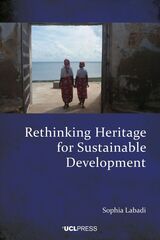 Rethinking Heritage for Sustainable Development: International Frameworks, Local Impacts
Sophia Labadi
University College London, 2022 An innovative look at heritage in sustainable development, based on archival research on UN and World Bank documents and ethnographic fieldwork in Africa.
In 2015, the UN adopted Sustainable Development Goals (SDGs), which have since influenced international and intergovernmental organizations and governments and dictated priorities for international aid spending. Culture, including heritage, is often presented as fundamental to addressing the SDGs. Yet in practice heritage is marginalized when SDGs are being discussed and implemented.
This volume presents a substantial and original assessment of whether and how heritage has contributed to three key dimensions of sustainable development (poverty reduction, gender equality, and environmental sustainability) within the context of its marginalization from the SDGs and from previous international development agendas. The book adopts a novel, inclusive, large-scale, and systematic approach, providing the first comprehensive history of the international approaches to culture (including heritage) in development from 1970 to the present day. It critically assesses the international projects implemented in sub-Saharan Africa that aimed to demonstrate the contribution of heritage for development in time for the negotiation of the SDGs, reflecting on the shortcomings of selected projects and providing recommendations for rethinking heritage for development.
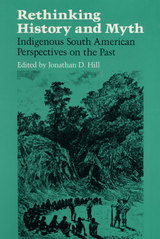 RETHINKING HISTORY: Indigenous South American Perspectives on the Past
Edited by Jonathan D. Hill
University of Illinois Press, 2000 Rethinking History and Myth explores narrative and ritual expressions of mythic and historical modes of consciousness among indigenous peoples of the Andean, Amazonian, and intermediate lowland regions of South America. Focusing on indigenous perspectives of South American interaction with Western colonial and national societies, the authors trace the interrelationships between myth and history to demonstrate how these peoples have developed a dynamic interpretive framework that enables them to understand their past.
Examining specific cultural and linguistic traditions that shape the social consciousness of native South Americans, the authors show that historical and mythic consciousness work together in forming new symbolic strategies that allow indigenous peoples to understand their societies as at least partially autonomous groups within national and global power structures. This complex process is used to interpret the history of interethnic relations, allowing both individuals and groups to change themselves and alter their own circumstances.
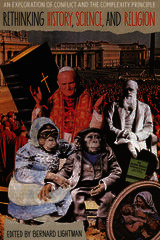 Rethinking History, Science, and Religion: An Exploration of Conflict and the Complexity Principle
Bernard Lightman
University of Pittsburgh Press, 2019 The historical interface between science and religion was depicted as an unbridgeable conflict in the last quarter of the nineteenth century. Starting in the 1970s, such a conception was too simplistic and not at all accurate when considering the totality of that relationship. This volume evaluates the utility of the “complexity principle” in past, present, and future scholarship. First put forward by historian John Brooke over twenty-five years ago, the complexity principle rejects the idea of a single thesis of conflict or harmony, or integration or separation, between science and religion. Rethinking History, Science, and Religion brings together an interdisciplinary group of scholars at the forefront of their fields to consider whether new approaches to the study of science and culture—such as recent developments in research on science and the history of publishing, the global history of science, the geographical examination of space and place, and science and media—have cast doubt on the complexity thesis, or if it remains a serviceable historiographical model.
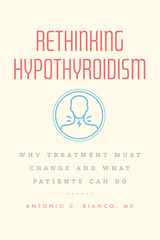 Rethinking Hypothyroidism: Why Treatment Must Change and What Patients Can Do
Antonio C. Bianco, MD
University of Chicago Press, 2022 In this primer for patients, their families, and their doctors, a leading physician and scientist explains why the standard treatment for hypothyroidism fails many—and offers an empowering call for change.
Hypothyroidism, also commonly referred to as Hashimoto’s disease, affects millions in the United States alone. It occurs when the thyroid—the butterfly-shaped gland that sits in your neck right above the front of your shirt collar—malfunctions or after thyroid surgery, causing thyroid hormone levels in circulation to drop below normal. Thus, treatment is aimed at bringing these hormone levels back to normal. This is done with daily tablets of thyroxine or T4. Because hypothyroidism is so common, we likely know someone who is on this type of medication. While most patients respond well to this standard treatment, about ten to twenty percent (some two to three million individuals in the United States) are far from living a typical life. They exhibit “foggy brain”—low energy, confusion, and poor memory. Many doctors have shrugged off their complaints, believing these symptoms to be unrelated to the thyroid disease. In Rethinking Hypothyroidism, Dr. Antonio C. Bianco, a physician and a scientist who has studied hypothyroidism and thyroid hormones for decades, offers an accessible overview of the disease’s treatment and the role of big pharma in shaping it, making the case that the current approach is failing many patients. But more than this, Bianco calls for alternatives to improve lives, and he equips patients and their families with the tools to advocate for other treatments.
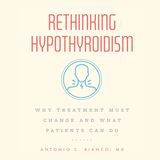 Rethinking Hypothyroidism: Why Treatment Must Change and What Patients Can Do
Antonio C. Bianco, MD
University of Chicago Press, 2022 This is an auto-narrated audiobook edition of this book.
In this primer for patients, their families, and their doctors, a leading physician and scientist explains why the standard treatment for hypothyroidism fails many—and offers an empowering call for change.
Hypothyroidism, also commonly referred to as Hashimoto’s disease, affects millions in the United States alone. It occurs when the thyroid—the butterfly-shaped gland that sits in your neck right above the front of your shirt collar—malfunctions or after thyroid surgery, causing thyroid hormone levels in circulation to drop below normal. Thus, treatment is aimed at bringing these hormone levels back to normal. This is done with daily tablets of thyroxine or T4. Because hypothyroidism is so common, we likely know someone who is on this type of medication. While most patients respond well to this standard treatment, about ten to twenty percent (some two to three million individuals in the United States) are far from living a typical life. They exhibit “foggy brain”—low energy, confusion, and poor memory. Many doctors have shrugged off their complaints, believing these symptoms to be unrelated to the thyroid disease. In Rethinking Hypothyroidism, Dr. Antonio C. Bianco, a physician and a scientist who has studied hypothyroidism and thyroid hormones for decades, offers an accessible overview of the disease’s treatment and the role of big pharma in shaping it, making the case that the current approach is failing many patients. But more than this, Bianco calls for alternatives to improve lives, and he equips patients and their families with the tools to advocate for other treatments.
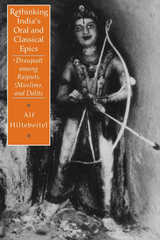 Rethinking India's Oral and Classical Epics: Draupadi among Rajputs, Muslims, and Dalits
Alf Hiltebeitel
University of Chicago Press, 1999 Throughout India and Southeast Asia, ancient classical epics—the Mahabharata and the Ramayana—continue to exert considerable cultural influence. Rethinking India's Oral and Classical Epics offers an unprecedented exploration into South Asia's regional epic traditions.
Using his own fieldwork as a starting point, Alf Hiltebeitel analyzes how the oral tradition of the south Indian cult of the goddess Draupadi and five regional martial oral epics compare with one another and tie in with the Sanskrit epics. Drawing on literary theory and cultural studies, he reveals the shared subtexts of the Draupadi cult Mahabharata and the five oral epics, and shows how the traditional plots are twisted and classical characters reshaped to reflect local history and religion. In doing so, Hiltebeitel sheds new light on the intertwining oral traditions of medieval Rajput military culture, Dalits ("former Untouchables"), and Muslims.
Breathtaking in scope, this work is indispensable for those seeking a deeper understanding of South Asia's Hindu and Muslim traditions.
This work is the third volume in Hiltebeitel's study of the Draupadi cult. Other volumes include Mythologies: From Gingee to Kuruksetra (Volume One), On Hindu Ritual and the Goddess (Volume Two), and Rethinking the Mahabharata (Volume Four).
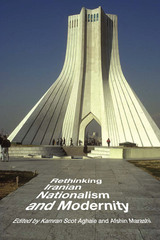 Rethinking Iranian Nationalism and Modernity
Edited by Kamran Scot Aghaie and Afshin Marashi
University of Texas Press, 2014 While recent books have explored Arab and Turkish nationalism, the nuances of Iran have received scant book-length study—until now. Capturing the significant changes in approach that have shaped this specialization, Rethinking Iranian Nationalism and Modernity shares innovative research and charts new areas of analysis from an array of scholars in the field. Delving into a wide range of theoretical and conceptual perspectives, the essays—all previously unpublished—encompass social history, literary theory, postcolonial studies, and comparative analysis to address such topics as: - Ethnicity in the Islamic Republic of Iran
- Political Islam and religious nationalism
- The evolution of U.S.-Iranian relations before and after the Cold War
- Comparing Islamic and secular nationalism(s) in Egypt and Iran
- The German counterrevolution and its influence on Iranian political alliances
- The effects of Israel’s image as a Euro-American space
- Sufism
- Geocultural concepts in Azar’s Atashkadeh
Interdisciplinary in essence, the essays also draw from sociology, gender studies, and art and architecture. Posing compelling questions while challenging the conventional historiographical traditions, the authors (many of whom represent a new generation of Iranian studies scholars) give voice to a research approach that embraces the modern era’s complexity while emphasizing Iranian nationalism’s contested, multifaceted, and continuously transformative possibilities.
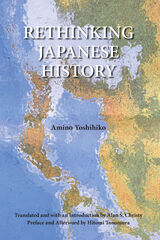 Rethinking Japanese History
Amino Yoshihiko; Translated and with an Introduction by Alan S. Christy; Preface and Afterword by Hitomi Tonomura
University of Michigan Press, 2012 In this fascinating journey across centuries, Amino Yoshihiko, the premier historian of medieval Japan, invites us to rethink everything we thought we knew about Japanese history. From reconsidering the roles of outcastes and outlaws, to the provenance of "Japan (Nihon)," to the very meaning of writing, Amino offers a powerful critique of the conventional wisdom about Japan's past. Instead of depicting Japan as an isolated island country full of immobile peasants dominated by swaggering warriors and an unbroken line of sacred emperors, he unveils a dynamic history of an archipelago driven by the competition to control trade and movement, in which warlords and aristocrats share the main stage with pirates, courtesans, beggars, and dancing monks. Written for a nonspecialist audience and standing on a foundation of fifty years of research in a vast and eclectic range of primary sources, Rethinking Japanese History introduces the English reader to one of Japan's most original and provocative historians. Since the 1970s, Amino has inspired readers with his view of Japanese history "from the sea," in which the power politics of the samurai class were contrasted with the countervailing authorities of religious institutions, artisanal groups, and "lords of the sea" who enabled the movement of people and goods from the Asian continent to every harbor and village of Japan. In his portraits of an archaic and medieval past permeated with "places of freedom" and a grand struggle between ideologies of trade and agriculture, Amino challenged his contemporaries to reconsider not only their understanding of Japan's past, but also its present and future. Rethinking Japanese History calls on us to contemplate seriously the meaning of the deep past in our present day.
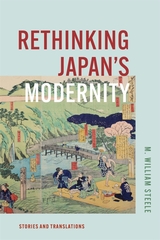 Rethinking Japan's Modernity: Stories and Translations
M. William Steele
Harvard University Press, 2024 History is not one story, but many. In Rethinking Japan’s Modernity, M. William Steele takes a new look at the people, places, and events associated with Japan’s engagement with modernity, starting with American Commodore Matthew Perry’s arrival in Japan in 1853. In many cases, this new look derives from visual sources, such as popular broadsheets, satirical cartoons, ukiyo-e and other woodblock prints, postcards, and photographs. The book illustrates the diverse, and sometimes conflicting, perceptions of people who experienced the unfolding of modern Japan. It focuses both on the experiences of people living the events “at that time” and on the reflections of others looking back. Also included are three new translations—two of them by Japan’s pioneer Westernizer, Fukuzawa Yukichi, and another by Mantei Ōga—parodying Fukuzawa’s monumental work advocating Western learning. These and other stories show how Japanese views of modernity evolved over time. Each chapter is prefaced with a short introduction to the topic covered and historiographical approach taken, allowing each to stand alone as well as support the overall goal of the work—to inform and challenge our understanding of the links between Japan’s past, present, and future.
 Rethinking Juvenile Justice
Elizabeth S. Scott and Laurence Steinberg
Harvard University Press, 2010 What should we do with teenagers who commit crimes? Are they children whose offenses are the result of immaturity and circumstances, or are they in fact criminals?
“Adult time for adult crime” has been the justice system’s mantra for the last twenty years. But locking up so many young people puts a strain on state budgets—and ironically, the evidence suggests it ultimately increases crime.
In this bold book, two leading scholars in law and adolescent development offer a comprehensive and pragmatic way forward. They argue that juvenile justice should be grounded in the best available psychological science, which shows that adolescence is a distinctive state of cognitive and emotional development. Although adolescents are not children, they are also not fully responsible adults.
Elizabeth Scott and Laurence Steinberg outline a new developmental model of juvenile justice that recognizes adolescents’ immaturity but also holds them accountable. Developmentally based laws and policies would make it possible for young people who have committed crimes to grow into responsible adults, rather than career criminals, and would lighten the present burden on the legal and prison systems. In the end, this model would better serve the interests of justice, and it would also be less wasteful of money and lives than the harsh and ineffective policies of the last generation.
RETHINKING LABOR HISTORY: ESSAYS ON DISCOURSE AND CLASS ANALYSIS
Edited by Lenard R. Berlanstein
University of Illinois Press, 1993 The fundamentals guiding labor historians are under scrutiny today as never before. The field has attempted to uncover the socioeconomic conditions that produced labor militancy and class consciousness, with scholars focusing on proletarianization---the loss of control over the production process---as the key to class conflict. Currently, this entire approach is being questioned.
In Rethinking Labor History, nine well-known French labor historians join the debate. Advocates of both revisionist Marxism and discourse analysis are represented, and examples of empirical research emerging from the theoretical disputes are included.
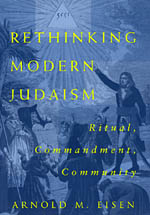 Rethinking Modern Judaism: Ritual, Commandment, Community
Arnold M. Eisen
University of Chicago Press, 1998 Arnold Eisen here calls for a fundamental rethinking of the story of modern Judaism. More than simply a study of Jewish thought on customs and rituals, Rethinking Modern Judaism explores the central role that practice plays in Judaism's encounter with modernity.
"Fascinating . . . an insightful entrance point to understanding the evolution of the theologies of America's largest Jewish denominations."—Tikkun
"I know of no other treatment of these issues that matches Eisen's talents for synthesizing a wide variety of historical, philosophical, and social scientific sources, and bringing them to bear in a balanced and open-minded way on the delicate questions of why modern Jews relate as they do to the practices of Judaism."—Joseph Reimer, Boston Book Review
"At once an incisive survey of modern Jewish thought and an inquiry into how Jews actually live their religious lives, Mr. Eisen's book is an invaluable addition to the study of American Judaism."—Elliott Abrams, Washington Times
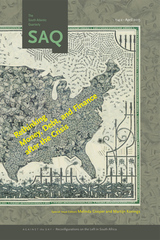 Rethinking Money, Debt, and Finance after the Crisis
Melinda Cooper and Martijn Konings, special issue editors
Duke University Press The financial crisis of 2007–8 has been widely understood as a result of the financial system’s exceeding its proper place in society; the system became unbalanced, unsustainable, and deprived of a solid foundation. Even as capitalist finance seeks to reinvent itself in the wake of massive upheaval, critics continue to portray the financial system as fundamentally irrational—an unstable, destructive inventor of fictitious money. Characterizing finance in this way, however, neglects the growing connection between the worlds of high finance and consumer credit. The essays in this special issue take the financial crisis as an opportunity for much-needed conceptual innovation. Its contributors move beyond strictly moralistic criticisms of financialization to rethink core economic categories such as money, speculation, measure, value, and the wage, as well as the relationship among labor, finance, and money.
Melinda Cooper is an Australian Research Council Future Fellow in the Department of Sociology and Social Policy at the University of Sydney. She is the author of Clinical Labor: Tissue Donors and Research Subjects in the Global Bioeconomy, also published by Duke University Press. Martijn Konings is Senior Lecturer and Australian Research Council DECRA Fellow in the Department of Political Economy at the University of Sydney. He is the author of The Development of American Finance.
Contributors: Lisa Adkins, Fiona Allon, Dick Bryan, Melinda Cooper, Marieke de Goede, Chris Jefferis, Martijn Konings, Randy Martin, Michael Rafferty
 Rethinking Multiculturalism: Cultural Diversity and Political Theory
Bhikhu Parekh
Harvard University Press, 2000 Bhikhu Parekh argues for a pluralist perspective on cultural diversity. Writing from both within the liberal tradition and outside of it as a critic, he challenges what he calls the "moral monism" of much of traditional moral philosophy, including contemporary liberalism--its tendency to assert that only one way of life or set of values is worthwhile and to dismiss the rest as misguided or false. He defends his pluralist perspective both at the level of theory and in subtle nuanced analyses of recent controversies. Thus, he offers careful and clear accounts of why cultural differences should be respected and publicly affirmed, why the separation of church and state cannot be used to justify the separation of religion and politics, and why the initial critique of Salman Rushdie (before a Fatwa threatened his life) deserved more serious attention than it received.
Rejecting naturalism, which posits that humans have a relatively fixed nature and that culture is an incidental, and "culturalism," which posits that they are socially and culturally constructed with only a minimal set of features in common, he argues for a dialogic interplay between human commonalities and cultural differences. This will allow, Parekh argues, genuinely balanced and thoughtful compromises on even the most controversial cultural issues in the new multicultural world in which we live.
 Rethinking Objectivity
Allan Megill
Duke University Press, 1994 Although "objectivity" is a term used widely in many areas of public discourse, from discussions concerning the media and politics to debates over political correctness and cultural literacy, the question "What is objectivity?" is often ignored, as if the answer were obvious. In this volume, Allan Megill has gathered essays from fourteen leading scholars in a variety of fields--history, anthropology, philosophy, psychology, history of science, sociology of science, feminist studies, literary studies, and accounting--to gain critical understanding of the idea of objectivity as it functions in today's world. In diverse essays the authors provide fascinating studies of objectivity in such areas as anthropological research, corporate and governmental bureaucracies, legal discourse, photography, and the study and practice of the natural sciences. Taken together, Megill argues, this volume calls for developing a notion of "objectivities." The absolute sense of objectivity--that is, objectivity as a "God's eye view"--must be supplemented, and in part supplanted, by disciplinary, procedural, and dialectical senses of objectivity. This book will be of great interest to a broad range of scholars as it presents current thinking on a topic of fundamental concern across the disciplines in the humanities and social sciences. Contributors. Barry Barnes, Dagmar Barnouw, Lorraine Code, Lorraine Daston, Johannes Fabian, Kenneth J. Gergen, Mary E. Hawkesworth, Barbara Herrnstein Smith, Evelyn Fox Keller, George Levine, Allan Megill, Peter Miller, Andy Pickering, Theodore M. Porter
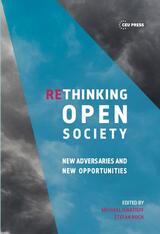 Rethinking Open Society
CONTRIBUTORS: Anne Applebaum • Erica Benner• Dorothee Bohle • Thomas Christiano • Tim Crane • Niall Ferguson • Timothy Garton Ash • Béla Greskovits • Michael Ignatieff • Robert D. Kaplan • János Kis • Ivan Krastev • Mark Lilla • Margaret MacMillan • Jan-Werner Müller • Alina Mungiu-Pippidi • Stefan Roch • Pierre Rosanvallon • Jacques Rupnik • András Sajó • Daniela Schwarzer • Sir Roger Scruton • Stephen M. Walt
Central European University Press, 2018 The key values of the Open Society – freedom, justice, tolerance, democracy, and respect for knowledge – are increasingly under threat in today’s world. As an effort to uphold those values, this volume brings together some of the key political, social and economic thinkers of our time to re-examine the Open Society closely in terms of its history, its achievements and failures, and its future prospects. Based on the lecture series Rethinking Open Society, which took place between 2017 and 2018 at the Central European University, the volume is deeply embedded in the history and purpose of CEU, its Open Society mission, and its belief in educating skeptical, but passionate citizens.
Rethinking Past and Present in Cuba: essays in memory of Alistair Hennessy
Edited by Antoni Kapcia
University of London Press, 2018 This collection of essays and research articles has been designed, by its breadth of expertise and discipline, to pay suitable homage to the seminal influence and contribution made by the late Alistair Hennessy towards the development of Cuban studies. For that reason, it includes a judicious mixture of the old and the new, including several of the leading and internationally well-established experts on Cuban history, politics and culture, but also some up-and-coming researchers in the field; that mixture and the combination of topics (some addressing the past directly, others assessing the present within a historical context) reflects Hennessy’s own cross-disciplinary and open-minded approach to the study of the history of Cuba.
 Rethinking Pastoralism In Africa: Gender, Culture, and the Myth of the Patriarchal Pastoralist
Dorothy L. Hodgson
Ohio University Press, 2001 The dominant trend in pastoralist studies has long assumed that pastoralism and pastoral gender relations are inherently patriarchal. The contributors to this collection, in contrast, use diverse analytic approaches to demonstrate that pastoralist gender relations are dynamic, relational, historical, and produced through complex local-translocal interactions. Combining theoretically sophisticated analysis with detailed case studies, this collection will appeal to those doing research and teaching in African studies, gender studies, anthropology, and history. Among the topics discussed are pastoralism, patriarchy, and history among Maasai in Tanganyika; women’s roles in peacemaking in Somali society; the fertility of houses and herds; gender, aging, and postchildbearing experience in a Tuareg community; and milk selling among Fulani women in Northern Burkina Faso.
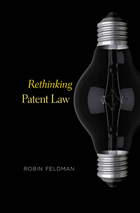 Rethinking Patent Law
Robin Feldman
Harvard University Press, 2012 Scientific and technological innovations are forcing patent law into the spotlight and revealing its many glaring inadequacies. Take, for example, the patent case that almost shut down the BlackBerry, or the growing phenomenon of patent trolling, in which patents are acquired for the sole purpose of entrapping companies whose products relate to them. And patents on genes have everyone up in arms—and our courts confused.
Robin Feldman explains why patents are causing so much trouble. The problem lies in our assumption that patents set clear boundaries for rights to an invention. In reality, they do no such thing. The very nature of inventions makes them impossible to describe unambiguously for all time. When something is so new that we do not understand yet how it works, what it is capable of doing, or how it could be applied—as is often the case in biotechnology—description is necessarily slippery.
Instead of hoping for clear boundaries, and moaning when we don’t get them, Rethinking Patent Law urges lawmakers to focus on what the law can do well: craft rules that anticipate the bargaining that will occur as rights unfold. By steering clear of laws that distort the bargaining process, lawmakers can help courts answer difficult questions, such as whether genes, software, and business methods constitute patentable subject matter, whether patents in the life sciences should control inventions that have yet to be discovered, and how to resolve the battles between pharmaceutical companies and generics.
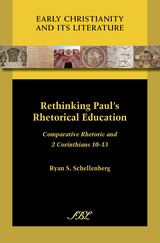 Rethinking Paul's Rhetorical Education: Comparative Rhetoric and 2 Corinthians
Ryan S. Schellenberg
SBL Press, 2013 Winner of the Canadian Society of Biblical Studies 2015 F. W. Beare Award
Did Paul have formal training in Greco-Roman rhetoric, or did he learn what he knew of persuasion informally, as social practice? Pauline scholars recognize the importance of this question both for determining Paul’s social status and for conceptualizing the nature of his letters, but they have been unable to reach a consensus. Using 2 Corinthians 10–13 as a test case, Ryan Schellenberg undertakes a set of comparisons with non-Western speakers—most compellingly, the Seneca orator Red Jacket—to demonstrate that the rhetorical strategies Paul employs in this text are also attested in speakers known to have had no formal training in Greco-Roman rhetoric. Since there are no specific indicators of formal training in the way Paul uses these strategies, their appearance in his letters does not constitute evidence that Paul received formal rhetorical education.
Rethinking Peer Review: Critical Reflections on a Pedagogical Practice
Phoebe Jackson
University Press of Colorado, 2024 Rethinking Peer Review: Critical Reflections on a Pedagogical Practice interrogates peer review, a foundational practice of writing instruction, from both practical and theoretical perspectives, provoking discussion and re-examination of this practice in light of changing demographics, new technologies, and changing goals and priorities among teachers and institutions. Though long considered an essential element in writing and writing-intensive courses, peer review continues to provoke questions and provide challenges for instructors and students. By questioning and clarifying the goals of peer review, the contributors to this edited collection demonstrate how peer review can inform and enhance student writing and learning. In doing so, Rethinking Peer Review offers a roadmap for revitalizing this critical practice for the 21st century classroom.
 Rethinking Poverty: Income, Assets, and the Catholic Social Justice Tradition
James P. Bailey
University of Notre Dame Press, 2010
In Rethinking Poverty, James P. Bailey argues that most contemporary policies aimed at reducing poverty in the United States are flawed because they focus solely on insufficient income. Bailey argues that traditional policies such as minimum wage laws, food stamps, housing subsidies, earned income tax credits, and other forms of cash and non-cash income supports need to be complemented by efforts that enable the poor to save and accumulate assets. Drawing on Michael Sherraden's work on asset building and scholarship by Melvin Oliver, Thomas Shapiro, and Dalton Conley on asset discrimination, Bailey presents us with a novel and promising way forward to combat persistent and morally unacceptable poverty in the United States and around the world.
Rethinking Poverty makes use of a significant body of Catholic social teachings in its argument for an asset development strategy to reduce poverty. These Catholic teachings include, among others, principles of human dignity, the social nature of the person, the common good, and the preferential option for the poor. These principles and the related social analyses have not yet been brought to bear on the idea of asset-building for the poor by those working within the Catholic social justice tradition. This book redresses this shortcoming, and further, claims that a Catholic moral argument for asset-building for the poor can be complemented and enriched by Martha Nussbaum's "capabilities approach." This book will affect current debates and practical ways to reduce poverty, as well as the future direction of Catholic social teaching.
"This book supplies the connections between prophetic but general calls for economic justice and participation, and the concrete policies and practices necessary to advance those ideals as reality. Bailey directly critiques discriminatory economic institutions in the U.S. but also implicitly critiques prior Catholic voices that have fallen far short of inspiring effective reform because they do not identify and attack underlying assumptions behind the 'personal responsibility' models of prosperity." --Lisa Sowle Cahill, Boston College
"Bailey combines his deep understanding of the Catholic social justice tradition, his firm grasp of contemporary moral philosophy, and his perceptive analysis of U.S. poverty debates and policies to forge something new and exciting for each. Bailey's most significant contribution is his compelling case for the Church to establish, or reestablish, asset and property ownership at the heart of its mission to reduce poverty, enhance human dignity, and achieve a more just society." --Ray Boshara, Vice President and Senior Research Fellow, New America Foundation
"Poverty may be with us always; but seldom do we have such a wise and timely book. Drawing upon Catholic social teaching and Martha Nussbaum's capability theory, Bailey underscores the role of asset formation in understanding and alleviating poverty. Erudite, but never arid, Rethinking Poverty is indispensable reading for students and scholars who would make the 'option for the poor' their own today." --William O'Neill, S. J., Jesuit School of Theology of Santa Clara University
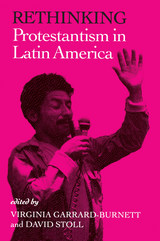 Rethinking Protestantism in Latin America
David Stoll
Temple University Press, 1993 William J. Goode Book Award, American Sociological Association Family Section, 2000
"Path-breaking, brilliant, and a pleasure to read. The idea that women will be either career or home oriented is one that is long overdue for re-examination."
--Arlene Kaplan Daniels, Professor Emerita, Department of Sociology, Northwestern University
In American culture, the image of balancing work and family life is most often represented in the glossy shot of the executive-track woman balancing cell-phone, laptop, and baby. In Weaving Work and Motherhood, Anita Ilta Garey focuses not on the corporate executives so frequently represented in American ads and magazines but, rather, on the women in jobs that typify the vast majority of women's employment in the United States.
A sociologist, work, and family expert, Garey situates her research in the health service industry. Interviewing a racially and ethnically diverse group of women hospital workers--clerical workers, janitorial workers, nurses, and nurse's aids--Garey analyzes what it means to be at once a mother who is employed and a worker with children. Within the limits of the resources available to them, women integrate their identities as workers and their identities as mothers by valuing their relation to work while simultaneously preserving cultural norms about what it means to be a good mother. Some of these women work non-day shifts in order to have the right blocks of time at home, including, for example, a registered nurse who explains how working the night shift enables her to see her children off to school, greet them when they return, and attend school events in the way she feels "good mothers" should - even if she finds little time for sleep.
Moving beyond studies of women, work, and family in terms of structural incompatibilities, Garey challenges images of the exclusively "work-oriented" or exclusively "family-oriented" mother. As women talk about their lives, Garey focuses on the meanings of motherhood and of work that underlie their strategies for integrating employment and motherhood. She replaces notions of how women "balance" work and family with a better understanding of how women integrate, negotiate, and weave together their identities as both workers and mothers.
Breaking new ground in the study of work and family, Weaving Work and Motherhood offers new insights for those interested in sociology, gender and women's studies, social policy, child care, social welfare, and health care.
"Anita Ilta Garey carves out new terrain by unifying the study of work and family in women's lives. Rich in detail about working mothers' experiences, this book inaugurates a powerful framework for future research in family studies."
--Maxine Baca Zinn, co-editor of Women of Color in U.S. Society (Temple)
"A perceptive account, especially good at making visible the work activities and commitments of women in female-dominated and part-time positions."
--Marjorie DeVault, author of Feeding the Family: The Social Organization of Caring as Gendered Work
"This gem of a study points out the kinds of social solutions that are needed to address how to integrate daily family life with labor force participation. Using a hospital to find respondents who are employed in typically female-dominated occupations, Garey conducted in-depth interviews with women that have children about their individual work and family strategies. She dispels the myth that women choose between employment and family."
--Rosanna Hertz, author of More Equal Than Others: Women and Men in Dual-Career Marriages
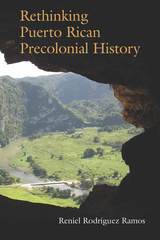 Rethinking Puerto Rican Precolonial History
Reniel Rodríguez Ramos
University of Alabama Press, 2010 Focuses on the successive indigenous cultures of Puerto Rico prior to 1493
The history of Puerto Rico has usually been envisioned as a sequence of colonizations-various indigenous peoples from Archaic through Taíno were successively invaded, assimilated, or eliminated, followed by the Spanish entrada, which was then modified by African traditions and, since 1898, by the United States. The truth is more complex, but in many ways Puerto Rico remains one of the last colonies in the world. This volume focuses on the successive indigenous cultures of Puerto Rico prior to 1493. Traditional studies of the cultures of indigenous peoples of the Caribbean have centered on ceramic studies, based on the archaeological model developed by Irving Rouse which has guided Caribbean archaeology for decades. Rodríguez Ramos departs from this methodology by implementing lithics as the primary unit for tracing the origins and developments of the indigenous peoples of Puerto Rico. Analyzing the technological styles involved in the production of stone artifacts in the island through time, as well as the evaluation of an inventory of more than 500 radiocarbon dates recovered since Rouse's model emerged, the author presents a truly innovative study revealing alternative perspectives on Puerto Rico's pre-Columbian culture-historical sequence. By applying a multiscalar design, he not only not only provides an analysis of the plural ways in which the precolonial peoples of the island interacted and negotiated their identities but also shows how the cultural landscapes of Puerto Rico, the Antilles, and the Greater Caribbean shaped and were shaped by mutually constituting processes through time.
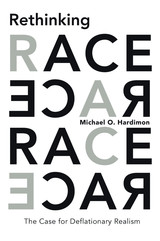 Rethinking Race: The Case for Deflationary Realism
Michael O. Hardimon
Harvard University Press, 2017 Many scholars and activists seek to eliminate “race”—the word and the concept—from our vocabulary. Their claim is clear: because science has shown that racial essentialism is false and because the idea of race has proved virulent, we should do away with the concept entirely. Michael O. Hardimon criticizes this line of thinking, arguing that we must recognize the real ways in which race exists in order to revise our understanding of its significance.
Rethinking Race provides a novel answer to the question “What is race?” Pernicious, traditional racialism maintains that people can be judged and ranked according to innate racial features. Hardimon points out that those who would eliminate race make the mistake of associating the word only with this view. He agrees that this concept should be jettisoned, but draws a distinction with three alternative ideas: first, a stripped-down version of the ordinary concept of race that recognizes minimal physical differences between races but does not consider them significant; second, a scientific understanding of populations with shared lines of descent; and third, an acknowledgment of “socialrace” as a separate construction.
Hardimon provides a language for understanding the ways in which races do and do not exist. His account is realistic in recognizing the physical features of races, as well as the existence of races in our social world. But it is deflationary in rejecting the concept of hierarchical or defining racial characteristics. Ultimately, Rethinking Race offers a philosophical basis for repudiating racism without blinding ourselves to reality.
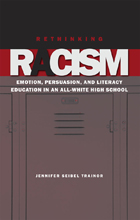 Rethinking Racism: Emotion, Persuasion, and Literacy Education in an All-White High School
Jennifer Seibel Trainor
Southern Illinois University Press, 2008 In Rethinking Racism: Emotion, Persuasion, and Literacy Education in an All-White High School, Jennifer Seibel Trainor proposes a new understanding of the roots of racism, one that is based on attention to the role of emotion and the dynamics of persuasion. This one-year ethnographic study argues against previous assumptions about racism, demonstrating instead how rhetoric and emotion, as well as the processes and culture of schools, are involved in the formation of racist beliefs. Telling the story of a year spent in an all-white high school, Trainor suggests that contrary to prevailing opinion, racism often does not stem from ignorance, a lack of exposure to other cultures, or the desire to protect white privilege. Rather, the causes of racism are frequently found in the realms of emotion and language, as opposed to rational calculations of privilege or political ideologies. Trainor maintains that racist assertions often originate not from prejudiced attitudes or beliefs but from metaphorical connections between racist ideas and nonracist values. These values are reinforced, even promoted by schooling via "emotioned rules" in place in classrooms: in tacit, unexamined lessons, rituals, and practices that exert a powerful—though largely unacknowledged—persuasive force on student feelings and beliefs about race. Through in-depth analysis of established anti-racist pedagogies, student behavior, and racial discourses, Trainor illustrates the manner in which racist ideas are subtly upheld through social and literacy education in the classroom—and are thus embedded in the infrastructures of schools themselves. It is the emotional and rhetorical framework of the classroom that lends racism its compelling power in the minds of students, even as teachers endeavor to address the issue of cultural discrimination. This effort is continually hindered by an incomplete understanding of the function of emotions in relation to antiracist persuasion and cannot be remedied until the root of the problem is addressed. Rethinking Racism calls for a fresh approach to understanding racism and its causes, offering crucial insight into the formative role of schooling in the perpetuation of discriminatory beliefs. In addition, this highly readable narrative draws from white students' own stories about the meanings of race in their learning and their lives. It thus provides new ways of thinking about how researchers and teachers rep- resent whiteness. Blending narrative with more traditional forms of ethnographic analysis, Rethinking Racism uncovers the ways in which constructions of racism originate in literacy research and in our classrooms—and how these constructions themselves can limit the rhetorical positions students enact.
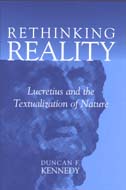 Rethinking Reality: Lucretius and the Textualization of Nature
Duncan F. Kennedy
University of Michigan Press, 2002 How deeply into the structure of physical reality do the effects of our way of representing it reach? To what extent do constructivist accounts of scientific theorizing involve realist assumptions, and vice versa? This book provides a lucid and concise introduction to contemporary debates, taking as its theme the question of the relationship of representation and reality. It treats in an attractive and accessible way the historical, philosophical, and literary aspects of this question. In particular, it explores how the present relates to and configures claims to scientific knowledge from the past, taking as its main case study On the Nature of Things (De Rerum Natura), the poem on physics written by the Roman poet Lucretius in the 50s B.C.E.
The book engages in a sustained argument about realist assumptions in scientific and other discourses through detailed analysis and discussion of some of the most important recent contributions to this debate. Engaging sympathetically but not uncritically with constructivist accounts of scientific knowledge, the book takes up a sustained critique of recent contributions to that debate, including those of Ian Hacking, Evelyn Fox Keller, Bruno Latour, and Hans-Jörg Rheinberger. What are the implications of regarding such knowledge as "discovered" or "invented"? How is the rhetoric of such claims to be identified and the pretentions of those claims assessed?In what ways can realist and constructivist approaches be reconciled? How do these considerations affect the way we read scientific texts from the past and regard them historically?
What emerges is a fresh and challenging assessment of the role of time and temporal perspective in assessing claims to knowledge in scientific thought and of the importance of textuality to the history of knowledge. A wide variety of readers, from classicists and intellectual historians to epistemologists of science, will enjoy and learn from Rethinking Reality.
Duncan Kennedy is Reader in Latin Literature and the Theory of Criticism, University of Bristol. He is also the author of The Arts of Love: Five Studies in the Discourse of Roman Love Elegy.
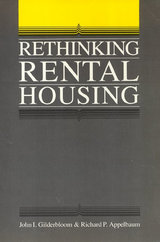 Rethinking Rental Housing
John Gilderbloom
Temple University Press, 1987 In recent years, almost daily media attention has been focused on the plight of the homeless in cities across the United States. Drawing upon experiences in the U.S. and Europe, John Gilderbloom and Richard Appelbaum challenge conventional assumptions concerning the operation of housing markets and provide policy alternatives directed at the needs of low- and moderate-income families. Rethinking Rental Housing is a ground-breaking analysis that shows the value of applying a broad sociological approach to urban problems, one that takes into account the basic economic, social, and political dimensions of the urban housing crisis.
Gilderbloom and Appelbaum predict that this crisis will worsen in the 1990s and argue that a "supply and demand" approach will not work in this case because housing markets are not competitive. They propose that the most effective approach to affordable housing is to provide non-market alternatives fashioned after European housing programs, particularly the Swedish model.
An important feature of this book is the discussion of tenant movements that have tried to implement community values in opposition to values of development and landlord capital. One of the very few publications on rental housing, it is unique in applying a sociological framework to the study of this topic.
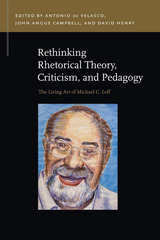 Rethinking Rhetorical Theory, Criticism, and Pedagogy: The Living Art of Michael C. Leff
Antonio de Velasco
Michigan State University Press, 2016 What distinguishes the study of rhetoric from other pursuits in the liberal arts? From what realms of human existence and expression, of human history, does such study draw its defining character? What, in the end, should be the purposes of rhetorical inquiry? And amid so many competing accounts of discourse, power, and judgment in the contemporary world, how might scholars achieve these purposes through the attitudes and strategies that animate their work?
Rethinking Rhetorical Theory, Criticism, and Pedagogy: The Living Art of Michael C. Leff offers answers to these questions by introducing the central insights of one of the most innovative and prolific rhetoricians of the twentieth century, Michael C. Leff. This volume charts Leff ’s decades-long development as a scholar, revealing both the variety of topics and the approach that marked his oeuvre, as well as his long-standing critique of the disciplinary assumptions of classical, Hellenistic, renaissance, modern, and postmodern rhetoric.
Rethinking Rhetorical Theory, Criticism, and Pedagogy includes a synoptic introduction to the evolution of Leff ’s thought from his time as a graduate student in the late 1960s to his death in 2010, as well as specific commentary on twenty-four of his most illuminating essays and lectures.
 Rethinking Rights and Responsibilities: The Moral Bonds of Community, Revised Edition
Arthur J. Dyck
Georgetown University Press, 2005 As members of various and often conflicting communities, how do we reconcile what we have come to understand as our human rights with our responsibilities toward one another? With the bright thread of individualism woven through the American psyche, where can our sense of duty toward others be found? What has happened to our love—even our concern—for our neighbor? In this revised edition of his magisterial exploration of these critical questions, renowned ethicist Arthur Dyck revisits and profoundly hones his call for the moral bonds of community. In all areas of contemporary life, be it in business, politics, health care, religion—and even in family relationships—the "right" of individuals to consider themselves first has taken precedence over our responsibilities toward others. Dyck contends that we must recast the language of rights to take into account our once natural obligations to all the communities of which we are a part. Rethinking Rights and Responsibilities, at the nexus of ethics, political theory, public policy, and law, traces how the peculiarly American formulations of the rights of the individual have assaulted our connections with, and responsibilities for, those around us. Dyck critically examines contemporary society and the relationship between responsibilities and rights, particularly as they are expressed in medicine and health care, to maintain that while indeed rights and responsibilities form the moral bonds of community, we must begin with the rudimentary task of taking better care of one another.
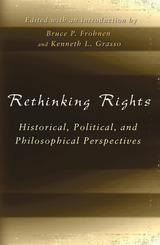 Rethinking Rights: Historical, Political, and Philosophical Perspectives
Edited by Bruce P. Frohnen and Kenneth L. Grasso
University of Missouri Press, 2008 As reports of genocide, terrorism, and political violence fill today’s newscasts, more attention has been given to issues of human rights—but all too often the sound bites seem overly simplistic. Many Westerners presume that non-Western peoples yearn for democratic rights, while liberal values of toleration give way to xenophobia. This book shows that the identification of rights with contemporary liberal democracy is inaccurate and questions the assumptions of many politicians and scholars that rights are self-evident in all circumstances and will overcome any conflicts of thought or interest. Rethinking Rights offers a radical reconsideration of the origins, nature, and role of rights in public life, interweaving perspectives of leading scholars in history, political science, philosophy, and law to emphasize rights as a natural outgrowth of a social understanding of human nature and dignity. The authors argue that every person comes to consciousness in a historical and cultural milieu that must be taken into account in understanding human rights, and they describe the omnipresence of concrete, practical rights in their historical, political, and philosophical contexts. By rooting our understanding of rights in both history and the order of existence, they show that it is possible to understand rights as essential to our lives as social beings but also open to refinement within communities. An initial group of essays retraces the origins and historical development of rights in the West, assessing the influence of such thinkers as Locke, Burke, and the authors of the Declaration of Independence to clarify the experience of rights within the Western tradition. A second group addresses the need to rethink our understanding of the nature of existence if we are to understand rights and their place in any decent life, examining the ontological basis of rights, the influence of custom on rights, the social nature of the human person, and the importance of institutional rights. Steering a middle course between radical individualist and extreme egalitarian views, Rethinking Rights proposes a new philosophy of rights appropriate to today’s world, showing that rights need to be rethought in a manner that brings them back into accord with human nature and experience so that they may again truly serve the human good. By engaging both the history of rights in the West and the multicultural challenge of rights in an international context, Rethinking Rights offers a provocative and coherent new argument to advance the field of rights studies.
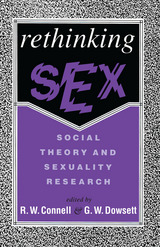 Rethinking Sex: Social Theory and Sexuality Research
R. Connell
Temple University Press, 1993 Sex and Gender Section Award for Distinguished Contribution to the Study of Sex and Gender, American Sociological Association, 1995
This volume of essays sharply questions current knowledge and ideas about sexuality, social theory, and public policy research on sexuality. The contributors, internationally recognized scholars and activists from Australia, examine the dominant research models from the United States and Western Europe and propose a new perspective, one sensitive to the social construction of sexuality and its research and to variation in sexual practices across cultures.
Addressing the debates over sexual conduct from contraception to AIDS prevention, Rethinking Sex provides a systematic examination of the social dimensions of sexuality. Social theory, public policy analysis, and historical and survey research are applied to issues ranging from AIDS and gay identity to perceptions of women's sexuality and relations between the state and private sexual behavior.
"Sexuality is a major theme in our culture, from the surf video to the opera stage to the papal encyclical. It is, accordingly, one of the major themes of the human sciences, and figures as weighty as Darwin and Freud have made major contributions to it. Social research has, over the last hundred years, produced crucially important evidence for the understanding of sexuality. But social theory has been slow to grapple with the issue, to give it the sophisticated attention that has been devoted to questions of production or of communication.
"We are convinced that an adequate social theory of sexuality is essential for progress on 'applied' issues, such as the design of research on the social transmission of human immunodefiency virus (HIV). This chapter attempts a mapping exercise, sorting out the major intellectual frameworks that have governed Western thinking about sexuality. We discuss first the religious and scientific nativism that dominated the field into the twentieth century, the problems this approach ran into, and the rise of social construction approaches to sexuality. We discuss the impasse that social constructionism has reached. In the final part of the chapter we sketch the outline of an approach which can move past these difficulties."
--From Chapter 3, "'The Unclean Motion of the Generative Parts': Frameworks in Western Thought on Sexuality"
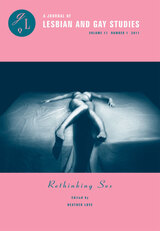 Rethinking Sex, Volume 17
Annemarie Jagose, Ann Cvetkovich, and Heather K. Love, special issue editors
Duke University Press This special issue of GLQ celebrates the twenty-fifth anniversary of the publication of Gayle Rubin’s groundbreaking essay, “Thinking Sex: Notes for a Radical Theory of the Politics of Sexuality.” Credited with inaugurating the contemporary field of sexuality studies, Rubin’s essay calls for an “autonomous theory and politics specific to sexuality.” Looking at the intellectual and political gains of sexual freedom movements over the past two decades, “Rethinking Sex” explores the critical and activist afterlife of the controversial 1982 Barnard College Conference on Sexuality, where Rubin originally presented the essay.
In her contribution to this special issue, Rubin reflects on her earlier essay and examines developments in “pro-sex” feminism since the publication of “Thinking Sex.” Other noted scholars assess the significance of Rubin’s work for histories of sexuality and for new areas in queer studies, such as transgender studies, disability studies, and transnational studies. In honoring Rubin’s scholarship, the contributors address the history of sexual theory and politics and the forms that they might take in the twenty-first century.
 Rethinking Sexual Harrassment
Clare Brant
Pluto Press, 1994 'An innovative and challenging title from feminists in Britain [...] makes a valuable contribution to understanding sexual harassment' Feminist Bookstore News
'Serious and scholarly ... deserves a wide audience' Journal of the Institute of Health Education
'Excellent ... However familiar the subject may seem - or precisely because we all think we know what term 'sexual harassment' means - these discussions open up a series of vital questions, both theoretical and practical. Rethinking Sexual Harassment is a valuable contribution to a debate that continues all around us' Parallax
Sexual harassment continues to stimulate controversy and attract partisan responses. This is an exciting and original exploration of how it came to be defined, what institutional forces and contexts shape our understanding of it. This multidisciplinary study brings together essays from feminist scholars in the fields of law, literature, the social sciences, history and cultural studies.
The contributors' central argument is an awareness of the social and discursive contexts required to challenge sexual harassment effectively. Offering insight into current limitations and making practical suggestions for ways forward, this wide-ranging collection addresses general readers and professionals alike.
Contributors include Suzanne Gibson; Helen Watson; Gargi Bhattacharyya; Ruth Jamieson; Celia Kitzinger; Suzanne Raitt; Ros Hunt; Diane Purkiss; Padma Anagol-McGinn and Jane Beckett
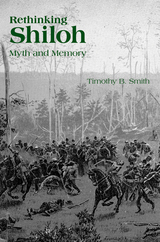 Rethinking Shiloh: Myth and Memory
Timothy B. Smith
University of Tennessee Press, 2013 Ulysses S. Grant once remarked that the Battle of Shiloh “has been perhaps
less understood, or, to state the case more accurately, more persistently
misunderstood, than any other engagement . . . during the entire rebellion.”
In Rethinking Shiloh, Timothy B. Smith seeks to rectify these persistent
myths and misunderstandings, arguing that some of Shiloh’s story is either
not fully examined or has been the result of a limited and narrow collective
memory established decades ago. Continuing the work he began in The
Untold Story of Shiloh, Smith delves even further into the story of Shiloh
and examines in detail how the battle has been treated in historiography and
public opinion.
The nine essays in this collection uncover new details about the
battle, correct some of the myths surrounding it, and reveal new avenues of
exploration. The topics range from a compelling analysis and description of
the last hours of General Albert Sidney Johnston to the effect of the New
Deal on Shiloh National Military Park and, subsequently, our understanding
of the battle. Smith’s careful analyses and research bring attention to
the many relatively unexplored parts of Shiloh such as the terrain, the
actual route of Lew Wallace’s march, and post-battle developments that
affect currently held perceptions of thatfamed clash between Union and
Confederate armies in West Tennessee.
Studying Shiloh should alert readers and historians to the likelihood
of misconceptions in other campaigns and wars—including today’s military
conflicts. By reevaluating aspects of the Battle of Shiloh often ignored by
military historians, Smith’s book makes significant steps toward a more
complete understanding and appreciation of the Shiloh campaign in all of its
ramifications.
 Rethinking Social Policy: Race, Poverty, and the Underclass
Christopher Jencks
Harvard University Press, 1992 In a fervent appeal for clearer thinking on social issues, Christopher Jencks reexamines the way Americans think about race, poverty, crime, heredity, welfare, and the underclass. Arguing that neither liberal nor conservative ideas about these issues withstand close scrutiny, he calls for less emphasis on political principles and more attention to specific programs. Jencks describes how welfare policy was dominated in the early 1980s by conservatives who promoted ideas that justified cutting back sharply on the social programs of Lyndon Johnson's Great Society. They believed that a period of sustained economic growth, with low taxes and free markets, would do more to help poor people than coddling them with government assistance.
Despite the economic expansion of the later Reagan years, however, the problems of persistent poverty grew even more serious. The liberals took the initiative in the late 1980s, but their proposals failed to win broad popular support. With clarity and a gift for apt analogy, Jencks analyzes influential books on such subjects as affirmative action (Thomas Sowell), the “safety net” (Charles Murray), the effects of heredity on learning and propensity to commit crime (James Q. Wilson and Richard Herrnstein), ghetto culture and the underclass (William J. Wilson). His intention throughout is “to unbundle the empirical and moral assumptions that traditional ideologies tie together, making the reader's picture of the world more complicated”—in other words, to force us (readers and policymakers) to look at the way various remedial plans actually succeed or fail.
For example, he believes that until we transform AFDC so that it reinforces rather than subverts American ideals about work and marriage, efforts to build a humane welfare state will never succeed. Other prescriptions, initially surprising and sometimes shocking, show demonstrable good sense once they are examined. As the author says, “If this book encourages readers to think about social policy more concretely, it will have served its primary purpose.”
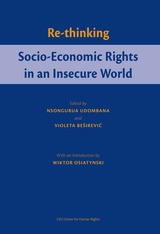 Re-thinking Socio-Economic Rights in an Insecure World
Nsongurua Udombana
Central European University Press, 2005 From November 28 - 29, 2005, the Center for Human Rights of Central European University (CEU) organized a roundtable around the theme: Re-thinking Socio-Economic Rights in an Insecure World. The roundtable brought together scholars and human rights practitioners from different regions to reflect on the following questions relating to social and economic rights, particularly in the context of the global insecurity: If social rights are human rights, how does the failure to advance these rights undermine security? Are social rights human rights or do the claims they incorporate represent social needs? Are they moral or legal rights? Who has a duty to respect these rights? Is there a hierarchy among those who have such duties? How can these duties be fulfilled? What is an appropriate approach to social and economic concerns in developing countries? Is the argument for socio-economic rights an argument that overcomes the causes and legacy of conflicts? Do socio-economic rights deserve constitutional protection? What are the problems behind constitutional protection of such rights? Is the vagueness of social and economic rights an enough reason not to assign such rights to people? Is the rhetoric of social and economic rights helpful in protecting marginalized and neglected groups?
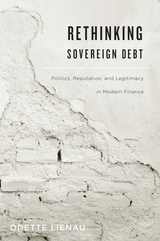 Rethinking Sovereign Debt: Politics, Reputation, and Legitimacy in Modern Finance
Odette Lienau
Harvard University Press, 2014 Conventional wisdom holds that all nations must repay debt. Regardless of the legitimacy of the regime that signs the contract, a country that fails to honor its loan obligations damages its reputation, inviting still greater problems down the road. Yet difficult dilemmas arise from this assumption. Should today's South Africa be responsible for apartheid-era debt? Is it reasonable to tether postwar Iraq with Saddam Hussein's excesses?
Rethinking Sovereign Debt is a probing historical analysis of how sovereign debt continuity--the rule that nations should repay loans even after a major regime change, or expect reputational consequences--became the consensus approach. Odette Lienau contends that the practice is not essential for functioning international capital markets, and demonstrates how it relies on ideas of absolutist government that have come under fire over the last century. Challenging previous accounts, Lienau incorporates a wealth of original research to argue that Soviet Russia's repudiation of Tsarist debt and Great Britain's 1923 arbitration with Costa Rica hint at the feasibility of selective debt cancellation. She traces the notion of debt continuity from the post-World War I era to the present, emphasizing the role of government officials, the World Bank, and private-market actors in shaping our existing framework.
Lienau calls on scholars and policymakers to recognize political choice and historical precedent in sovereign debt and reputation, in order to move beyond an impasse when a government is overthrown.
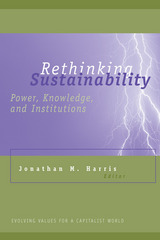 Rethinking Sustainability: Power, Knowledge, and Institutions
Jonathan Harris, Editor
University of Michigan Press, 2003 Bringing together the thoughts of economists, political scientists, anthropologists, philosophers, and agricultural policy professionals, this volume focuses on the issues of sustainability in development. Examining such topics as international trade, political power, gender roles, legal institutions, and agricultural research, the contributors focus on the missing links in theory and practice that have been barriers to the achievement of truly sustainable development.
Any theory of sustainable development must take into account economic, social, and environmental dimensions. Until recently, the question "What is development?" was often answered predominantly from the economist's perspective, with high priority being assigned to expansion of economic output. Social, political, institutional, and ethical aspects have often been neglected. But now that sustainable development has become a broadly accepted concept, it is impossible to maintain a narrowly economistic view of development. For this reason, the varied perspectives offered by the contributors to this volume are crucial to understanding the process of development as it relates to environmental sustainability and human well-being.
The selection of articles is meant to be stimulating and provocative rather than comp-rehensive. They are roughly divided between those dealing with broad theoretical issues concerning the economic, political, and social aspects of development (Part I) and those presenting more applied analysis (Part II). The common thread is a concern for examining which factors contribute to making development socially just and environmentally sound.
Rethinking Sustainability will be of interest to economists and social scientists, development professionals, and instructors seeking to offer their students a broad perspective on development issues.
Jonathan Harris is Senior Research Associate, Global Development and Environment Institute at Tufts University, as well as Adjunct Associate Professor of International Economics at Tufts University Fletcher School of Law.
Rethinking the 1898 Reform Period: Political and Cultural Change in Late Qing China
Rebecca E. Karl
Harvard University Press, 2002 The nine essays in this volume reexamine the “hundred days” in 1898 and focus particularly on the aftermath of this reform movement. Their collective goal is to rethink the reforms not as a failed attempt at modernizing China but as a period in which many of the institutions that have since structured China began. Among the subjects covered are the reform movement, the reformers, newspapers, education, the urban environment, female literacy, the “new” woman, citizenship, and literature. All the contributors urge the view that modernity must be seen as a conceptual framework that shaped the Chinese experience of a global process, an experience through which new problems were raised and old problems rethought in creative, inventive, and contradictory ways.
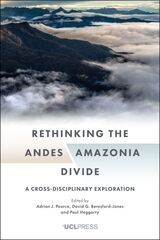 Rethinking the Andes-Amazonia Divide: A Cross-Disciplinary Exploration
Edited by Adrian J. Pearce, David G. Beresford-Jones, and Paul Heggarty
University College London, 2020 Nowhere on Earth is there an ecological transformation so swift and so extreme as between the snow line of the high Andes and the tropical rainforest of Amazonia. Because of that, the different disciplines that research the human past in South America have tended to treat these two great subzones of the continent as self-contained enough to be studied independently of each other. Objections to that approach have repeatedly been raised, however, warning against imagining too sharp a divide between the people and societies of the Andes and Amazonia when there are clear indications of significant connections and transitions between them.
Rethinking the Andes-Amazonia Divide brings together archaeologists, linguists, geneticists, anthropologists, ethnohistorians, and historians to explore both correlations and contrasts in how the various disciplines see the relationship between the Andes and Amazonia, from deepest prehistory up to the European colonial period. This collaboration has emerged from an innovative program of conferences and symposia conceived to generate discussion and cooperation across the divides between disciplines.
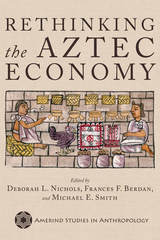 Rethinking the Aztec Economy
Edited by Deborah L. Nichols, Frances F. Berdan, and Michael E. Smith
University of Arizona Press, 2017 With its rich archaeological and historical record, the Aztec empire provides an intriguing opportunity to understand the dynamics and structure of early states and empires. Rethinking the Aztec Economy brings together leading scholars from multiple disciplines to thoroughly synthesize and examine the nature of goods and their movements across rural and urban landscapes in Mesoamerica. In so doing, they provide a new way of understanding society and economy in the Aztec empire.
The volume is divided into three parts. Part 1 synthesizes our current understanding of the Aztec economy and singles out the topics of urbanism and provincial merchant activity for more detailed analysis. Part 2 brings new data and a new conceptual approach that applies insights from behavioral economics to Nahua and Aztec rituals and social objects. Contributors also discuss how high-value luxury goods, such as feather art, provide insights about both economic and sacred concepts of value in Aztec society. Part 3 reexamines the economy at the Aztec periphery. The volume concludes with a synthesis on the scale, integration, and nature of change in the Aztec imperial economy.
Rethinking the Aztec Economy illustrates how superficially different kinds of social contexts were in fact integrated into a single society through the processes of a single economy. Using the world of goods as a crucial entry point, this volume advances scholarly understanding of life in the Aztec world.
Contributors:
Frances F. Berdan
Laura Filloy Nadal
Janine Gasco
Colin Hirth
Kenneth G. Hirth
Sarah Imfeld
María Olvido Moreno Guzmán
Deborah L. Nichols
Alan R. Sandstrom
Pamela Effrein Sandstrom
Michael E. Smith
Barbara L. Stark
Emily Umberger
 Rethinking the Cold War
edited by Allen Hunter
Temple University Press, 1997 The end of the Cold War should have been an occasion to reassess its origins, history, significance, and consequences. Yet most commentators have restated positions already developed during the Cold War. They have taken the break-up of the Soviet Union, the shift toward capitalism and electoral politics in Eastern Europe and countries formerly in the USSR as evidence of a moral and political victory for the United States that needs no further elaboration.
This collection of essays offers a more complex and nuanced analysis of Cold War history. It challenges the prevailing perspective, which editor Allen Hunter terms "vindicationism." Writing from different disciplinary and conceptual vantage points, the contributors to the collection invite a rethinking of what the Cold War was, how fully it defined the decades after World War II, what forces sustained it, and what forces led to its demise. By exploring a wide range of central themes of the era, Rethinking the Cold War widens the discussion of the Cold War's place in post-war history and intellectual life.
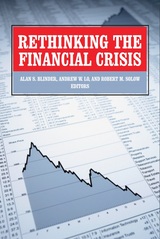 Rethinking the Financial Crisis
Alan S. Blinder
Russell Sage Foundation, 2013 Some economic events are so major and unsettling that they “change everything.” Such is the case with the financial crisis that started in the summer of 2007 and is still a drag on the world economy. Yet enough time has now elapsed for economists to consider questions that run deeper than the usual focus on the immediate causes and consequences of the crisis. How have these stunning events changed our thinking about the role of the financial system in the economy, about the costs and benefits of financial innovation, about the efficiency of financial markets, and about the role the government should play in regulating finance? In Rethinking the Financial Crisis, some of the nation’s most renowned economists share their assessments of particular aspects of the crisis and reconsider the way we think about the financial system and its role in the economy. In its wide-ranging inquiry into the financial crash, Rethinking the Financial Crisis marshals an impressive collection of rigorous and yet empirically-relevant research that, in some respects, upsets the conventional wisdom about the crisis and also opens up new areas for exploration. Two separate chapters–by Burton G. Malkiel and by Hersh Shefrin and Meir Statman – debate whether the facts of the financial crisis upend the efficient market hypothesis and require a more behavioral account of financial market performance. To build a better bridge between the study of finance and the “real” economy of production and employment, Simon Gilchrist and Egan Zakrasjek take an innovative measure of financial stress and embed it in a model of the U.S. economy to assess how disruptions in financial markets affect economic activity—and how the Federal Reserve might do monetary policy better. The volume also examines the crucial role of financial innovation in the evolution of the pre-crash financial system. Thomas Philippon documents the huge increase in the size of the financial services industry relative to real GDP, and also the increasing cost per financial transaction. He suggests that the finance industry of 1900 was just as able to produce loans, bonds, and stocks as its modern counterpart—and it did so more cheaply. Robert Jarrow looks in detail at some of the major types of exotic securities developed by financial engineers, such as collateralized debt obligations and credit-default swaps, reaching judgments on which make the real economy more efficient and which do not. The volume’s final section turns explicitly to regulatory matters. Robert Litan discusses the political economy of financial regulation before and after the crisis. He reviews the provisions of the Dodd-Frank Wall Street Reform and Consumer Protection Act of 2010, which he considers an imperfect but useful response to a major breakdown in market and regulatory discipline. At a time when the financial sector continues to be a source of considerable controversy, Rethinking the Financial Crisis addresses important questions about the complex workings of American finance and shows how the study of economics needs to change to deepen our understanding of the indispensable but risky role that the financial system plays in modern economies.
Rethinking the Human
J. Michelle Molina
Harvard University Press, 2010 In our globalized world, differing conceptions of human nature and human values raise questions as to whether universal and partisan claims and perspectives can be reconciled, whether interreligious and intercultural conversations can help build human community, and whether a pluralistic ethos can transcend uncompromising notions as to what is true, good, and just.
In this volume, world-class scholars from religious studies, the humanities, and the social sciences explore what it means to be human through a multiplicity of lives in time and place as different as fourth-century BCE China and the world of an Alzheimer’s patient today. Refusing the binary, these essays go beyond description to theories of aging and acceptance, ethics in caregiving, and the role of ritual in healing the inevitable divide between the human and the ideal.
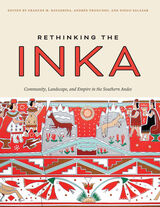 Rethinking the Inka: Community, Landscape, and Empire in the Southern Andes
Edited by Frances M. Hayashida, Andrés Troncoso, and Diego Salazar
University of Texas Press, 2022 2023 Book Award, Society for American Archaeology
A dramatic reappraisal of the Inka Empire through the lens of Qullasuyu.
The Inka conquered an immense area extending across five modern nations, yet most English-language publications on the Inka focus on governance in the area of modern Peru. This volume expands the range of scholarship available in English by collecting new and notable research on Qullasuyu, the largest of the four quarters of the empire, which extended south from Cuzco into contemporary Bolivia, Argentina, and Chile. From the study of Qullasuyu arise fresh theoretical perspectives that both complement and challenge what we think we know about the Inka. While existing scholarship emphasizes the political and economic rationales underlying state action, Rethinking the Inka turns to the conquered themselves and reassesses imperial motivations. The book’s chapters, incorporating more than two hundred photographs, explore relations between powerful local lords and their Inka rulers; the roles of nonhumans in the social and political life of the empire; local landscapes remade under Inka rule; and the appropriation and reinterpretation by locals of Inka objects, infrastructure, practices, and symbols. Written by some of South America’s leading archaeologists, Rethinking the Inka is poised to be a landmark book in the field.
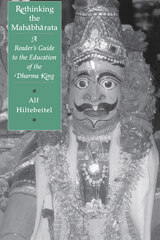 Rethinking the Mahabharata: A Reader's Guide to the Education of the Dharma King
Alf Hiltebeitel
University of Chicago Press, 2001 The ancient Indian Sanskrit tradition produced no text more intriguing, or more persistently misunderstood or underappreciated, than the Mahabharata. Its intricacies have waylaid generations of scholars and ignited dozens of unresolved debates. In Rethinking the Mahabharata, Alf Hiltebeitel offers a unique model for understanding the great epic. Employing a wide range of literary and narrative theory, Hiltebeitel draws on historical and comparative research in an attempt to discern the spirit and techniques behind the epic's composition. He focuses on the education of Yudhisthira, also known as the Dharma King, and shows how the relationship of this figure to others-especially his author-grandfather Vyasa and his wife Draupadi-provides a thread through the bewildering array of frames and stories embedded within stories. Hiltebeitel also offers a revisionist theory regarding the dating and production of the original text and its relation to the Veda. No ordinary reader's guide, this volume will illuminate many mysteries of this enigmatic masterpiece.
This work is the fourth volume in Hiltebeitel's study of the Draupadi cult. Other volumes include Mythologies: From Gingee to Kuruksetra (Volume One), On Hindu Ritual and the Goddess (Volume Two), and Rethinking India's Oral and Classical Epics (Volume Three).
 Rethinking the Medieval Legacy for Contemporary Theology
Anselm K. Min
University of Notre Dame Press, 2015 In Rethinking the Medieval Legacy for Contemporary Theology, six distinguished theologians bridge medieval and contemporary theologies by developing the theological significance of medieval insights in response to contemporary issues. Their nuanced readings of medieval texts, extended to major theological issues of our time, provide examples of the retrieval of the medieval tradition, an essential part of any contemporary theological reconstruction.
Barbara Newman extends the theology of perichoresis or mutual indwelling to illuminate the relationship between donor and recipient in the case of organ transplants; Marilyn McCord Adams applies insights about divine friendship to the perennial issue of horrendous evil; and Kevin Madigan brings principles of medieval exegesis to bear on the contemporary historical critical approach to biblical interpretation. Ingolf U. Dalferth applies insights from the doctrine of divine omnipotence and creation ex nihilo to deconstruct Heidegger’s limitation of the possibilities of authentic existence to historical facticity. Pim Valkenberg explores the possibilities of a theological encounter between Christianity and Islam in the works of Aquinas and Nicholas of Cusa; and Anselm K. Min applies the analogical insights of Aquinas on the nature and limits of human knowledge of God to a critique of contemporary theologies that claim to know either too little or too much about God.
“This is a splendid collection of essays. Anselm K. Min has assembled a distinguished group of theologians who persuasively argue for the relevance of the Christian theology of the Middle Ages to the problems we face in the twenty-first century.” —Kevin Hart, Edwin B. Kyle Professor of Christian Studies, University of Virginia
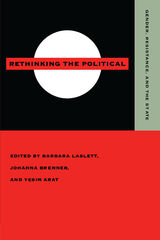 Rethinking the Political: Gender, Resistance, and the State
Edited by Barbara Laslett, Johanna Brenner, and Yesim Arat
University of Chicago Press, 1995 This collection of eighteen articles shows how conceptions of the political are expanded and revised when viewed through the lens of gender. Carefully organized to serve scholars and students across the social sciences, this book reexamines such basic notions as citizenship, collectivity, political resistance, and the state, drawing on examples with important historical and national variations.
Section One, "Gender, Citizenship, and Collectivity," includes Nancy Frazer and Linda Gordon's critique of dependency and citizenship; Iris Young on women as a social collective; Ruth Bloch on the feminization of public virtue in revolutionary America; Trisha Franzen on feminism and lesbian community, and Sonia Kruks on de Beauvoir and contemporary feminism.
"Collective Action and Women's Resistance," Section Two, features Louis Tilly's "Paths of Proletarianization"; Temma Kaplan's "Female Consciousness and Collective Action"; and five assessments of women's collective action worldwide: Samira Haj on Palestine, Arlene McLeod on Egypt, Gay Seidman on South Africa, Nancy Sternbach et al. on Latin America, and Anne Walthall on Japan.
Concluding with a section on gender and the state, Rethinking the Political also features Bronwyn Winter on the law and cultural relativism; Sherene Razack on sexual violence; Wendy Luttrell on educational institutions; Patricia Stamp on ethnic conflict in postcolonial Kenya; Elizabeth Schmidt on patriarchy and capitalism in Zimbabwe; and Muriel Nazzari on the "woman question" in post-revolutionary Cuba.
 Rethinking the Purpose of Business: Interdisciplinary Essays from the Catholic Social Tradition
S. A. Cortright
University of Notre Dame Press, 2002 Rethinking the Purpose of Business challenges reigning shareholder and stakeholder management theories using philosophical and theological dimensions of the Catholic social tradition. In this useful book, the contributors, including management theorists, moral theologians, economists, ethicists, and attorneys, debate complicated issues such as the ethics of profit seeking, equity and efficiency in the firm, the shareholder value principle, social ethics of corporate management, the principle of subsidiarity, and modern contract theory.
While the contributors to this thought-provoking volume share a respect for the power of markets, they also assign value to community, common goods, and personal virtue. Essays combine organizational and management theory with philosophical and theological accounts of human purpose. A central argument of this collection is that the tradition of Catholic social thought provides principles that enable fruitful conversations across disciplines regarding the purpose of business and economic activity.
Contributors Michael Naughton, Jean-Yves Calvez, Charles Clark, S. A. Cortright, and Ernest Pierucci discuss the anthropological implications of the current shareholder and stakeholder theories. Robert Kennedy, James Gordley, and Dennis McCann assess the communitarian and personal principles of traditional Catholic social teaching as they relate to organizational and managerial theories. Peter Koslowski, Domènec Melé, Lee Tavis, and Timothy Fort consider how Catholic social principles ought to reshape our understanding of the firm. Jeff Gates, James Murphy, and David Pyke consider how concrete practices in ownership and job design should be affected.
S. A. CORTRIGHT is associate professor of philosophy and tutor, Integral Curriculum of Liberal Arts, Saint Mary's College of California, where he also serves as Director of the John F. Henning Institute.
MICHAEL J. NAUGHTON is Director of the John A. Ryan Institute for Catholic Social Thought at the Center for Catholic Studies, St. Thomas University, St. Paul, Minnesota, as well as associate professor with joint appointments in the Department of Theology and the Graduate School of Business.
----------
"… a selection of impressive and insightful essays by erudite authors concerning business management theories that remain in harmony with social traditions of Catholicism … Rethinking the Purpose of Business is thoughtful and thought-provoking reading which is especially commended to anyone seeking to balance the requirements of faith with the demands of commerce." --The Midwest Book Review
"At this time in America's history, when business scandals of unimaginable proportions make regular headlines, a volume like this can serve as a starting point for changing the way business is taught in our colleges and universities." --Research News and Opportunities in Science and Theology
"[A]n earnest collection of essays on what Catholic social teaching has to say about business and corporations and our role in them." --Commonweal
"The main benefit of this book is that it shows how widespread the interest is among scholars and businesspeople to use the categories of Catholic social thought to understand business activity." --Markets & Morality
Rethinking the Republic of Letters: Memory and Identity in Early Modern Learned Communities
Koen Scholten
Amsterdam University Press, 2025 This book offers a revisionist look at the historiography of the Republic of Letters and the community of learning in early modern Europe. It suggests a new approach, conceptualising the learned world as a web of imagined communities in which the members do not know all their peers. These communities formed through distinct memory cultures and the representation of and identification with collective identities. Rethinking the Republic of Letters looks at early modern biographical dictionaries (vitae), eulogies, letters, travelogues, and funerary monuments of early modern learned men to trace the (re)formation of these communities. It thereby offers a novel perspective on early modern learned communities – the many Republics of Letters.
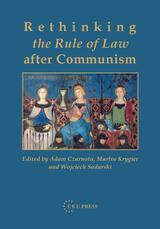 Rethinking the Rule of Law after Communism
Wojciech Sadurski
Central European University Press, 2005 In the original euphoria that attended the virtually simultaneous demise of so many dictatorships in the late 1980s and early 90s, there was a widespread belief that problems of 'transition' basically involved shedding a known past, and replacing it with an also-known future. This volume surveys and contributes to the prolific debates that occurred in the years between the collapse of communism and the enlargement of the European Union regarding the issues of constitutionalism, dealing with the past, and the rule of law in the post-communist world. Eminent scholars explore the issue of transitional justice, highlighting the distinct roles of legal and constitutional bodies in the post-transition period. The introduction seeks to frame the work as an intervention in the discussion of communism and transition-two stable and separate points-while emphasizing the instability of the post-transition moment.
 Rethinking the Youth Question: Education, Labour, and Cultural Studies
Phil Cohen
Duke University Press, 1999 Phil Cohen is a founding scholar in the study of British youth subculture and a key figure at the Birmingham Centre for Contemporary Cultural Studies. In Rethinking the Youth Question, essays representing twenty years of Cohen’s work—beginning in 1969—are presented together for the first time. Some of these essays have not previously been published, others have been difficult to locate, and together they provide a precise conceptual history of the development of British cultural studies and a thoughtful contemplation of the significance of the entire cultural studies enterprise. With a preface that contextualizes Cohen’s essays for an American audience, Rethinking the Youth Question reflects his tenure as a community organizer and activist in inner-city London and includes ethnographic, theoretical, and historical studies of Britain’s urban youth. Cohen offers an enlightening analysis of British educational policy, develops historical and structural accounts of generational and gendered divisions of labor, and discusses such topics as racism and the rise of the New Right. Also exploring broader questions such as the theoretical and sociological significance of youth as a category, this book is a model of useful methodology and engaged cultural reflection. With empirical research that combines biographical, autobiographical, critical, cultural, and social elements, Rethinking the Youth Question is sure to impact debates surrounding the pedagogical value of cultural studies and the nature and future of this field in both the United States and Britain. This collection will be informative reading for students and scholars of cultural studies, sociologists, and others interested in the category of youth.
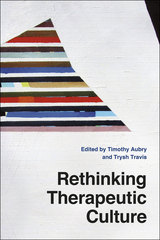 Rethinking Therapeutic Culture
Edited by Timothy Aubry and Trysh Travis
University of Chicago Press, 2015 Social critics have long lamented America’s descent into a “culture of narcissism,” as Christopher Lasch so lastingly put it fifty years ago. From “first world problems” to political correctness, from the Oprahfication of emotional discourse to the development of Big Pharma products for every real and imagined pathology, therapeutic culture gets the blame. Ask not where the stereotype of feckless, overmedicated, half-paralyzed millennials comes from, for it comes from their parents’ therapist’s couches. Rethinking Therapeutic Culture makes a powerful case that we’ve got it all wrong. Editors Timothy Aubry and Trysh Travis bring us a dazzling array of contributors and perspectives to challenge the prevailing view of therapeutic culture as a destructive force that encourages narcissism, insecurity, and social isolation. The collection encourages us to examine what legitimate needs therapeutic practices have served and what unexpected political and social functions they may have performed. Offering both an extended history and a series of critical interventions organized around keywords like pain, privacy, and narcissism, this volume offers a more nuanced, empirically grounded picture of therapeutic culture than the one popularized by critics. Rethinking Therapeutic Culture is a timely book that will change the way we’ve been taught to see the landscape of therapy and self-help.
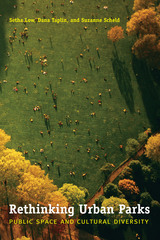 Rethinking Urban Parks: Public Space and Cultural Diversity
By Setha Low, Dana Taplin, and Suzanne Scheld
University of Texas Press, 2005 Urban parks such as New York City's Central Park provide vital public spaces where city dwellers of all races and classes can mingle safely while enjoying a variety of recreations. By coming together in these relaxed settings, different groups become comfortable with each other, thereby strengthening their communities and the democratic fabric of society. But just the opposite happens when, by design or in ignorance, parks are made inhospitable to certain groups of people. This pathfinding book argues that cultural diversity should be a key goal in designing and maintaining urban parks. Using case studies of New York City's Prospect Park, Orchard Beach in Pelham Bay Park, and Jacob Riis Park in the Gateway National Recreation Area, as well as New York's Ellis Island Bridge Proposal and Philadelphia's Independence National Historical Park, the authors identify specific ways to promote, maintain, and manage cultural diversity in urban parks. They also uncover the factors that can limit park use, including historical interpretive materials that ignore the contributions of different ethnic groups, high entrance or access fees, park usage rules that restrict ethnic activities, and park "restorations" that focus only on historical or aesthetic values. With the wealth of data in this book, urban planners, park professionals, and all concerned citizens will have the tools to create and maintain public parks that serve the needs and interests of all the public.
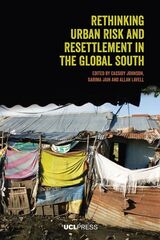 Rethinking Urban Risk and Resettlement in the Global South
Edited by Cassidy Johnson, Garima Jain, and Allan Lavell
University College London, 2021 A study on urban risk and resettlement programs in the Global South in the era of climate change.
Environmental changes impact everyone, but the burden is especially heavy upon the lives and livelihoods of the urban poor and those living in informal settlements. In an effort to reduce urban residents’ exposure to climate change and natural disasters, resettlement programs are becoming widespread across the Global South. Yet, while resettlement may reduce a region’s future climate-related disaster risk, it can also often increase poverty and vulnerability. This volume collates the findings from a research project that examined urban areas across the globe, including case studies from India, Uganda, Peru, Colombia, Mexico, Cambodia, and the Philippines. The book offers a unique approach to resettlement, providing an opportunity for urban planners to re-think how disaster risk management can better address the accumulation of urban risks in the era of climate change.
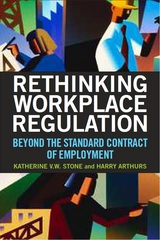 Rethinking Workplace Regulation: Beyond the Standard Contract of Employment
Katherine V.W. Stone
Russell Sage Foundation, 2013 During the middle third of the 20th century, workers in most industrialized countries secured a substantial measure of job security, whether through legislation, contract or social practice. This “standard employment contract,” as it was known, became the foundation of an impressive array of rights and entitlements, including social insurance and pensions, protection against unsociable working conditions, and the right to bargain collectively. Recent changes in technology and the global economy, however, have dramatically eroded this traditional form of employment. Employers now value flexibility over stability, and increasingly hire employees for short-term or temporary work. Many countries have also repealed labor laws, relaxed employee protections, and reduced state-provided benefits. As the old system of worker protection declines, how can labor regulation be improved to protect workers? In Rethinking Workplace Regulation, nineteen leading scholars from ten countries and half a dozen disciplines present a sweeping tour of the latest policy experiments across the world that attempt to balance worker security and the new flexible employment paradigm. Edited by noted socio-legal scholars Katherine V.W. Stone and Harry Arthurs, Rethinking Workplace Regulation presents case studies on new forms of dispute resolution, job training programs, social insurance and collective representation that could serve as policy models in the contemporary industrialized world. The volume leads with an intriguing set of essays on legal attempts to update the employment contract. For example, Bruno Caruso reports on efforts in the European Union to “constitutionalize” employment and other contracts to better preserve protective principles for workers and to extend their legal impact. The volume then turns to the field of labor relations, where promising regulatory strategies have emerged. Sociologist Jelle Visser offers a fresh assessment of the Dutch version of the ‘flexicurity’ model, which attempts to balance the rise in nonstandard employment with improved social protection by indexing the minimum wage and strengthening rights of access to health insurance, pensions, and training. Sociologist Ida Regalia provides an engaging account of experimental local and regional “pacts” in Italy and France that allow several employers to share temporary workers, thereby providing workers job security within the group rather than with an individual firm. The volume also illustrates the power of governments to influence labor market institutions. Legal scholars John Howe and Michael Rawling discuss Australia's innovative legislation on supply chains that holds companies at the top of the supply chain responsible for employment law violations of their subcontractors. Contributors also analyze ways in which more general social policy is being renegotiated in light of the changing nature of work. Kendra Strauss, a geographer, offers a wide-ranging comparative analysis of pension systems and calls for a new model that offers “flexible pensions for flexible workers.” With its ambitious scope and broad inquiry, Rethinking Workplace Regulation illustrates the diverse innovations countries have developed to confront the policy challenges created by the changing nature of work. The experiments evaluated in this volume will provide inspiration and instruction for policymakers and advocates seeking to improve worker’s lives in this latest era of global capitalism.
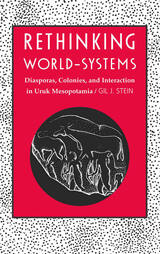 Rethinking World-Systems: Diasporas, Colonies, and Interaction in Uruk Mesopotamia
Gil J. Stein
University of Arizona Press, 1999 The use of world-systems theory to explain the spread of social complexity has become accepted practice by both historians and archaeologists. Gil Stein now offers the first rigorous test of world systems as a model in archaeology, arguing that the application of world-systems theory to noncapitalist, pre-fifteenth-century societies distorts our understanding of developmental change by overemphasizing the role of external over internal dynamics. In this new study, Stein proposes two complementary theoretical frameworks for the study of interregional interaction: a "distance-parity" model, which views world-systems as simply one factor in a broader range of intersocietal relations, and a "trade-diaspora" model, which explains variation in exchange systems from the perspective of participant groups. He tests his models against the archaeological record of Mesopotamian expansion into the Anatolian highlands during the fourth millennium B.C. Whereas some scholars have considered this "Uruk expansion" to be one of the earliest documented world-systems, Stein uses data from the site of Hacinebi in southeastern Turkey to support his alternate perspective. Comparing economic data from pre- and postcontact phases, Stein shows that the Mesopotamians did not dominate the people of this distant periphery. Such evidence, argues Stein, shows that we must look more closely at the local cultures of peripheries to develop realistic cross-cultural models of variation in colonialism, exchange, and secondary state formation in ancient societies. By demonstrating that a multitude of factors affect the nature and consequences of intersocietal contacts, his book advocates a much-needed balance between recognizing that no society can be understood in complete isolation from its neighbors and assuming the primacy of outside contact in a society's development.
 Rethinking Your Writing: Rhetoric for Reflective Writers
E. Shelley Reid
University Press of Colorado, 2025 With its emphasis on both rhetoric and reflection, Rethinking Your Writing foregrounds the inquiry and decision-making processes that help writers succeed in today's writing task—and transfer that learning to the next one. Students are invited to move beyond “just do it” writing to more deliberately predict, problem-solve, and reflect throughout their process. Created from the start as an online book, Rethinking also helps support instructors as they engage students with many kinds of writing tasks, from typical first-year assignments like narratives and research-based arguments to writing that happens in response to more complex rhetorical situations, such as community-based writing, writing in multiple genres, and writing across disciplines: - The modular, cross-linked design helps faculty assign and students locate information needed for any writing situation.
- In-depth, student-friendly sections guide students’ thinking on vital but less visible elements of writing, such as threshold concepts, rhetorical analysis, reflective practice, peer review, writers’ dispositions, critical reading, research processes, and questions of equity.
- A book-wide focus on how writers choose their approaches based on their goals, resources, and constraints supports learners who are exploring new genres and audiences, and lays the groundwork for discussion of how writers use tools like Generative AI.
- More than 70 innovative writing exercises help writers explore and practice relevant strategies.
In Rethinking Your Writing, E. Shelley Reid provides a versatile guide that can be tailored to the needs of almost any course or classroom. Whether you select a single module to supplement your current resources or use the text throughout your course, this book is designed to help you engage your students and deepen their understanding of how writers learn and succeed in school, their careers, and beyond.
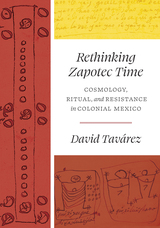 Rethinking Zapotec Time: Cosmology, Ritual, and Resistance in Colonial Mexico
David Tavárez
University of Texas Press, 2022 2024 — Best Book in Colonial Latin American Studies — Colonial Section, Latin American Studies Association
2023 — Best Subsequent Book — Native American and Indigenous Studies Association
2023 — Honorable Mention, Best Book in the Social Sciences — Latin American Studies Association, Mexico Section
2022 — Marysa Navarro Best Book Prize — New England Council of Latin American Studies As the first exhaustive translation and analysis of an extraordinary Zapotec calendar and ritual song corpus, seized in New Spain in 1704, this book expands our understanding of Mesoamerican history, cosmology, and culture. In 1702, after the brutal suppression of a Zapotec revolt, the bishop of Oaxaca proclaimed an amnesty for idolatry in exchange for collective confessions. To evade conflict, Northern Zapotec communities denounced ritual specialists and surrendered sacred songs and 102 divinatory manuals, which preserve cosmological accounts, exchanges with divine beings, and protocols of pre-Columbian origin that strongly resemble sections of the Codex Borgia. These texts were sent to Spain as evidence of failed Dominican evangelization efforts, and there they remained, in oblivion, until the 1960s. In this book, David Tavárez dives deep into this formidable archive of ritual and divinatory manuals, the largest calendar corpus in the colonial Americas, and emerges with a rich understanding of Indigenous social and cultural history, Mesoamerican theories of cosmos and time, and Zapotec ancestor worship. Drawing on his knowledge of Zapotec and Nahuatl, two decades of archival research, and a decade of fieldwork, Tavárez dissects Mesoamerican calendars as well as Native resistance and accommodation to the colonial conquest of time, while also addressing entangled transatlantic histories and shining new light on texts still connected to contemporary observances in Zapotec communities.
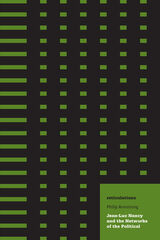 Reticulations: Jean-Luc Nancy and the Networks of the Political
Philip Armstrong
University of Minnesota Press, 2009 Revealing how networks reopen our understanding of political discourse today Significantly advancing our notion of what constitutes a network, Philip Armstrong proposes a rethinking of political public space that specifically separates networks from the current popular discussion of globalization and information technology. Analyzing a wide range of Jean-Luc Nancy’s works, Reticulations shows how his project of articulating the political in terms of singularities, pluralities, and multiplicities can deepen our understanding of networks and how they influence community and politics. Even more striking is the way Armstrong associates this general complex in Nancy’s writing with his concern for what Nancy calls the retreat of the political. Armstrong highlights what Nancy’s perspective on networks reveals about movement politics as seen in the 1999 protests in Seattle against the World Trade Organization, the impact of technology on citizenship, and finally how this perspective critiques the model of networked communism constructed by Hardt and Negri. Contesting the exclusive link between technology and networks, Reticulations ultimately demonstrates how network society creates an entirely new politics, one surprisingly rooted in community.
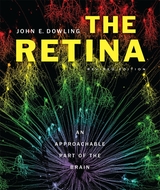 The Retina: An Approachable Part of the Brain, Revised Edition
John E. Dowling
Harvard University Press, 2011 John Dowling’s The Retina, published in 1987, quickly became the most widely recognized introduction to the structure and function of retinal cells. In this Revised Edition, Dowling draws on twenty-five years of new research to produce an interdisciplinary synthesis focused on how retinal function contributes to our understanding of brain mechanisms.
The retina is a part of the brain pushed out into the eye during development. It retains many characteristics of other brain regions and hence has yielded significant insights on brain mechanisms. Visual processing begins there as a result of neuronal interactions in two synaptic layers that initiate an analysis of space, color, and movement. In humans, visual signals from 126 million photoreceptors funnel down to one million ganglion cells that convey at least a dozen representations of a visual scene to higher brain regions.
The Revised Edition calls attention to general principles applicable to all vertebrate retinas, while showing how the visual needs of different animals are reflected in their retinal variations. It includes completely new chapters on color vision and retinal degenerations and genetics, as well as sections on retinal development and visual pigment biochemistry, and presents the latest knowledge and theories on how the retina is organized anatomically, physiologically, and pharmacologically.
The clarity of writing and illustration that made The Retina a book of choice for a quarter century among graduate students, postdoctoral fellows, vision researchers, and teachers of upper-level courses on vision is retained in Dowling’s new easy-to-read Revised Edition.
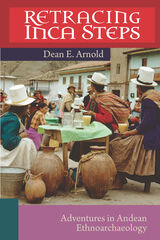 Retracing Inca Steps: Adventures in Andean Ethnoarchaeology
Dean E. Arnold
University of Utah Press, 2021 Dean Arnold takes readers on a journey into the Andes, recounting the adventures of his 1960s research in the village of Quinua, Peru. Arnold’s quest to understand how contemporary pottery production reflected current Quinua society as well as its ancient Inca and pre-Inca past is one of the earliest studies in what later became known as ethnoarchaeology.
This first-person narrative reveals the challenges of living and working in another culture and the many obstacles one can encounter while doing field research. Arnold shares how his feelings of frustration and perceived failure led him to refocus his project, a shift that ultimately led to an entirely new perspective on pottery production in the Andes. Masterfully weaving details about Peru’s geography, ecology, history, prehistory, and culture into his story, he chronicles his change from small-town Midwesterner to a person of much broader vision, newly aware of his North American views and values.
Retracing Inca Steps is an excellent read for the lay person wishing to learn about the environment, prehistory, history, and culture of Peru as well as for students wanting to know more about the joys and rigors of fieldwork.
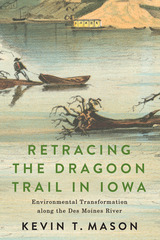 Retracing the Dragoon Trail in Iowa: Environmental Transformation along the Des Moines River
Kevin T. Mason
Michigan State University Press In Retracing the Dragoon Trail in Iowa, historian Kevin T. Mason presents a vivid and deeply researched account of Iowa’s evolving landscape, beginning with the 1835 expedition of the First U.S. Dragoons. Drawing from archival records, maps, government surveys, Indigenous histories, and ecological data, Mason explores how Iowa’s prairies and wetlands gave way to farms, towns, and transportation networks. He situates these environmental shifts within the broader forces of Manifest Destiny, military expansion, and settler colonialism, while amplifying the voices of the Sauk, Meskwaki, Dakota, and other Indigenous nations whose histories are often marginalized. But Mason doesn’t just write about history—he walks it. His 371-mile journey retracing the original dragoon route across Iowa blends scholarship with storytelling, captured through video essays, photography, and writing. This modern-day trek, featured on Iowa PBS’s Iowa Life and Iowa Public Radio’s Talk of Iowa, brings the past into the present, offering a compelling look at how landscapes remember. The result is a powerful contribution to environmental history, regional studies, and Indigenous scholarship—one that reveals the layered interactions between land use, policy, and historical change.
Retracing the Platonic Text
John Russon and John Sallis
Northwestern University Press, 1999 Written from a Continental perspective, Retracing the Platonic Text reveals dimensions of the dialogues that are not addressed by traditional philosophy. These essays by prominent scholars focus on the texts' literary elements, in particular challenges to contemporary interpretations of the Platonic dialogue as a whole. The result illustrates the depth of Platonic thought and the debt of all philosophy to it. Retracing the Platonic Text is a pioneering effort in demonstrating how Continental philosophy both reflects and expands upon Greek philosophy.
The Retractions
Saint Augustine
Catholic University of America Press, 1999 No description available
Retreads
By Prudence Mackintosh
University of Texas Press, 2002 Retreads tells the middle of the story begun in Thundering Sneakers and concluded in Sneaking Out. In this collection of essays, Prudence Mackintosh follows her sons through the "tween" years between little boyhood and adolescence. Vividly portraying the chaos that descends on a house full of active children, she also records the many first times and last times that give poignancy to the middle years of motherhood.
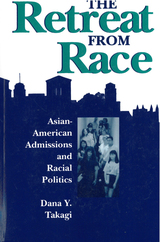 The Retreat from Race: Asian-American Admissions and Racial Politics
Takagi, Dana Y
Rutgers University Press, 1993 “An excellent book. Takagi takes a very complex and sensitive subject—racial politics—and shows, through a careful analysis . . . that changes in the discourse about Asian American admissions have facilitated a 'retreat from race' in the area of affirmative action. . . . This book will appeal to an audience significantly wider than a typical academic one.”— David Karen, Bryn Mawr College Charges by Asian Americans that the top universities in the United States used quotas to limit the enrollment of Asian-American students developed into one of the most controversial public controversies in higher education since the Bakke case. In Retreat from Race, Dana Takagi follows the debates over Asian-American admissions at Berkeley, UCLA, Brown, Stanford, Harvard, and Princeton. She explains important developments in the politics of race: changes in ethnic coalitions, reconstruction of the debate over affirmative action, and the conservative challenge to the civil rights agenda of the 1960s. Takagi examines the history and significance of the Asian American admissions controversy on American race relations both inside and outside higher education.
Takagi's central argument is that the Asian-American admissions controversy facilitated a subtle but important shift in affirmative action policy away from racial preferences toward class preferences. She calls this development a retreat from race. Takagi suggests that the retreat signals not only an actual policy shift but also the increasing reluctance on the part of intellectuals, politicans, and policy analysts to identify and address social problems as explicitly racial problems.
Moving beyond the university setting, Takagi explores the political significance of the retreat from race by linking Asian-American admissions to other controversies in higher education and in American politics, including the debates over political correctness and multiculturalism. In her assessment, the retreat from race is likely to fail at its promise of easing racial tension and promoting racial equality.
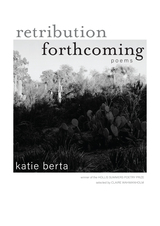 Retribution Forthcoming: Poems
Katie Berta
Ohio University Press, 2024 Influenced by Alice Notley, Eileen Myles, Rachel Zucker, and other poets of the New York school, the poems in Retribution Forthcoming blend a talky, quick, funny voice with candid examinations of gender norms, class pressures, and the existential. Their speaker explores her mortality anxiety through her experiences of gendered exploitation, reflecting on bodily autonomy and the nexus of violences that women face. Using oblique and direct strategies, these poems recount sexual coercion, the ways consumerist society reinforces and reifies gender conformity and performativity, and the psychological ramifications of these abuses of power. Retribution Forthcoming examines selfhood, consciousness, and mortality as they intertwine with our identities and the ways those identities are politicized. At its core, though, this book is an account of sexual assault and its aftermath, exploring how trauma interacts with belief and our ability to trust others and ourselves.
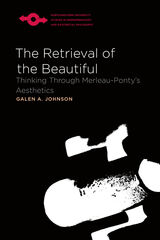 The Retrieval of the Beautiful: Thinking Through Merleau-Ponty’s Aesthetics
Galen A. Johnson
Northwestern University Press, 2010 In this elegant new study Galen Johnson retrieves the concept of the beautiful through the framework of Merleau-Ponty’s aesthetics. Although Merleau-Ponty seldom spoke directly of beauty, his philosophy is essentially about the beautiful. In Johnson’s formulation, the ontology of Flesh as element and the ontology of the Beautiful as elemental are folded together, for Desire, Love, and Beauty are part of the fabric of the world’s element, Flesh itself, the term at which Merleau-Ponty arrived to replace Substance, Matter, or Life as the name of Being. Merleau-Ponty’s Eye and Mind is at the core of the book, so Johnson engages, as Merleau-Ponty did, the writings and visual work of Paul Cézanne, Auguste Rodin, and Paul Klee, as well as Rilke’s commentary on Cézanne and Rodin. From these widely varying aesthetics emerge the fundamental themes of the retrieval of the beautiful: desire, repetition, difference, rhythm, and the sublime. The third part of Johnson’s book takes each of these up in turn, bringing Merleau-Ponty’s aesthetic thinking into dialogue with classical philosophy as well as Sartre, Heidegger, Nietzsche, and Deleuze. Johnson concludes his final chapter with a direct dialogue with Kant and Merleau-Ponty, and also Lyotard, on the subject of the beautiful and the sublime. As we experience with Rodin’s Balzac, beauty and the sublime blend into one another when the beautiful grows powerful, majestic, mysterious, and transcendent.
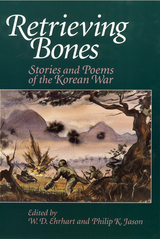 Retrieving Bones: Stories and Poems of the Korean War
Ehrhart, W. D.
Rutgers University Press, 1999 The Korean War was a major event in American history. It marked an abrupt end to the euphoria Americans felt in the wake of victory in World War II and turned out to be the harbinger of disaster in Vietnam a decade later. Though three years of brutal fighting resulted in millions of casualties, the final truce line of 1953 corresponded almost exactly to the positions the opponents held when the fighting began. Back home, the returning veterans met with little interest in or appreciation of what they had endured. Consequently, literary responses to the Korean War did not find an eager readership. Few people, it seemed, wanted to read about what they perceived as a backwater war that possessed neither grand scale nor apparent nobility, a war that ended not with a bang, but a whimper. Yet an important literature has come out of the Korean War. As we mark the fiftieth anniversary of the war, these writings are well worth our attention. Many of the twelve stories and fifty poems assembled in Retrieving Bones have long been out of print and are almost impossible to find in any other source. The editors have enhanced this collection by providing maps, a chronology of the Korean War, and annotated lists of novels, works of nonfiction, and films. In a detailed introduction, Ehrhart and Jason discuss the milestones of the Korean War and place each fiction writer and poet represented into historical and literary contexts. Among the writers and poets are · James Lee Burke · Eugene Burdick · William Chamberlain · Rolando Hinojosa · Reg Saner · Vern Sneider · Stanford Whitmore · Keith Wilson
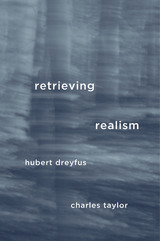 Retrieving Realism
Hubert Dreyfus and Charles Taylor
Harvard University Press, 2015 “Compact and engaging, Retrieving Realism is more approachable than its weighty subject matter might predict…[An] adventurous combination of arguments and mixing of philosophical cultures.” —Boston Review
“A picture held us captive,” writes Wittgenstein in the Philosophical Investigations, describing the powerful image of mind that underlies the modern epistemological tradition from Descartes onward. Retrieving Realism offers a radical critique of the Cartesian epistemic picture that has captivated philosophy for too long and restores a realist view affirming our direct access to the everyday world and to the physical universe.
According to Descartes, knowledge exists in the form of ideas in the mind that purportedly represent the world. This “mediational” epistemology—internal ideas mediating external reality—continues to exert a grip on Western thought, and even philosophers such as Quine, Rorty, and Davidson who have claimed to refute Descartes remain imprisoned within its regime. As Hubert Dreyfus and Charles Taylor show, knowledge consists of much more than the explicit representations we formulate. We gain knowledge of the world through bodily engagement with it—by handling things, moving among them, responding to them—and these forms of knowing cannot be understood in mediational terms. Dreyfus and Taylor also contest Descartes’s privileging of the individual mind, arguing that much of our understanding of the world is necessarily shared.
Once we deconstruct Cartesian mediationalism, the problems that Hume, Kant, and many of our contemporaries still struggle with—trying to prove the existence of objects beyond our representations—fall away, as does the motivation for nonrealist doctrines. We can then begin to describe the background everyday world we are absorbed in and the universe of natural kinds discovered by science.
 Retro Ball Parks: Instant History, Baseball, and the New American City
Daniel Rosensweig
University of Tennessee Press, 2005 Oriole Park at Camden Yards in Baltimore opened in 1992 as an intentional antidote to the modern multiuse athletic stadium. Home to only one sport and featuring accents of classic parks of previous generations. Oriole Park attempted to reconstitute Baltimore’s past while serving as a cornerstone of downtown redevelopment. Since the gates opened at Camden yards, more than a dozen other American cities have constructed “new old” major league parks – Cleveland, Detroit, Seattle, Pittsburgh, Milwaukee, Atlanta, Denver, Phoenix, San Francisco, Cincinnati, Houston, Arlington, Texas, and San Diego. In Retro Ball Parks, Daniel Rosenweig explores the cultural and economic role of retro baseball parks and traces the cultural implications of re-creating the old in new urban spaces.
According to Rosenweig, the new urban landscape around these retro stadiums often presents a more homogenous culture than the one the new park replaced. Indeed, whole sections of cities have razed in order to build stadiums that cater to clientele eager to enjoy a nostalgic urban experience. This mandate to draw suburban residents and tourists to the heart of downtown, combined with the accompanying gentrification of these newly redeveloped areas, has fundamentally altered historic urban centers.
Focusing on Cleveland’s Jacobs Field as a case study, Rosenweig explores the political economy surrounding the construction of downtown ball parks, which have emerged as key components of urban entertainment-based development. Blending economic and cultural analysis, he considers the intersection of race and class in these new venues. For example, he shows that African American consumers in the commercial district around Jacobs Field have largely been replaced by symbolic representations of African American culture, such as piped-in rap music and Jackie Robinson replica jerseys. He concludes that the question of authenticity, the question of what it means to simultaneously commemorate and commodify the past in retro ball parks, mirrors larger cultural issues regarding the nature and implications of urban redevelopment and gentrification.
Daniel Rosensweig is a professor in the Bachelor of Interdisciplinary Studies Program at the University of Virginia
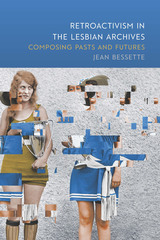 Retroactivism in the Lesbian Archives: Composing Pasts and Futures
Jean Bessette
Southern Illinois University Press, 2018 Winner, 2018 Winifred Bryan Horner Outstanding Book Award Grassroots historiography has been essential in shaping American sexual identities in the twentieth century. Retroactivism in the Lesbian Archives examines how lesbian collectives have employed “retroactivist” rhetorics to propel change in present identification and politics. By appropriating and composing versions of the past, these collectives question, challenge, deconstruct, and reinvent historical discourse itself to negotiate and contest lesbian identity. Bessette considers a diverse array of primary sources, including grassroots newsletters, place-based archives, experimental documentary films, and digital video collections, to investigate how retroactivists have revised and replaced dominant accounts of lesbian deviance. Her analysis reveals inventive rhetorical strategies leveraged by these rhetors to belie the alienating, dispersing effects of discourses that painted women with same-sex desire as diseased and criminal. Focusing on the Daughters of Bilitis, the Lesbian Herstory Archives, and the June L. Mazer Archives, and on historiographic filmmakers such as Barbara Hammer and Cheryl Dunye, Bessette argues that these retroactivists composed versions of a queer past that challenged then-present oppressions, joined together provisional communities, and disrupted static definitions and associations of lesbian identity. Retroactivism in the Lesbian Archives issues a challenge to feminist and queer scholars to acknowledge how historiographic rhetoric functions in defining and contesting identities and the historical forces that shape them.
Retrofitting Blade Runner: Issues in Ridley Scott's Blade Runner and Phillip K. Dick's Do Androids Dream of Electric Sheep?
Judith B. Kerman
University of Wisconsin Press, 1997 This book of essays looks at the multitude of texts and influences which converge in Ridley Scott’s film Blade Runner, especially the film’s relationship to its source novel, Philip K. Dick’s Do Androids Dream of Electric Sheep? Essays consider political, moral and technological issues raised by the film, as well as literary, filmic, technical and aesthetic questions. Contributors discuss the film’s psychological and mythic patterns, importance political issues and the roots of the film in Paradise Lost, Frankenstein, detective fiction, and previous science fiction cinema.
Retro-reflective Beamforming Technique for Microwave Power Transmission
Mingyu Lu
The Institution of Engineering and Technology, 2024 Microwave power transmission technology, which is a sub-discipline of the wireless power transmission technology, aims to transmit electrical power without using wires/cables in the microwave frequency band. The retro-reflective beamforming technique has the potential to enable efficient and safe microwave power transmission, as it includes the following two technical elements. First, a directional microwave beam is generated as the carrier of wireless power. Second, the microwave power beam could be steered in real time toward mobile wireless power receiver(s). This book offers a comprehensive narrative of retro-reflective beamforming in the context of microwave power transmission.
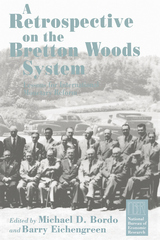 A Retrospective on the Bretton Woods System: Lessons for International Monetary Reform
Edited by Michael D. Bordo and Barry Eichengreen
University of Chicago Press, 1993 At the close of the Second World War, when industrialized nations faced serious trade and financial imbalances, delegates from forty-four countries met in Bretton Woods, New Hampshire, in order to reconstruct the international monetary system. In this volume, three generations of scholars and policy makers, some of whom participated in the 1944 conference, consider how the Bretton Woods System contributed to unprecedented economic stability and rapid growth for 25 years and discuss the problems that plagued the system and led to its eventual collapse in 1971.
The contributors explore adjustment, liquidity, and transmission under the System; the way it affected developing countries; and the role of the International Monetary Fund in maintaining a stable rate. The authors examine the reasons for the System's success and eventual collapse, compare it to subsequent monetary regimes, such as the European Monetary System, and address the possibility of a new fixed exchange rate for today's world.
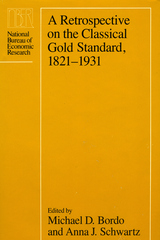 A Retrospective on the Classical Gold Standard, 1821-1931
Edited by Michael D. Bordo and Anna J. Schwartz
University of Chicago Press, 1984 This is a timely review of the gold standard covering the 110 years of its operation until 1931, when Britain abandoned it in the midst of the Depression. Current dissatisfaction with floating rates of exchange has spurred interest in a return to a commodity standard. The studies in this volume were designed to gain a better understanding of the historical gold standard, but they also throw light on the question of whether restoring it today could help cure inflation, high interest rates, and low productivity growth.
The volume includes a review of the literature on the classical gold standard; studies the experience with gold in England, Germany, Italy, Sweden, and Canada; and perspectives on international linkages and the stability of price-level trends under the gold standard. The articles and commentaries reflect strong, conflicting views among hte participants on issues of central bank behavior, purchasing-power an interest-rate parity, independent monetary policies, economic growth, the "Atlantic economy," and trends in commodity prices and long-term interest rates. This is a thoughtful and provocative book.
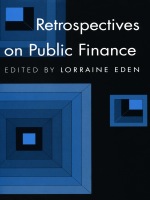 Retrospectives on Public Finance
Lorraine Eden, ed.
Duke University Press, 1991 Retrospectives on Public Finance contains original analyses by internationally recognized public finance scholars, including Carl Sumner Shoup, one of the discipline’s most famous practitioners. Shoup, along with Richard Musgrave and his students, pioneered the “prescriptive” or “political economy school” of public finance known for its hands-on approach and its commitment to applying theory to real world problems. Each contributor provides a retrospective on Shoup’s various contributions to the field, reviewing the literature and assessing its relevance to current problems in public finance theory and policy. The essays highlight and analyze fiscal theory and public policy developments from the 1930s to the present in four areas: the Shoup tax missions to Japan, Venezuela, and Liberia; the tax mix; the expenditure mix; and macro public finance. Contributors. Lorraine Eden, Carl S. Shoup, Malcolm Gillis, Minoru Nakazato, Charles E. McLure Jr., John Bossons, Richard Goode, William Vickery, Wayne Thirsk, John Graham, Stanley Winer, W. Irwin Gillespie, Melville L. McMillan, Cliff Walsh, John G. Head, Enid Slack, Edwin G. West, Richard M. Bird, Peggy B. Musgrave, Douglas A. L. Auld, John B. Burbidge, Jack M. Mintz, John Sargent, Richard A. Musgrave
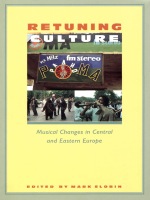 Retuning Culture: Musical Changes in Central and Eastern Europe
Mark Slobin
Duke University Press, 1996 As a measure of individual and collective identity, music offers both striking metaphors and tangible data for understanding societies in transition—and nowhere is this clearer than in the recent case of the Eastern Bloc. Retuning Culture presents an extraordinary picture of this phenomenon. This pioneering set of studies traces the tumultuous and momentous shifts in the music cultures of Central and Eastern Europe from the first harbingers of change in the 1970s through the revolutionary period of 1989–90 to more recent developments. During the period of state socialism, both the reinterpretation of the folk music heritage and the domestication of Western forms of music offered ways to resist and redefine imposed identities. With the removal of state control and support, music was free to channel and to shape emerging forms of cultural identity. Stressing both continuity and disjuncture in a period of enormous social and cultural change, this volume focuses on the importance and evolution of traditional and popular musics in peasant communities and urban environments in Hungary, Poland, Romania, Russia, the Czech Republic, Ukraine, the former Yugoslavia, Macedonia, and Bulgaria. Written by longtime specialists in the region and considering both religious and secular trends, these essays examine music as a means of expressing diverse aesthetics and ideologies, participating in the formation of national identities, and strengthening ethnic affiliation. Retuning Culture provides a rich understanding of music’s role at a particular cultural and historical moment. Its broad range of perspectives will attract readers with interests in cultural studies, music, and Central and Eastern Europe. Contributors. Michael Beckerman, Donna Buchanan, Anna Czekanowska, Judit Frigyesi, Barbara Rose Lange, Mirjana Lausevic, Theodore Levin, Margarita Mazo, Steluta Popa, Ljerka Vidic Rasmussen, Timothy Rice, Carol Silverman, Catherine Wanner
 Return
Raharimanana
Seagull Books, 2025 A powerful testament to writing as an act of beauty and rebellion that speaks truth and condemns violent legacies and a feverish ode that weaves together personal and national history to finally find healing. This evocative novel from a great figure of Malagasy literature tells the story of Hira, a writer born on the seventh anniversary of Madagascar’s independence. He wanders through different cities on a book tour, but the experience is amnesiac and confusing. There is a past he is trying to reckon with, filled with violence against both his family and country. He runs from his wife and represses his memories until it all explodes in fever dreams and a vomit of words. But to write the rebirth that he yearns for, Hira must write of his father’s torture, his tortured island, and how both were juxtaposed to his own happy childhood. In combing through these various pasts, he might make the same mistake his father did: trying to change the world but leaving his own family broken. Drawing from the lived experience of both the author and his parents, the violence of both life and language, and the stories of both myth and history, Return is a search for an individual’s place within larger collective trauma. Infused with Raharimanana’s signature poeticism and intensity, this is a masterwork by an as-yet-overlooked but essential voice in the postcolonial tradition.
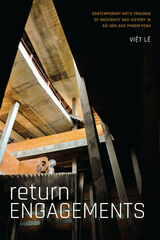 Return Engagements: Contemporary Art's Traumas of Modernity and History in Sài Gòn and Phnom Penh
Viet Lê
Duke University Press, 2021 In Return Engagements artist and critic Việt Lê examines contemporary art in Cambodia and Việt Nam to rethink the entwinement of militarization, trauma, diaspora, and modernity in Southeast Asian art. Highlighting artists tied to Phnom Penh and Sài Gòn and drawing on a range of visual art as well as documentary and experimental films, Lê points out that artists of Southeast Asian descent are often expected to address the twin traumas of armed conflict and modernization, and shows how desirable art on these themes is on international art markets. As the global art market fetishizes trauma and violence, artists strategically align their work with those tropes in ways that Lê suggests allow them to reinvent such aesthetics and discursive spaces. By returning to and refashioning these themes, artists such as Tiffany Chung, Rithy Panh, and Sopheap Pich challenge categorizations of “diasporic” and “local” by situating themselves as insiders and outsiders relative to Cambodia and Việt Nam. By doing so, they disrupt dominant understandings of place, time, and belonging in contemporary art.
Return Flights
Jarita Davis
Tagus Press, 2016 These poems—varying from narrative to imagist to lyrical—reflect the "sodade" of Cape Verdean culture that is shaped by separation and longing—longing for the home that has been left behind and for loved ones who have departed. Cape Verdean communities extend beyond national boundaries and are paradoxically independent of place, even when inspired by it. Return Flights marks a turning point for Cape Verdean American culture, one in which a partially forgotten past becomes a starting point for possible futures, both of new transoceanic contacts and of new reinventions of culture.
|
|

